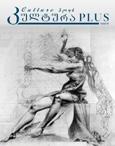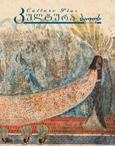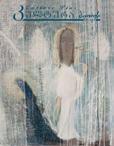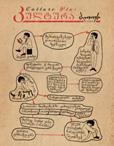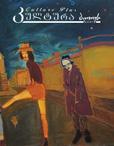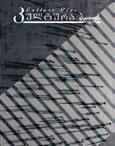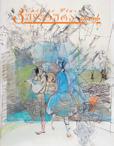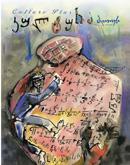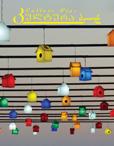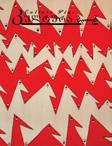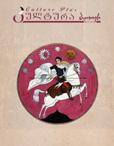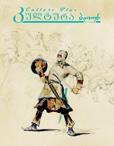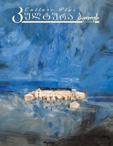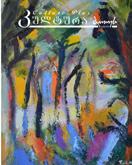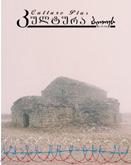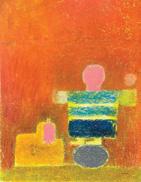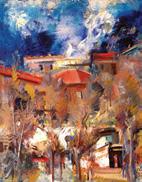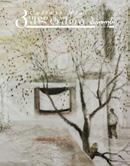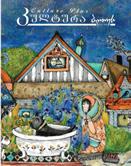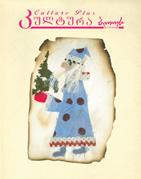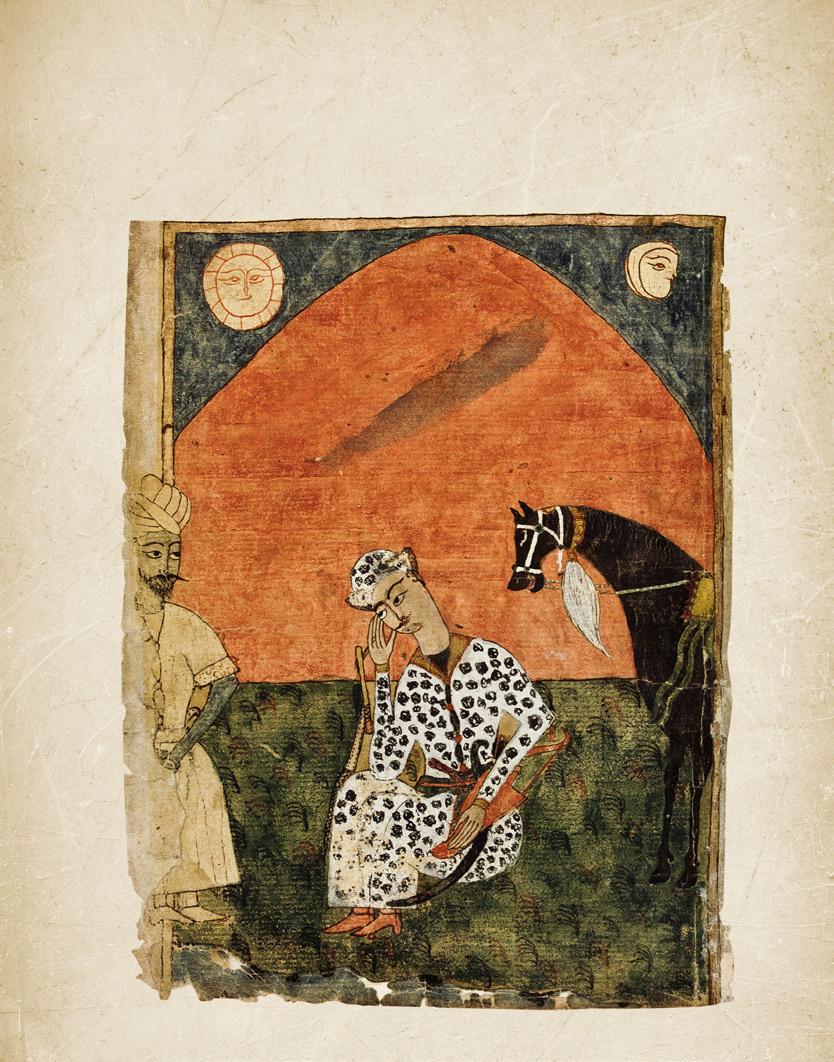
2 (40) 2025
saganmanaTleblo-sazogadoebrivi Jurnali


2 (40) 2025
saganmanaTleblo-sazogadoebrivi Jurnali
2 „TavaqaraSviliseuli~ vefxistyaosnis mxatvroba THE ILLUSTRATIONS OF THE “TAVAKARASHVILI MANUSCRIPT” OF “THE KNIGHT IN THE PANTHER’S SKIN”
12 grigol robaqiZis erTi ucnobi werili AN UNKNOWN LETTER BY GRIGOL ROBAKIDZE
18 balo! baloo! / BALO! A CRY FROM THE DEPTHS OF TIME
24 eh, guram gabiZaSvilo, guram! / REMEMBERING GURAM GABIDZASHVILI
36 sinas mTa / MOUNT SINAI
44 marina ivaniSvili / MARINA IVANISHVILI
58 iliko morCilaZe - erTi gundis ukvdavi xma / ILIKO MORCHILADZE – THE IMMORTAL VOICE OF A CHOIR
62 BASSO CONTINUO...
70 idumali samyaro fardis miRma / THE MYSTERIOUS WORLD BEHIND THE CURTAIN
82 qarTuli „moZravi aso~ / GEORGIAN MOVABLE TYPE
92 nodar tabiZe - da zecas vumzer saxuravidan... NODAR TABIDZE AND I GAZE AT THE SKY FROM THE ROOFTOP…
saredaqcio jgufi / EDITORIAL STAFF
revaz iukuriZe / REVAZ IUKURIDZE
xaTuna kereseliZe / KHATUNA KERESELIDZE
ekaterine CulaSvili / EKATERINE CHULASHVILI
gvanca fifia / GVANTSA PIPIA
mariam gabedava / MARIAM GABEDAVA
dizaineri / DESIGNER
nikoloz bagrationi / NIKOLOZ BAGRATIONI
el-fosta: kulturaplusm@gmail.com facebook.com/kulturaplusm www.kulturaplus.ge
beWdva: favoriti stili / Print: Favorite style
gamodis kvartalSi erTxel / Issued quarterly JurnalSi ganTavsebuli masalis gamoyeneba SeiZleba mxolod redaqciis TanxmobiT The materials published in this magazine cannot be used without the authorization of the editorial staff fotomasalis mowodebisTvis madlobas vuxdiT korneli kekeliZis saxelobis saqarTvelos xelnawerTa erovnuli centrs
ISSN 2346-8165

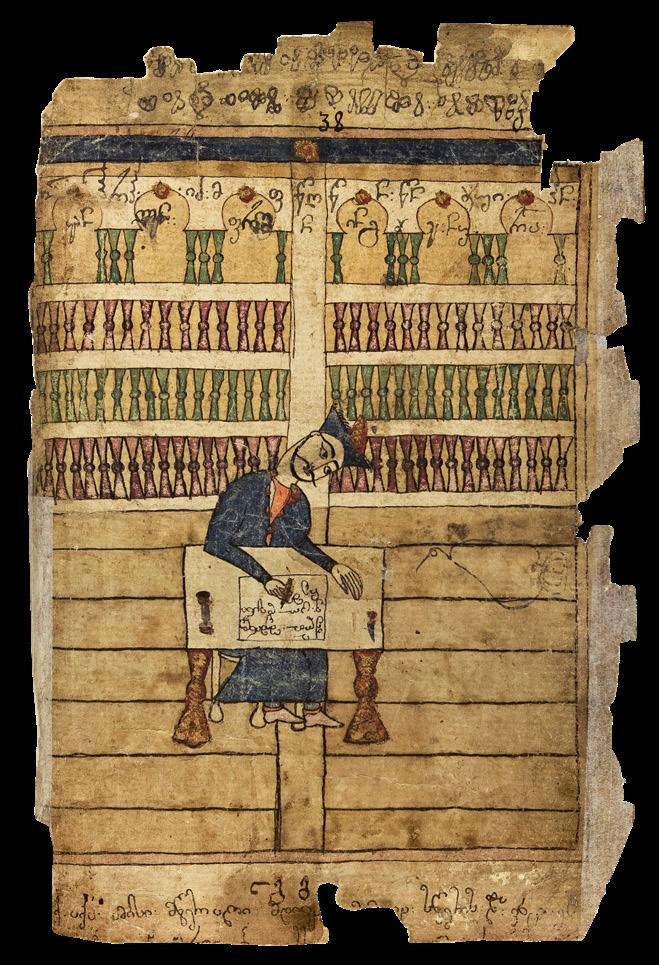
eTer ediSeraSvili
„TavaqaraSviliseuli~
ETER EDISHERASHVILI
THE “TAVAKARASHVILI MANUSCRIPT” OF “THE KNIGHT IN THE PANTHER’S SKIN”
„TavaqaraSviliseulis~ saxeliT cnobili „vefxistyaosnis“ nusxa da misi mxatvroba poemis dRemde moRweul xelnawerebs Soris erT-erTi yvelaze cnobili da gamorCeulia mxatvruli, kulturuli da istoriuli TvalsazrisiT. is daculia korneli kekeliZis saxelobis saqarTvelos xelnawerTa erovnul centrSi H 599 SifriT. xelnaweri (27x19 sm.) 267 furclisgan Sedgeba da naweria mxedruliT, qaRaldze. xelnawers mTel gverdze gaSlili 39 miniatura amkobs. mxatvrul-stiluri maxasiaTeblebis mixedviT aSkaraa rom 38 ilustracia, romelic poemis sxvadasxva epizods asuraTebs, xelnaweris Seqmnis procesSia CarTuli da erTi ostatis xels ekuTvnis. erTi maTgani ki, romelic imeorebs TinaTinis taxtze dasmis scenas, sparsuli miniaturisgan mZlavrad STagonebuli mxatvrul-stiluri maxasaTiaTeblebiT mkveTrad sxvaobs danarCenebisgan. savaraudod, is sxva xelnawers ekuTvnoda da am nusxaSi xelnaweris Seqmnis Semdeg unda iyos CarTuli.
TavaqaraSviliseuli `vefxistyaosani“ sadReisod poemis Cvenamde moRweul pirvel TariRian nimuSad iTvleba. misi dRevandeli saxelwodeba gadamweridan, mamuka TavaqaraSvilidan momdinareobs, romlis vinaobas da xelnaweris Seqmnis istoriasac TandarTuli anderZminawerebi avlens: „q. RmerTo Semindev codvani Cem...~ qvemoT miwerilia: „aqa amisi mwerali mdivani mamuka swers da vinc es...~ (252 r).
mamuka TavaqaraSvili imereTis samefos mdivanTa sagvareulos warmomadgeneli da imerTa mefis, aleqsandre III-s (1639-1660) mdivani iyo. igi 1634 wels tyved Cauvarda levan II dadians (1611-1657), mas mere rac am ukanasknelma Tavis mokavSiresTan _ rostom qarTlis mefesTan (1633-1658) erTad kakas xidTan gamarTul brZolaSi imereTis mefe giorgi (1604-1639) da kaxeTis mefe Teimurazi (1606-1648) daamarcxa. TavaqaraSvilma odiSis samTavroSi, tyveobaSi, 23 weli gaatara. swored levan II dadianis dakveTiT, misive karze yofnisas gadawera 1646 wels „vefxistyaosnis~ nusxa _ `dideba srulmyofelsa RmerTsa, yovelTa Semwe-mfarvelsa. viwye es vefxistyaosani TibaTvesa cametsa, srul vyav
The manuscript of “The Knight in the Panther’s Skin” known as the “Tavakarashvili Manuscript” and its illustrations represent one of the most renowned and distinguished among the extant handcopied versions of the poem, in terms of its artistic, cultural, and historical value. It is preserved at the Korneli Kekelidze Georgian National Centre of Manuscript under the catalog number H 599. The manuscript (27x19 cm) consists of 267 folios and is written



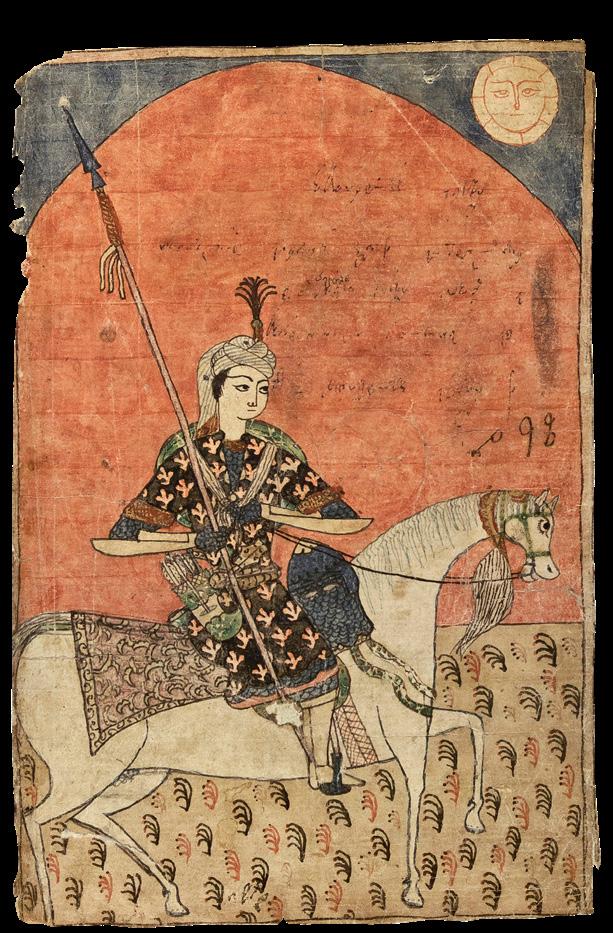


Tvrametsa agvistosa, q-ksa samas ocdaToTxmetsa. Tu ram akldes, nuravin damwyevliT, tyveobaSid vswerdi. SigniT ocdacxra rveuli aris, furceli oras ocdaTormeti“. (267 v). mkvlevarTa Soris mxatvrobis avtoris Sesaxeb mecnierTa azri orad iyofa: nawili mamuka TavaqaraSvilsve miiCnevs momxatvelad, xolo nawili am mosazrebas ar iziarebs.
„vefxistyaosnis~ dasuraTeba mkiTxvelis winaSe zemoT moyvanili minaweris erTgvari ilustraciiT „ixsneba“, romelic xelnaweris Seqmnis istoriasTan erTad, misi damkveTis pirovnul Strixebsa da Tanadrouli epoqis msoflmxedvelobasac warmoaCens. pirvelive miniaturaze kompoziciis zeda nawilSi, centrSi warmodgenilia levan dadianis frontaluri, aRmosavlur yaidaze muxlmoyrili, gamosaxuleba or mxlebels Soris. qveda registrSi ki, erTmaneTis pirispir, 3/4-Si mocemuli aseve muxlmorTxmiT mjdomi ori figuraa gamosaxuli. mkvlevarTa mosazrebis Tanaxmad, SoTa rusTaveli poemis teqsts karnaxobs gadamwers, mamuka
in the mkhedruli script on paper. It is adorned with 39 full-page miniatures. Based on its stylistic features, it is evident that 38 of these illustrations – depicting various episodes from the poem – were executed during the creation of the manuscript and are the work of a single artist. One miniature, however, which repeats the scene of Tinatin’s enthronement, markedly differs from the others in its stylistic characteristics, being heavily inspired by Persian miniature painting. It likely belonged to another manuscript and was added to this one after the main manuscript was completed.
Today, the “Tavakarashvili Manuscript” of “The Knight in the Panther’s Skin” is considered the earliest dated version of the poem that has survived. Its current name derives from the scribe, Mamuka Tavakarashvili, whose identity and connection to the manuscript are revealed in accompanying colophons: “Lord, forgive my sins…” followed by: “Here the writer of this, scribe Mamuka, writes, and who…”.
Mamuka Tavakarashvili was a member of a noble family of royal scribes in the Kingdom of Imereti and served as a scribe to King Alexander III of Imereti (r. 1639–1660). In 1634, he was taken prisoner by Levan II Dadiani (r. 1611–1657), after the latter, allied with Rostom, King of Kartli (r. 1633–1658), defeated King Giorgi of Imereti (r. 1604–1639) and King Teimuraz of Kakheti (r. 1606–1648) at the Battle of Kakaxidi. Tavakarashvili spent 23 years in captivity in the Principality


TavaqaraSvils, romlis muxlebze gaSlil gragnilzec ikiTxeba: „q. ese ambavi...~. mamuka TavaqaraSvilis kidev erT, magidasTan mjdom, weris procesSi warmodgenil portrets vxvdebiT xelnaweris bolos. aRsaniSnavia, rom gadamweris gamosaxva (Tan orgzis!), aseve misi qtitorTan warmodgena, qarTuli Sua saukuneebis miniaturisTvis iSviaT movlenas warmoadgens da rogorc xelnaweris damkveTis, aseve mdivan-mwignobris statussa da mniSvnelovanebaze miuTiTebs. sagulisxmoa da gansakuTrebiT aRsaniSnic levan II dadianis gamosaxuleba, romlis portretuli Strixebi _ mogrZo saxis ovali, grZeli, swori cxviri da axloaxlo Camjdari viwro Tvalebi, asociacias iwvevs kedlis mxatvrobasa Tu Weduri xelovnebis nimuSebze warmodgenil mTavris portretebTan (walenjixis, xobis, korcxelis eklesiaTa moxatulobani, korcxelis winaswarmetyvelTa da iloris wminda giorgis Weduri xatebi _ yvela XVII saukune). xelnaweris pirvelsave gverdze sakuTari reprezentaciuli portretis gamosaxva da xelnaweris Seqmnis istoriis ilustrireba levan dadianis mkafio ganacxadi iyo Tu ra mniSvneloba hqonda misTvis „vefxistyaosnis~ gadaweras da misi mxatvrobiT Semkobas da rac, srulad epasuxeboda mis kulturul Tu politikur nabijebs. odiSis samTavros mmarTveli im gamorCeul istoriul figuraTa Soris dgas, romelmac, aqtiuri kulturuli saqmianobis da interesTa mravalferovnebis Sedegad, mniSvnelovani mxatvruli memkvidreoba datova. levan dadianis karze Tavs iyridnen sxvadasxva qveynidan mowveuli ostatebi da mxatvrebi, ikribebodnen vaWrebi da misionerebi, romelTac, mTavari did mxardaWeras ucxadebda. gviani Sua saukuneebis qarTuli xelovneba da kulturuli sivrce rTulad warmosadgenia misi patronaJiT Seqmnili oqromWedlobis, kedlis mxatvrobisa Tu sxva nimuSebis gareSe.
TavaqaraSviliseuli nusxac, Tavisi mxatvruli gaformebiT, levan dadianis dakveTiT Seqmnil nimuSebsa Tu gviani Sua saukuneebis qarTul xelnawer memkvidreobaSi gansakuTrebul adgils ikavebs. „vefxistyaosnis~ miniaturebis mxatvrulgamomsaxvelobiTi xerxebi da garkveul SemTxvevebSi Sinaarsic ki, Sua saukuneebis da axal, realizmis elementebSeparuli droebis mijnis anarekls warmoadgens. Sua saukuneebis rainduli eposi mxatvrisTvis, TiTqos, Cveulebriv ambad qceula, romlis epizodebsac dawvrilebiT gadmoscems sxvadasxva suraT-xatiT: xelnawerSi erTmaneTs mosdevs teqstis sakvanZo ambebis amsaxveli, brZolis Tu yofiTi scenebi Tanmxlebi mxedruli, ganmartebiTi xasiaTis warwerebiT: TinaTinis gamefeba, ucxo moymis naxva, avTandilis anderZi, tarielis
of Odishi. It was during this time, at the court of Levan II Dadiani and at his commission, that he transcribed the poem in 1646:
“Glory to the perfect God, helper and protector of all. I began this Knight in the Panther’s Skin on the thirteenth of June, and completed it on the eighteenth of August, in the year 334 of the chorinicon. If anything is missing, may no one curse me – I was writing in captivity. There are twenty-nine gatherings inside, totaling two hundred and twelve folios.” Scholarly opinion is divided over the authorship of the manuscript’s illustrations: some consider Mamuka Tavakarashvili himself to be the artist, while others disagree with this view.
The illustrated opening of “The Knight in the Panther’s Skin” can be seen as a visual preface to the above-quoted colophon. Alongside the manuscript’s origin story, it also conveys the personal traits of its patron and the worldview of the period. In the very first miniature, at the top of the composition, frontally and in an Eastern style, Levan Dadiani is shown kneeling between two attendants. In the lower register, two other kneeling figures face each other in three-quarter view. According to scholars, the poet Shota Rustaveli is depicted dictating the text to the scribe Mamuka Tavakarashvili, who holds an open scroll on which the words “This tale…” can be read. Another portrait of Mamuka Tavakarashvili appears at the end of the manuscript, this time seated at a desk in the act of writing. It is noteworthy that the scribe’s depiction (especially depicted twice), as well as his presentation alongside the patron, is an unusual occurrence in medieval Georgian miniature painting and underscores both the significance of the commissioner and the elevated status of the scribe.
Particularly notable is the image of Levan II Dadiani, whose portrait features – an elongated oval face, long straight nose, and closely set narrow eyes – evoke comparisons with depictions of princes in wall paintings and repoussé works (such as frescoes in the churches of Tsalenjikha, Khobi, and Kortsheli, or repoussé icons of the Prophets of Kortsheli and St. George of Ilori – all from the 17th century). The inclusion of his own portrait on the very first page of the manuscript, as well as the illustration of the manuscript’s creation story, served as Levan Dadiani’s emphatic declaration of how significant the copying and embellishment of “The Knight in the Panther’s Skin” was to him. This act fully aligned with his broader cultural and political agenda. As ruler of the Principality of Odishi, Levan Dadiani stands among those outstanding historical figures whose active cultural engagement and broad range of interests left behind a rich artistic legacy. His court hosted artists and craftsmen invited from various countries, along with merchants and missionaries, all of whom enjoyed his strong support. The art and culture of late medieval Georgia would be hard to imagine without the goldsmithing, mural painting, and other works created under his patronage.
The Tavakarashvili Manuscript, with its artistic embellishments, holds a special place among Levan Dadiani’s commissioned


da avTandilis Sexvedra, tarielis brZola lom-vefxTan, qajeTis cixis brZola da sxv. poemis epizodebTan erTad, gansakuTrebiT, sagulisxmo iseTi ambebis ilustrirebaa, rogoric nestan-darejanisa da tarielis gardacvaleba da maTi datirebaa, rac cnobilia, rom poemis Semdgom, e.w. xalxur danamatebs warmoadgenda. am scenaSive Cndeba welszeviT moSiSvlebul motiralTa jgufi, romelTac xeli TmaSi wauvliaT an TavSi icemen. saintereso da erTgvarad ucnauri moCans „vefxistyaosanSi~ am uCveulo scenis gamoCena. am mxriv sagulisxmo cnoba Cndeba 1633-1649 wlebSi samegreloSi mcxovrebi TeatinelTa ordenis misioneri beris, arqanjelo lambertis „samegrelos aRweraSi“, saidanac Cans rom kolxeTSi micvalebulTa datirebis imdroindeli wesis Sesabamisad, procesis erT-erT nawils WirisufalTa wels zemoT gaSiSvleba da micvalebulis datireba warmoadgenda. am scenis, „vefxistyaosnis~ epizodebsa da mis dasuraTebaSi SeRweva im axali droebis mkafio niSani iyo, romelic TandaTan scildeboda Sua saukuneebis msoflmxedvelobas da realobisken swrafvis ufro da ufro mZafr survils avlenda.
TavaqaraSviliseuli nusxis `vefxistyaosnis~ mxatvrobas e.w. xalxuri nakadis da, erTi SexedviT, aRmosavluri xelovnebis elferic dahkravs, rasac ukve xsenebul yofiT elementebTan da modasTan erTad, mxatvrul-gamomsaxvelobiTi saSualebebic qmnis. miuxedavad imisa, rom mxatvari SesaZloa Cveni drois mnaxvelis TvalisTvis Cveul, saTanado profesiul ganswavlulobas iyo moklebuli, simartiviT, „gauwafaobiT~ da koloritis Tu xazis ostaturi SepirispirebiT, araCveulebrivad gamomsaxveli personaJebis, siuJetebis da zogadad, miniaturebis sruliad TviTmyofad mxatvrul saxes qmnis. kompoziciebi simetriulia, figurebi da samoqmedo garemo Tanabarzomierad ganawilebuli, ise, rom maTi mimoxilvisas mnaxvelis Tvali erTianad aRiqvams mocemuli ambis sakvanZo moments. figurebis Tu kompoziciis Semadgeneli sxva nawilebis konturi odnav mouxeSo, muqi yavisferi, moSavo xaziT isazRvreba, romelsac akvareliseburi vardisfris, mewamulis, oqris, mwvanis, lurjis da wiTlis SeTanxmebiT miRebuli sisadave avsebs. gamosaxulebebi sruliad sibrtyobrivia da dinamiurobis STabeWdilebas kompoziciebSi figuraTa ganlageba, maTi da garemos urTierTmimarTeba qmnis _ kompoziciebis SemomsazRvreli CarCodan gamosuli Tu SigniT „SeWrili~ figurebi, moqmedi pirebisa da arqiteqturis Tu sxva yofiTi elementebis urTierTganlageba, perspeqtivis sibrtyobrivi aRqma da sxv.
works and within the broader tradition of late medieval Georgian manuscript heritage. The stylistic and expressive devices used in “The Knight in the Panther’s Skin” miniatures – and in some cases even their content – reflect a transitional moment between the medieval and early modern periods, enriched with emerging realist elements. The medieval knightly epic seems to have become familiar ground for the artist, who vividly illustrates its episodes through numerous narrative images: scenes of Tinatin’s coronation, the encounter with the foreign knight, Avtandil’s testament, the meeting of Tariel and Avtandil, Tariel’s battle with the lion-panther, the siege of the fortress of Kajeti, and others, all accompanied by explanatory captions in the mkhedruli script.
Alongside the poem’s canonical episodes, especially noteworthy is the illustration of scenes such as the deaths of Nestan-Darejan and Tariel and their mourning – events known to originate not from the poem itself but from the so-called folk additions that followed. In this very scene, a group of mourners appears bare-chested from the waist up, pulling at their hair or striking their heads in grief. The appearance of such an unusual scene in ”The Knight in the Panther’s Skin” is both curious and thought-provoking. In this regard, a compelling clue emerges in A Description of Samegrelo by Archangelo Lamberti, a Theatine missionary monk who lived in Samegrelo between 1633 and 1649. From this account, we learn that in Colchis, one part of traditional mourning rituals involved mourners baring their upper bodies while weeping for the deceased. The insertion of such a scene into the illustrated episodes of “The Knight in the Panther’s Skin” thus signals a clear departure from a medieval worldview and reveals a growing desire for realistic representation – a sign of the changing times.
The artwork in the Tavakarashvili manuscript of “The Knight in the Panther’s Skin” bears the aesthetic trace of what is known as the “folk stream,” with a distinct overtone of Eastern visual tradition. This impression is created not only by the domestic details and stylistic choices already mentioned but also by the expressive and compositional techniques employed by the artist. Though the painter may not have possessed the formal training expected by modern standards, the simplicity and so-called “naivety” of the miniatures, combined with a masterful handling of color contrasts and line work, result in strikingly expressive characters and scenes. These elements give the miniatures a unique and self-contained artistic identity. The compositions are symmetrical, the figures and narrative environments evenly balanced, allowing the viewer’s gaze to take in the entire central moment of the depicted story at once. The contours of the figures and other compositional elements are outlined with slightly rough, dark brown or nearly black lines, which are softened and enriched by a harmonious palette of watercolor-like pinks, purples, golds, greens, blues, and reds. The images are entirely flat, and the illusion of movement is conveyed through the spatial arrangement of figures and their relationship to the environment – characters

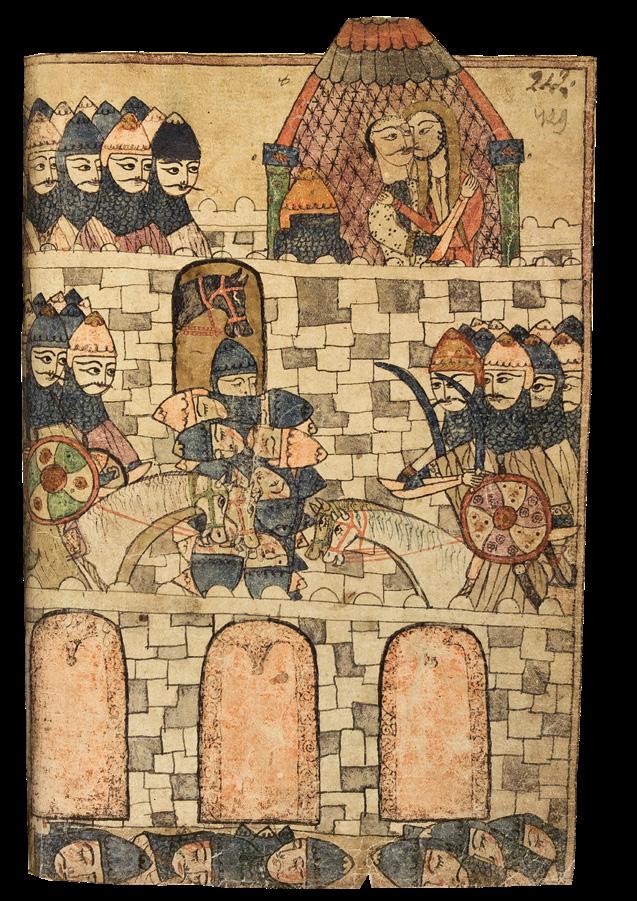

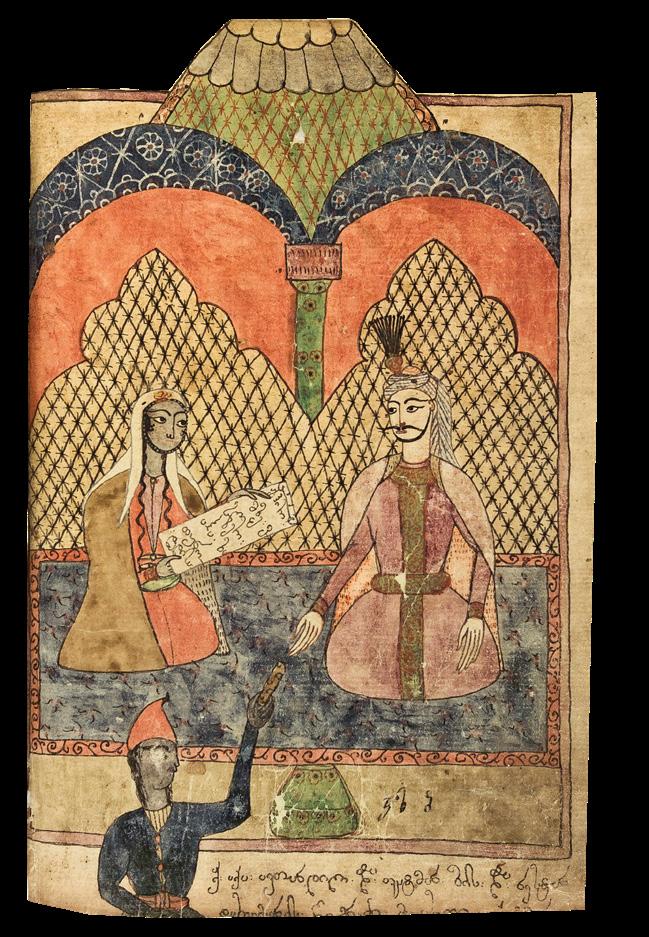
tipaJebi, maTi samoqmedo garemo _ anturaJi, arqiteqtura, yofiTi nivTebi, varcxniloba da samosi, qarTuli da sparsuli elementebis „Tanacxovrebis~ amsaxvelia. yovelive es swored rom imdroindeli yofis ilustracias warmoadgens, romelSic ukve mZlavradaa SemoWrili da damkvidrebuli aRmosavluri kulturuli gavlena _ ara mxolod im drois artefaqtebi, aramed istoriuli wyaroebic (mag., vaxuSti bagrationi „aRwera samefosa saqarTvelosa~ da sxv.). amasTan mimarTebiT, kvlav, arqanjelo lambertis cnobaa yuradsaRebi, romlis Tanaxmadac misi Tanamedrove qarTveli qalebi aRmosavlur yaidaze ixatavdnen pirisaxes. warbebs Savi saRebaviT iRebavdnen, ise rom yurebamde Cadiodnen da cxvirTanac gaerTianebuli hqondaT. Sesabamisad, safiqrebelia, rom mxatvrobis, erTi SexedviT, aRmosavluri mxatvruli saxe sparsuli xelovnebis gavleniT Seqmnili ki ara, aramed, ufro imdroindeli yofis amsaxveli unda iyos. mxatvrisTvis `vefxistyaosnis~ gmirebi mis Tanamedrove garemoSi arsebuli Cveulebrivi adamianebi iyvnen, visac yoveldRe xedavda da ara miuwvdomeli, Sua saukuneebis rainduli elferiT Semosili personaJebi.
Zveli saqarTvelosken mibrunebasa da Tanadrouli epoqis tendenciebis gaziarebaSic ganmsazRvreli, epoqis msoflaRqmaa. qarTuli kulturisTvis XVI-XVII saukuneebi, erTgvarad, xelaxali `aRorZinebis~ xanad moiazreba. sparsul-osmalur politikur Tu kulturul eqspansiasTan dasapirispireblad, samefo-samTavroebad daSlili saqarTvelos erovnuli da sulieri gamoRviZebis epoqad qceuli droebisas Senebis da gamSvenebis iseTi mZafri survili Cndeba, romlis Sedegebic kontrastuladac ki gamoiyureba imxanad ganuwyveteli brZolebisa da ekonomikur-socialuri mdgomareobis fonze. igeba da ixateba eklesiebi, iqmneba Weduri, ferweruli xatebi da xelnawerebi. im drois saxviTi xelovneba mxatvrul mimarTulebaTa mravalferovnebiTaa gamorCeuli: e.w. xalxur nakadTan erTad, arsebobas ganagrZobs post-bizantiuri stili da ukve Semosulia iranuli kulturis gavlenebi. am yovelives Tan erTvis maSin, ukve, CvenSi SesamCnevad Semosuli evropuli xelovnebisadmi swrafvac. am mravalferovan da kulturul gzajvaredinze TavaqaraSviliseuli „vefxistyaosnis“ mxatvroba, Tavisi individualuri maxasiaTeblebiT, ufro sainteresod Cndeba da mnaxvels saTayvanebeli eposis dasuraTebasTan erTad, XVII saukunis Sua xanis saqarTvelos kulturas, yofas da saxviTi xelovnebis tradiciebs aziarebs.
or objects that cross the framing border of the composition, or appear embedded within it; the juxtaposition of protagonists and architectural or domestic elements; the use of flat perspective, and more.
The characters themselves, as well as their surroundings –architecture, furnishings, hairstyles, and costumes – reflect a coexistence of Georgian and Persian elements. All of these details serve as visual documentation of contemporary life, in which Eastern cultural influence had already taken deep root. This was not only evident in material artifacts of the time but also in historical accounts – for example, Vakhushti Bagrationi’s Description of the Kingdom of Georgia, among others. A relevant detail again comes from Archangelo Lamberti, who observed that contemporary Georgian women would paint their faces in an Eastern manner: their eyebrows were dyed with black pigment, extended to the ears, and joined at the bridge of the nose. Thus, it is more likely that the seemingly “Eastern” style of the miniatures is not directly a product of Persian artistic influence, but rather a reflection of the lived reality of the time. For the painter, the heroes of “The Knight in the Panther’s Skin” were not distant, idealized figures clad in medieval chivalric splendor, but ordinary people from their contemporary surroundings – people he saw every day.
This dual movement – toward the heritage of old Georgia and the simultaneous embrace of contemporary trends – was driven by the prevailing worldview of the time. The 16th–17th centuries are often seen as a kind of cultural “Renaissance” for Georgia. In an era when the fragmented kingdoms and principalities of Georgia faced political and cultural expansionism from Persia and the Ottoman Empire, a powerful desire emerged for national and spiritual renewal. This desire to build and embellish was especially vivid, even amidst near-constant warfare and economic hardship. Churches were built and painted, ruined or damaged monuments restored, and elaborate metalwork, icons, paintings, and manuscripts were created. The visual arts of this period are remarkable for their stylistic diversity: alongside the so-called folk stream, the post-Byzantine tradition persisted, while Iranian influences had clearly made their mark. Added to this mix was an increasingly noticeable attraction to European art. Within this rich and culturally crossroads-laden context, the illustration of “The Knight in the Panther’s Skin” in the Tavakarashvili manuscript stands out even more for its individuality. Alongside the visual narration of Georgia’s beloved national epic, it also offers a window into the material culture, worldview, and artistic traditions of 17th-century Georgia.
nugeSa gagniZe
NUGESHA GAGNIDZ
wlebi gadis grigol robaqiZis teqstebisa da masze dawerili kritikuli werilebis ZiebaSi. bevric vipove, magram vici, rom sadRac, romeliRac arqivisa Tu biblioTekis jadosnur sacavebSi, kidev iqneba saintereso masalebi, romlebic naTels mohfenen orjer emigrirebuli mwerlis cxovrebisa da Semoqmedebis burusiT mocul ambebs.

Years go by in my search for texts by Grigol Robakidze and critical writings about him. I have found many, yet I know that somewhere – in the enchanted repositories of some archive or library – there are still undiscovered materials that could shed light on the life and work of this twice-exiled writer, enshrouded in mystery.
Sometimes I feel Grigol is already someone close to me, a family member, a part of my life. But then, a newly discovered note can suddenly remind me that I still haven’t fully come to know this strange gentleman. His manuscripts, publications, or fragments of literary texts often surface at the most unexpected times and in the most unexpected places.
This time, I want to tell you about a short letter I came across by chance in the Kutaisi Central Archive.
The archive truly feels like a magical realm. You never know what you’ll stumble upon. You wander through epochs, past centuries, unearthing forgotten stories of statesmen and artists, along with impressive, eloquent photographs. Sometimes, the allure of these old tales is so strong that you forget the very reason you came to this treasury. This is exactly what happened on a sunny day in September 2024. That morning, I began researching the family histories of the Margvelashvilis and Khechinashvilis – ancestors of writer Givi Margvelashvili. These remarkable individuals endured so much pain and hardship during the first quarter of the 20th century. There is so much we must know – and yet don’t. And then, completely by chance, I came upon a letter by Grigol Robakidze in the archival files of Thaddeus Margvelashvili – the father of historian Tite Margvelashvili and grandfather of postmodernist writer Givi Margvelashvili. The card is dated March 9, 1911.
We have only scant material about Grigol Robakidze’s activities in 1911–1912. The writer himself rarely references this period in his autobiographical writings. My own research suggests that during these years, Robakidze was primarily giving lectures and engaging in journalistic work. His public talks – on literature, philosophy, and political issues – captivated audiences. In fact, in 1911, Akaki Tsereteli attended one of Robakidze’s lectures and was so inspired he declared, “The tree of our nationality is not yet withered.”
Enchanted by the young man, the national poet soon published an article in the newspaper “Thema”, writing, “The lecturer revealed himself to me as the first swallow, herald of spring. Now I see that, after a long winter, spring is coming to Georgian intellectual life as
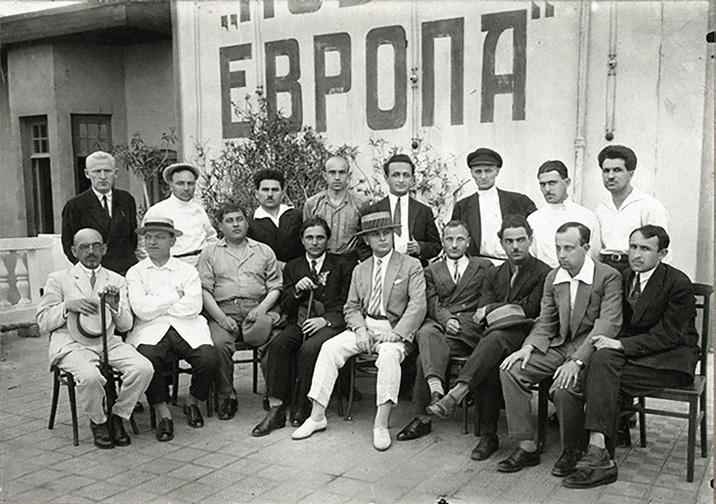
xandaxan vfiqrob, rom grigoli ukve Cemi axlobelia, ojaxis wevria, Cemi cxovrebis nawilia. magram, uceb, erTma axladaRmoCenilma patara baraTma SeiZleba magrZnobinos, rom bolomde mainc ver gavicani es ucnauri batoni. Tanac iseT dros da iseT adgilas aRmoCndeba misi xelnaweri, publikacia an mxatvruli teqstis fragmenti, sul rom ar eli.
amjerad giambobT erT patara werilze, romelic SemTxveviT vipove quTaisis centralur arqivSi. marTlac rom zRapruli samyaroa arqivSi. ras ar waawydebi aq. daabijeb epoqebSi, gardasul saukuneebSi, poulob usamarTlod miviwyebul eriskacTa da xelovanTa Sesaxeb informaciebs, STambeWdav da mravlismTqmel fotoebs. ise gagitacebs xandaxan Zveli istoriebi, is mTavari SeiZleba kidec migaviwydes, risTvisac am ganZTsacavs ewvie. ase iyo 2024 wlis seqtembris erT mzian dRes. dilaadrian Sevudeqi givi margvelaSvilis winaprebis, margvelaSvilebisa da xeCinaSvilebis ojaxebis istoriebis Ziebas. ramdeni ram gadautaniaT, ramdeni
well. I say with joy, soaring to the seventh heaven: blessed be the future!”
The letter by Grigol Robakidze that I found in Kutaisi’s Central Archive is important above all because it contributes to a deeper understanding of the writer’s biography – particularly his activities during 1911–1912 – and helps uncover some previously unknown or little-known facts. In 1910, Robakidze traveled to Tartu (known as Yuryev) to continue his studies in law. The letter, dated March 9, 1911, was sent from Tartu and begins as follows:
“Brother Kita,
Forgive me for writing such a prosaic letter. But what can a person do when reality betrays him?”
I believe the addressee is Kita Abashidze. It was thanks to him, along with Nino Nikoladze and Giorgi Maiashvili (Zdanovich), that Grigol Robakidze was able to study at the universities of Leipzig, Tartu, and Kazan. A gifted but financially struggling student, Robakidze had a difficult time making ends meet far from home. This is evident from his many letters to Giorgi Maiashvili, which were discovered and studied by Mr. Mikheil Nikoleishvili. They date from
tkivili ganucdiaT am didebul adamianebs meoce saukunis pirvel meoTxedSi. ramdeni ram unda vicodeT da ar viciT! da, ai, uceb Tadeoz margvelaSvilis, istorikos tite margvelaSvilis mamisa da postmodernisti mwerlis givi margvelaSvilis babuis, saarqivo masalebSi sruliad SemTxveviT vipove grigol robaqiZis patara baraTi, dawerili 1911 wlis 9 marts.
1911-1912 wlebSi grigol robaqiZis saqmianobis Sesaxeb masalebi mcire odenobiT mogvepoveba. Tavadac ar wers mwerali avtobiografiul teqstebSi am periodis Sesaxeb. Cemma kvleva-Ziebebma ki im daskvnamde mimiyvana, rom aRniSnul wlebSi igi ZiriTadad leqciebs kiTxulobs da publicistur saqmianobas eweva. msmenelebs aRafrTovanebs misi gasaocari sajaro moxsenebebi literaturis, filosofiisa da politikis problemur sakiTxebze.
1911 wels mousmenia akaki wereTelsac grigol robaqiZisTvis da imedi gasCenia _ „Cveni erovnebis xe jer ar gamxmarao“. misiT moxiblul saxalxo mgosans gazeT `TemSi~ maleve gamouqveynebia statia, romelSic xazgasmiT aRuniSnavs: „leqtorma iCina Tavi Cems TvalSi, rogorc pirvelma mercxalma, gazafxulis maxarobelma. axla ki
1910–1914. In one of them, Robakidze describes the monotony and dullness of life in Tartu, as well as his dissatisfaction with the courses and uninteresting subjects. The same mood is present in the letter to Kita Abashidze, in which Robakidze asks him to send 50 rubles to pay university fees:
“I sent you a telegram last week: 50 rubles (for university fees) – please send it. So far, I’ve received nothing except the monthly allowance. I hope you will send it upon receiving this letter. Giorgi agrees…”
The “Giorgi” mentioned is likely Giorgi Maiashvili uradze (Zdanovich), a Polish-born publicist, economist, and revolutionary populist who was a member of the Social-Revolutionary Organization of All Russia and a loyal patron of Georgian students. He also chaired the Council of Manganese Industrialists in Chiatura. Besides the university fees, Robakidze has another request – he wants to return to Georgia. The reason: his family situation.
“I ask you for one more thing, and I hope you will grant it. I must return to Georgia in mid-April. The main reason: my family has been left without care after the death of my father.”
This final sentence is underlined by the writer. There is little
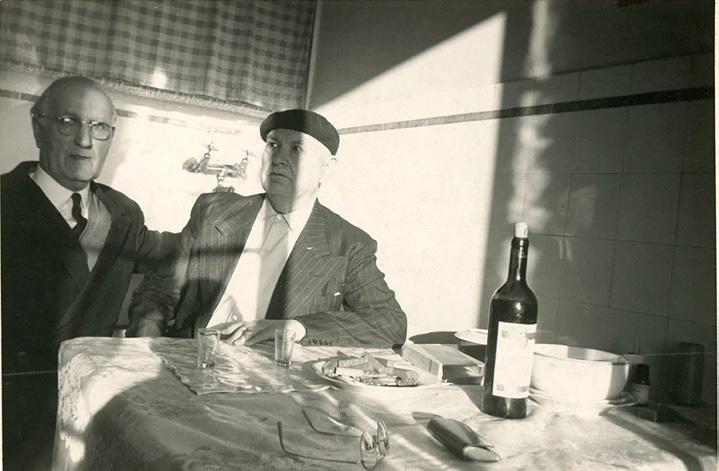

vxedav, rom qarTvel inteligenciasac udgeba xangrZlivi zamTris Semdeg gazafxuli da mec meSvide camde afrenili, vambob sixaruliT: kurTxeul iyos momavali!“
quTaisis centralur arqivSi, Cven mier aRmoCenili grigol robaqiZis werili, pirvel rigSi, imiTaa mniSvnelovani, rom gvexmareba mwerlis biografiis, kerZod ki, 1911-1912 wlebSi misi saqmianobis safuZvlianad Sesaswavlad da zogierTi ucnobi an naklebad cnobili faqtis dasadgenad.
1910 wels grigol robaqiZe tartuSi (iurievi) gaemgzavra, raTa gaegrZelebina iurisprudenciis Seswavla. 1911 wlis 9 martiT daTariRebuli baraTi swored tartudanaa gamogzavnili da igi ase iwyeba:
„Zmao kita!
mapatie amdeni prozauli werili. ra hqnas adamianma, Tu sinamdvile orgulobs!“ vfiqrob, werilis adresati kita abaSiZea. swored
biographical information available about Robakidze’s father, the deacon Tite Robakidze. The writer himself says very little about him in his autobiographical essays. In this sense too, the letter to Kita Abashidze is significant. It seems the father’s death was doubly difficult for the young man, so far from home. Robakidze clearly wants to return to Georgia to support his family, but he doesn’t have the funds. So he writes:
“On April 7–8, the Council will send me 50 rubles, but that won’t be enough for travel. I ask you to send me the full year’s allowance: that is, 130 rubles (excluding the 50 rubles for the university). This amount includes April’s allowance too. In short: upon receiving this letter, please send 50 rubles, and at the beginning of April another 130 rubles. That will complete my annual support.”
Based on materials from the Estonian Historical Archive, we can say that Robakidze did manage to return to Georgia. The archive preserves a letter he sent from Borjomi to the rector of Tartu University, dated August 24, 1912, in which he writes that he is suffering from malaria. Attached to the letter is a medical certificate from Dr. Gomarteli prescribing bed rest until October 10. This is the only known document that confirms Robakidze ever contracted
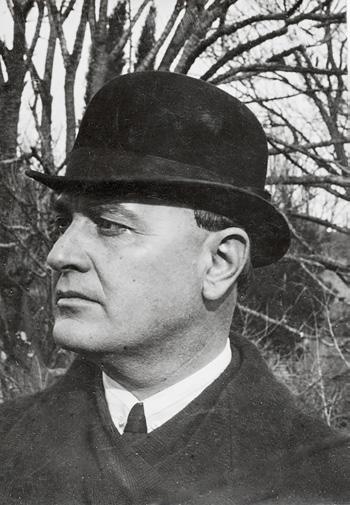
misi, nino nikolaZisa da giorgi maiaSvilis (zdanoviCi) xelSewyobiT swavlobda grigol robaqiZe laifcigis, tartusa da yazanis universitetebSi. niWier, magram xelmokle students uWirda Tavis gatana samSoblodan Sors, rasac adasturebs misi araerTi werili giorgi maiaSvilisadmi, romlebic moiZia da gamoikvlia batonma mixeil nikoleiSvilma. isini 1910-14 wlebSia dawerili. erT-erT maTganSi tartus erTferovani da mosawyeni cxovrebis Sesaxeb wers grigol robaqiZe, rasac emateba ukmayofileba saswavlo procesiTa da uintereso sagnebiT. es ganwyoba igrZnoba kita abaSiZisadmi miweril baraTSic, romelSic robaqiZe mas universitetSi Sesatan 50 maneTs sTxovs. „dReis swors depeSiT mogmarTe: 50 man (univ. Sesatani) gamomigzavneTqo. dRemde araferi momsvlia, garda Tviurisa. imedia, am werilis miRebisTanave momawvdi. giorgi Tanaxmaa...~ giorgi, albaT, giorgi maiaSvilia (zdanoviCi), polonuri warmomavlobis cnobili publicisti, ekonomisti,

malaria – an illness that was widespread in the lowlands of Colchis at the time.
Despite financial difficulties, family burdens, and illness, Robakidze completed the summer semester in 1913 and received a certificate from the Faculty of Law at Tartu University on March 22, 1914, confirming he had studied there for eight semesters. That same year, he enrolled at Kazan University, but did not pass the state exams – World War I had broken out, and he was forced to return home.
The one-page letter to Kita Abashidze contains yet another valuable detail. Robakidze writes:
“I’ll give lectures. The first lecture will be on Friedrich Nietzsche; the second on the idea of Hamlet. My article about Vazha-Pshavela will be published in [the newspaper name is illegible] in an upcoming issue. Other writings will be published as well.”
Between 1911 and 1913, Robakidze was very active as a publicist. During this time, he published works such as “A Necessary Clarification (in response to D. Kasradze’s article),” “On Friedrich Nietzsche,” “The Spirit and Creativity of the Nation,” “Rustaveli the Artist: A Sketch,” “Art and Reality,” “Oscar Wilde,” “Leaves, II: The Integrity of the Nation,” “Letters” and more – in The People’s Newspaper and Golden Ram.
At the bottom of the letter to Kita Abashidze, there’s a noteworthy postscript:
“P.S. Potskhverashvili asks me to pass this on: While others receive their funds from the Council at the beginning of the month, I get mine at the end, and so I lose a month’s money.”
This note shows that Robakidze was concerned about other struggling students as well. It is known that he often used money earned from his public lectures to assist fellow Georgian students abroad. At the same time, it must be noted that Robakidze himself almost never enjoyed material prosperity. Even in emigration, he often depended on influential friends. I recall one letter he wrote to Bruno Goetz in 1938:
“My financial hardship is plunging me into despair. My economic situation is catastrophic. What can I do? Money loves neither you nor me. A lady friend promised last summer to send me funds in secret – did you receive it? Perhaps she forgot. When I see her, I’ll remind her.” “I’ve completed a mythic portrait of a certain figure. Once it’s published, I hope to make a lot of money.”
The “mythic portrait” referred to is the literary portrayal of Hitler in an essay, which was soon followed by a portrait of Mussolini. After these fateful publications, Robakidze’s financial condition improved briefly. But that reprieve was short-lived, followed by an even darker chapter. At one point, living in exile in Switzerland, he didn’t even have a typewriter to finish his writings – works that would go unpublished, some of which are now lost…
The letter I found in Thaddeus Margvelashvili’s personal file gives us hope that somewhere, scattered across the world, more of Robakidze’s texts may still be found – pieces that will help us complete the portrait of the writer.
revolucioner-xalxosani, „sruliad ruseTis socialurrevoluciuri organizaciis wevri“, WiaTuris Savi qvis mrewvelTa sabWos ucvleli Tavmjdomare, qarTvel studentTa erTguli mfarveli.
garda universitetSi Sesatani Tanxisa, kidev aqvs grigols saTxovari _ samSobloSi unda wasvla. wasvlis mizezi ki misi ojaxuri mdgomareobaa. „gTxov kidev erTs rames, da, imedia, amasac amisruleb. aprilis Sua ricxvebSi saqarTveloSi unda wamovide. mTavari mizezi _ ojaxis upatronobaa mamis Cemis gardacvalebis Semdgom“. es bolo winadadeba xazgsamulia mwerlis mier.
grigol robaqiZis mamis, medaviTne tite robaqiZis Sesaxebac ar moipoveba sakmarisi masala. mweralic Zalian cotas wers masze avtobiografiul eseebSi. amdenad, kita abaSiZisadmi gagzavnili baraTi am mxrivacaa sagulisxmo. rogorc Cans, mamis gardacvaleba samSoblos moSorebuli axalgazrdisTvis ormagad mZimea. werilidan irkveva, rom mas Zalian unda saqarTveloSi Camovides da ojaxs miexmaros, magram ara aqvs gzis fuli. amitom kita abaSiZes sTxovs: „aprilis 7-8-s sabWodan momiva 50 man., magram wamosasvlelad es ar meyofa. gTxov gamomigzavno ama wlis sargo sruliad: ese igi, 130 man (zemoxsenebul 50 m. universitetisaTvis garda rCeba sul 130 man.): am fulSi aprilis fulic Sedis. erTi sityviT, am werilis miRebis dros gamomigzavne 50 man. da pirvel ricxvebSi aprilisa 130 man., da sruliad miRebuli meqneba am wlis fuli“.
estoneTis istoriuli arqivis masalebze dayrdnobiT SeiZleba vTqvaT, rom grigol robaqiZem moaxerxa saqarTeloSi Camosvla. am arqivSia daculi misi 1912 wlis 24 agvistos werili, romelsac igi tartus universitetis reqtors borjomidan swers da atyobinebs, rom malariiTaa avad. am gancxadebas Tan erTvis eqim gomarTelis mier Sedgenili samedicino daskvna, romlis Tanaxmad, mas 10 oqtombramde woliTi reJimi aqvs. aqve isic unda aRvniSno, rom es erTaderTi dokumentia, romelic mwerlis malariiT daavadebis Sesaxeb gvamcnobs. malaria ki imxanad kolxeTis dablobSi sakmaod gavrcelebuli yofila.
miuxedavad finansuri problemebisa, ojaxuri mdgomareobisa da avadmyofobisa, grigol robaqiZem 1913 wels daasrula zafxulis semestri, xolo 1914 wlis 22 marts tartus universitetis iuridiuli fakultetisgan miiRo momwmoba, rom man am universitetSi rva semestri iswavla. 1914 wels mweralma yazanis universitets miaSura, Tumca saxelmwifo gamocdebi aqac ar Caubarebia, radgan pirveli msofilio omi daiwyo da iZulebuli gaxda samSobloSi dabrunebuliyo.
kita abaSiZisadmi miwerili erTgverdiani baraTi kidev erT sayuradRebo informacias gvawvdis. grigol
robaqiZe wers: „leqciebs wavikiTxav. pirveli leqcia iqneba: fr. nicSe; meore: idea hamletisa. Cemi werili vaJa-fSavelas Sesaxeb gamova [gazeTis saxelwodeba ar ikiTxeba. n.g.] axlobel nomerSi. garda amisa daibeWdeba sxva werilebic“.
1911-13 wlebSi grigol robaqiZe aqtiur publicistur saqmianobas eweva. swored am periodSi daibeWda misi naSromebi: „iZulebiTi ganmarteba (d. kasraZis werilis gamo)“, „fridrix nicSes gamo“, „eris suli da Semoqmedeba“, „rusTaveli xelovani: eskizi“, „xelovneba da sinamdvile“, „oskar uaild“, „foTlebi, 2, eris mTlianoba“, „baraTebi“ da sxv. `saxalxo gazeTsa~ da `oqros verZSi~. grigol robaqiZis werils kita abaSiZisadmi Zalze sagulisxmo minaweri aqvs: „P.S. focxveraSvili mTxovs gadmogce: im dros, roca sxvebis fuls Tvis Tavs ugzavnis sabWo, me Tvis bolos migzavnis da Tvis fuli mekargebao.“ minaweri cxadyofs, rom mwerali sxva xelmokle studentebzec zrunavs. cnobilia, rom grigol robaqiZe Tavisi sajaro leqciebidan Semosuli TanxebiTac araerTxel daxmarebia finansur gaWirvebaSi myof Tanamemamuleebs sazRvargareT. Tumca aqve isic xazgasmiT unda aRvniSno, rom Tavad mwerals TiTqmis arasodes hqonia materialuri keTildReoba. emigraciis periodSic metwilad gavleniani megobrebis imedad iyo. maxsendeba erTi werili bruno gecisadmi miwerili 1938 wels: „materialuri siduxWire sasowarkveTilebaSi magdebs. Cemi ekonomikuri mdgomareoba amJamad katastrofulia. ra SeiZleba gavakeTo? fuls arc Sen „uyvarxar“ da arc me. erTi Cemi megobari qalbatoni gasul zafxuls dampirda, rom saidumlod gadmomiricxavda Tanxas. miiRe Sen is? SesaZloa daaviwyda kidec. roca Sevxvdebi, usaTuod Sevaxseneb.
me davasrule erTi pirovnebis miTiuri portreti. roca daibeWdeba, imedia, bevr fuls aviReb“.
„miTiuri portreti“ hitlerisadmi miZRvl eseSi warmodgenili fiureris mxatvruli saxea, romelsac male musolinis portreti mohyva. am sabediswero eseebis gamoqveynebis Semdeg, namdvilad gaumjobesda cota xniT grigol robaqiZis finansuri mdgomareoba. es ki Zalze xanmokle periodi iyo, rasac SemdgomSi kidev ufro mZime etapi mohyva. SveicariaSi emigrirebul mwerals erTxanad sabeWdi manqanac ki ar hqonda Tavisi nawarmoebebi rom daesrulebina. es is teqstebia, romelTac aRar ubeWdavdnen da romelTa nawilic dakargulia...
Tadeoz margvelaSvilis pirad saqmeSi aRmoCenili grigol robaqiZis baraTi aCens imeds, rom odesme moiZebneba msoflios sxvadasxva kuTxeSi mimofantuli misi teqstebi, romlebic dagvexmareba mwerlis portretis dasrulebaSi.

am statiaSi gvsurs giamboT salocavad miCneul xeebze, ufro sworad ki saqarTveloSi sakralurad Seracxul xeTagan erT-erTze _ balze. 2017 wlis zafxulSi savele eTnografiuli muSaobis dros Sevxvdi araCveulebriv qalbatons _ sof. zubis mkvidr Jenia (Rvata) CakvetaZes, romelmac gadmogvca: „dedaCemisgan gamigonia, rom moxucebi blis win muxlze daemxobodnen da xelebaweulebi xmamaRla ilocebodnen: „baloo! baloo!~. arc wminda xeebia ucnobi qarTuli eTnografiuli sinamdvilisaTvis da blis xesTan dakavSirebuli akrZalvebsac vxvdebiT Sesabamis literaturaSi, magram es fraza da blis ZirSi xelebapyrobili mlocvelis „balo! balo!..“ ireklavda raRac imdenad Soreuls, rom misi logikuri axsna Zneli Canda da, rogorc Cans, imdenad mniSvnelovans didi xnis manZilze, rom misi mkrTali xsovna informaciuli epoqis adamianebsac gadmogvwvda. leCxumsa da svaneTSi fafala gardafxaZe-qiqoZis mier Sekrebili eTnografiuli cnobebidan, romelic Tsu istoriisa da eTnologiis institutis arqivSia daculi, vgebulobT, rom svaneTSi did xuTSabaTs qalebi gamTeniisas, „Citis azvramde~, midiodnen tyeSi da ubrad agrovebdnen mware blis qerqsa da foTlebs samkurnalo balaxebTan da askilTan erTad. gamxmari da wvril-wvrilad dakepili es nazavi „gaTvalulis~ wamlad miiCneoda, asmevdnen kidec da Sav qsovilSi samkuTxedad gamokruls amuletadac atarebdnen avi Tvalisagan dasacavad. leCxumSi blis tots „sacavs~ eZaxdnen da mas kaloze aTavsebdnen. saamisod didi xuTSabaTs mamakaci tyeSi moWrida mware blis tots da kalos SuagulSi daasobda, zemodan ki askiliT jvars gaukeTebda. avi Tvalisagan adamianisa Tu yanis mcvelis funqciaminiWebuli bali rom warsulSi namdvilad salocavi xe iyo, yvelaze kargad samegrelos eTnografiulma masalam Semogvinaxa. alio qobalias „megrul leqsikonSi~ mravali Zvirfasi eTnografiuli cnobaa daculi, maT Soris CvenTvis saintereso sakiTxzec. bals megrulad „buli~ hqvia, „buliS ja~, anu blis xe ki asea ganmartebuli: „salocavi, sakraluri xea, romlis ZirSic sruldeba araerTi warmarTul-qristianuli rituali, imarxeba salocavi qvevrebi...~ rogorc vxedavT, blis qveS mlocveli leCxumeli im saerTo wess asrulebda, romelsac fesvebi uTuod Soreul warsulSi unda hqondes. samegreloSic iseve eridebodnen blis SeSad gamoyenebas, rogorc leCxumSi. gansxvavebiT leCxumisagan, samegreloSi mas saxlis win ar rgavdnen. rogorc alio qobalia aRniSnavs, „blis adgili upiratesad ezos ukana yurea, Tvalmuxvedreli, mofarebuli adgili“. bals mcvelad aRiqvamdnen _ rogorc adamianis, aseve marCenali cxovelisa da yanis mcveladac. salocav qvevrebsac, safiqralia, amitom aTavsebdnen mis ZirSi. amitomac sulac araa gasakviri, rom uwin Turme samegreloSi micvalebulis samudamo gansasvenebelsac blisgan Tlidnen _ mas andobdnen Zvirfasi micvalebulis
In this article, we would like to tell you about trees considered sacred for prayer – in particular, one of the sacral trees in Georgia: the cherry tree. In the summer of 2017, during field ethnographic research, I met an extraordinary woman – Zhenia (Ghvata) Chakvetadze, a resident of the village of Zubi – who shared the following: “I’ve heard from my mother that the elders would kneel before the cherry tree, raise their hands, and pray aloud: ‘Balo! Balo!’” (Cherry, cherry!”) Sacred trees are not unknown in the ethnographic reality of Georgia, and prohibitions associated with cherry trees can be found in the relevant literature. However, this phrase – and the image of a supplicant with raised hands beneath a cherry tree – echoes something so distant that a logical explanation is difficult, and it seems to reflect something so deeplysignificant that even in the information age, a faint memory of it still reaches us.
From ethnographic data collected by Papala GardapkhadzeKikodze in Lechkhumi and Svaneti – now stored in the archive of the Institute of History and Ethnology at Tbilisi State University – we learn that, in Svaneti, on Maundy Thursday, women would go into the forest before dawn, “before the birds start chirping,” and collect the bark and leaves of the wild cherry along with other medicinal herbs and dog rose. This dried and finely chopped mixture was considered a remedy for the “evil eye” – it was both ingested and worn as an amulet sewn into black fabric in a triangular shape, to protect against harm. In Lechkhumi, the cherry branch was called a “protector” and placed on the threshing floor. For this, on Maundy Thursday, a man would go into the forest, cut a branch of the wild cherry, and place it in the center of the threshing floor, making a cross from a dog rose atop it.
The cherry tree, regarded as a protector of both people and crops, was undeniably considered a sacred tree in the past, a truth best preserved in ethnographic materials from Samegrelo. Alio Kobalia’s Mingrelian Dictionary includes many precious ethnographic notes, among them ones relevant to our topic.
In Mingrelian language, the cherry tree is called “Buli”, and the phrase “Bulish Ja” – meaning “cherry tree” – is defined as follows: “A sacred, sacral tree beneath which numerous pagan-Christian rituals are performed, where votive Kvevris (Georgian earthenware pots) are buried…” As we can see, the Lechkhumian supplicants praying under the cherry tree were following a common rule that must undoubtedly have its roots in the distant past. In Samegrelo, just as in Lechkhumi, people avoided using cherry wood as fuel. Unlike Lechkhumi, however, in Samegrelo, the tree was not planted in front of the house. As Alio Kobalia notes: “The proper place for a cherry tree is at the back of the yard, out of sight, in a hidden spot.”
The cherry tree was seen as a guardian – not only of humans but also of livestock and crops. This may be why votive Kvevris were buried at its base. It is also no surprise, then, that in the past, coffins were carved from cherry wood in Samegrelo – people entrusted the bodies of their beloved deceased to it. The choice of cherry for a final resting place was likely shaped by the long-held belief in its
sxeuls. blis xisagan samudamo gansasveneblis gamoTlac igivenairad SeiZleba avxsnaT: didi xnis ganmavlobaSi ganmtkicebulma rwmenam blis RvTaebrivi bunebis Sesaxeb ganapiroba misi arCeva samudamo gansasveneblad, Torem warmoudegeneli iqneboda, rom sakubove xe yanisa da kalos mcvelad qceuliyo da uxvmosavlianobis Tavisebur „garantad“. piriqiT ki, swored rom SesaZlebelia. gana eklesiis mimdebared sasaflaos mowyobaSi igive survili ar gamosWvivis, rom uzenaesi Zalis mfarvelobas mivandoT CveTvis Zvirfas adamianTa samudamo gansasvenebeli? maS, bals mcvelis funqcia hqonia da muxldaCoqili mlocvelic hyolia, magram riT unda yofiliyo ganpirobebuli adamianis es mosazreba? mkiTxvelma SeiZleba ikiTxos, ratom gamakvirva balma, roca kargad viciT, rom Cvens dromde moatana rwmenam salocavi muxisa Tu cacxvis Sesaxeb? amisaTvis, Zalzed mokled gadavavloT Tvali im mizezebs, rac safuZvlad unda dasdeboda salocavi xeebisadmi rwmenas. ama Tu im xisaTvis zeburnebrivi, RvTaebrivi Zalis miwerasa da mis salocavad gaxdas msoflios yvela kuTxeSi vxvdebiT. igi nawilia rwmena-warmodgenaTa im mTliani sistemisa, romelsac mecnierebi animizmad moixsenieben. am sityviT aRniSnaven religiuri azrovnebis ganviTarebis sawyis safexurs, rodesac adamianisaTvis mis irgvliv arsebuli samyaro gasulierebulia. uxsovari droidan xes Tayvans scemdnen sxvadasxva geografiul arealSi mcxovrebi da gansxvavebuli kulturis matarebeli xalxebi. anTropologi frezeri naSromSi, „oqros rto“, aRniSnavs, rom germanelTa uZveles taZrebs tyeebi warmoadgenda. druidebi muxas eTayvanebodnen da sityva, romliTac isini taZars aRniSnavdnen niSnavs koroms. wminda tye, wminda koromi arsebobda ufsalaSi _ Sveicariis uZveles religiur centrSi da iq mdgari xeebi RvTaebrivad iTvleboda. wminda xeebsa da tyeebs Tayvans scemdnen slavebi. litvelebi aRmerTebdnen muxas da sxva did xeebs da Tvlidnen, rom nebismieri, vinc tots moatexda wminda xes, sastikad daisjeboda. indielTa Soris danaSaulad iTvleboda giganturi xeebis moWra da asakovani xalxis azriT, maTze Tavsdatexili ubedurebis mizezi is iyo, rom xalxi pativiT aRar epyroba xes. vanikas tomis xalxi aRmosavleT afrikaSi ki Tvlda, rom „qoqosis palmis moWra dedis mkvlelobas utoldeba“. afrikis dasavleTSi, senegalidan nigeriamde, pativiscemiT epyrobian bambis xeebs, swiraven mas msxverpls da akrZaluli iyo bambis xis totis motexva. magaliTebis moyvana mravlad SeiZleba, Tumca anTropologiaSi evoluciuri skolis erT-erTi fuZemdeblis, j. frezeris mier moxmobili es CamonaTvalic sakmarisia imisaTvis, rom warmovidginoT ramdenad gavrcelebuli da sazogado movlena iyo kacobriobis istoriaSi xis gaRmerTeba da misi Tayvniscema. am sakiTxis kvlevas CvenSic araerTi samecniero kvleva eZRvneba da dainteresebuli mkiTxveli SeZlebs siRrmiseulad gaecnos sakiTxs qarTvel mkvlevarTa
divine nature. Otherwise, it would be unthinkable for a coffin tree to be associated with guarding harvests or threshing floors, or with ensuring abundant yield. And yet the opposite proves true. After all, isn’t the idea of placing cemeteries beside churches also a reflection of the desire to entrust our loved ones’ eternal rest to the protection of a supreme force?
So, the cherry tree had a protective function and was an object of kneeling prayer – but what underpinned this belief? A reader might wonder: why did the cherry tree surprise me, when we already know that the belief in sacred oaks and lindens has endured to this day? To answer this, let us briefly review the reasons that may have given rise to belief in sacred trees.
The attribution of supernatural or divine power to certain trees, and their transformation into prayer sites, is found in every corner of the world. It is part of a broader system of beliefs known among scientists as animism (from anima, meaning soul) – the earliest stage of religious thought, in which the surrounding world is perceived as spiritually animate. Since ancient times, trees have been venerated by people across vastly different geographies and cultures. Anthropologist James Frazer, in his seminal work “The Golden Bough”, notes that the earliest temples of the Germanic peoples were forests. The Druids revered the oak, and the word they used for “temple” meant “grove.” Sacred forests and groves existed in Uppsala, Sweden’s ancient religious center, where trees were considered divine. Slavs also worshiped sacredtrees and forests. Lithuanians revered the oak and other large trees, believing that anyone who broke a branch of a sacredtree would be harshly punished. Among Native Americans, cutting down giant trees was a crime, and elders believed that disasters befell people because they no longer respected the trees. In East Africa, the Vanika people believed that cutting a coconut palm was tantamount to murdering one’s mother. In West Africa, from Senegal to Nigeria, the cotton tree was revered – sacrifices were offered to it, and breaking its branches was forbidden.
Examples abound, but even the list provided by Frazer, one of the founders of the evolutionary school in anthropology, suffices to demonstrate how widespread and universally resonant the worship of trees has been throughout human history.
In Georgia, too, many scholarly studies have explored this topic. Readers interested in a deeper understanding can refer to works by Georgian scholars such as Vera Bardavelidze, Giorgi Chitaia, Sergi Makalatia, M. Chikovani, J. Rukhadze, N. Vachnadze, T. Gudushauri, T. Ochiauri, T. Tsagareishvili, N. Khazaradze, N. Abakelia, and others. Articles from the late 19th and early 20th centuries in Georgian and Russian periodicals also offer ample evidence for the existence of sacred trees in Georgia, though listing them all would take us too far afield. One thing is certain: sacred trees were widespread throughout Georgia. For instance:
The Svetitskhoveli Cathedral in Mtskheta was built on the site of a sacred oak. After King Mirian’s conversion to Christianity, the
naSromebSi. XIX saukunis meore naxevrisa da XX saukunis dasawyisis qarTul da rusul periodul presaSic didZali magaliTebia damadasturebeli salocavi xeebis arsebobisa da maTi CamoTvla Sors wagviyvanda. erTi ram ki dadasturebulad SegviZlia vTqvaT - salocavi xeebi gavrcelebuli iyo mTels saqarTveloSi. ase, magaliTad: wminda xis, ufro zustad ki, wminda muxis adgilzea agebulia mcxeTis sveticxovli. mirian mefis gaqristianebis Semdeg wminda muxa mouWriaT da mis adgilas Tavdapirveli xis eklesia auSenebiaT. wminda tyeebi aqvs xats aRmosavleT saqarTvelos mTianeTSi, saidanac warmoudgenelia nafotis gamotanac ki. zemo aWaraSi, iq, sadac Zvelad eklesiebi mdgara, am saukunis 20-ian wlebSi maTi kvali wminda tyeebiT aRiniSneboda, romelTa xelis xlebas veravin bedavda. egnate gabliani aRniSnavs svaneTSi salocavi xeebis arsebobas da aRwers mulaxis sazogadoebaSi, sofel zardlaSis dasavleTiT mdebare saeklesio tyes, romelsac saxelad „xvamli“-s uwodeben. misi azriT „es tye Sewiruli unda iyos leCxumSi xomlis mTaze arsebul wminda giorgis eklesiisadmi“.
leCxumSi araerT sofelSi minaxavs uzarmazari cacxvis xeebi, romlebsac dRemde salocavad miiCnevs xalxi da romlebic Tvals itaceben Tavisi silamaziTa da gansakuTrebuli zomebiT.
istoriul kolxeTSic, romelic axla Cveni administraciuli sazRvris miRmaa darCenili, igive suraTia. „es bavSvi xis totze Camokidebuli cekvavs~ _ ase ityvian bavSvis gadaWarbebul sicelqeze Turme lazebi. am sityvebSi Semonaxulia maTi Soreuli winaprebis tradicia. rogorc 2015 wels gamocemul wignSi „lazeTi da lazebi TurqeTis gamocemebSi“ vkiTxulobT: „gazafxulze, miwis damuSavebis, TevzWerisaTvis zRvaSi gasvlis da sxva mniSvnelovani sakiTxebis win lazebi oxvameebze cdilobdnen RmerTebisagan nebarTvis miRebas. oxvameebis centri iyo didi muxis xe, mWkoni, romelic xalxis rwmeniT, maT avisagan icavda. aq Sesrulebul locvebs oxvamus uwodebdnen. oxvamu mravalferovan locvebs moicavda da grZeldeboda cekvis TanxlebiT. „amis mizani iyo, rom caSi mcxovrebi RmerTebi miwaze CamoeyvanaT da maTTan SeerTebuliyvnen. xalxi xelCakidebuli wres Sekravda, xelebs cisken aRapyrobda da ambobda sityvebs, romelTa Sinaarsi dReisaTvis dakargulia. RmerTebis miwaze Camosvlas specialuri niWis mqone adamianebi grZnobdnen, sxvani ki zustad asrulebdnen am adamians naTqvamsa da moZraobas. roca misteriisgan aRtkinebuli xalxi miiRebda cnobas, rom RmrTebi miwaze Camovidnen, sixarulisgan gons kargavdnen da tansacmelsac ixevdnen. xes Camoekidebodnen da ase gamoxatavdnen grZnobebs emociurad. am uZvelesi misteriis kvalia im sityvebSi, romelsac lazebi sicelqisgan aRtacebul bavSvs etyvian „ham bere Tamli moklimeri ixoronams”. mTasa Tu barSi gavrcelebul am rwmenas erTi saerTo aqvs - salocavad didi da STambeWdavi xeebia SerCeuli.
oak was felled, and the first wooden church was constructed on its spot.
In the highlands of eastern Georgia, sacred groves surround shrines, and removing even a twig from them is unthinkable.
In Upper Adjara, where churches once stood, their traces were marked in the 1920s by sacred forests – untouchable by human hands.
E. Gabliani mentions sacred trees in Svaneti and describes the “Khvalmi” forest west of the village of Zardlash in the Mulakhi community. In his view, “this forest must have been a votive offering to the Church of St. George located on Khomli Mountain in Lechkhumi.”
In many villages of Lechkhumi, I have seen enormous linden trees still regarded as sacred today, remarkable for their beauty and colossal size.
The same picture emerges in historical Colchis, now beyond Georgia’s current administrative borders.
“When a child is wildly mischievous, the Laz people say: ‘This child is dancing on a tree branch’”. This phrase preserves an ancient tradition of their ancestors. According to the 2015 book “Lazeti and the Laz in Turkish Sources”, in the spring before sowing, going out fishing to sea, or other important events, the Laz would seek divine permission at sites called okhvamebi. At the center of these gatherings stood a large oak tree, mchkoni, believed to protect them from harm. The prayers performed there were called okhvamu – a complex ritual accompanied by dancing. The aim was to summon the gods from the sky and unite with them. People would form circles, raise their hands to the sky, and chant words themeanings of which are now lost. Those with a special gift would feel the gods’ descent; others would mimic their movements. Once it was revealed that the gods had arrived, people would fall into ecstasy, tear off their clothes, and cling to the tree, expressing their joy emotionally. This ancient mystery play is echoed in the Laz expression for a wild child: “Ham Bere Tamli Moklimeri Ikhoronams.”
Whether in the mountains or lowlands, this belief shares a common thread: sacred trees were always large and impressive – usually oaks or lindens, or, in the eastern Georgian highlands, poplars and ash trees. As we have noted, belief in sacred trees stretches back thousands of years, rooted in the early stages of religious consciousness. Of course, for modern people, it can be difficult to comprehend the logic behind such a belief that endured for millennia and has reached us only as a reflection. To understand this, we must radically shift our perception of the world around us. Imagine a time when there is no heat or light source except the sun – no electricity, no coal stove, and you don’t even know how to light a fire. Whether your body survives the freezing winter nights depends entirely on whether you reach dawn and whether you can draw enough warmth from the person beside you or from your breath-warmed shelter. “Fire?” the reader may ask – and here we come to the answer. Fire first entered
ufro xSirad es muxaa, an cacxvi, aRmosavleT saqarTvelos mTianeTSi ki alva da ifanic. Cven ukve aRvniSneT, rom salocavi xeebisadmi rwmena aTaswleulebs iTvlis da adamianis religiuri azrovnebis ganviTarebis adreuli xanidan iRebs saTaves. raRa Tqma unda, rom Tanamedrove samyaros SvilebisaTvis umeteswilad Znelad asaxsnelia, ra logika unda dasdeboda safuZvlad am mosazrebas, romelmac aTaswleulebi iarseba da Cvens dromde anareklis saxiT moaRwia. amis asaxsnelad ki jer Cvens irgvliv garemomcveli samyaros Sesaxeb warmodgena unda SevcvaloT. aba, warmovidginoT, rom ar arsebobs gaTbobisa da ganaTebis aranairi sxva wyaro, garda mzisa. ar arsebobs eleqtroenergia, arc qvanaxSirs Rumeli SegiZliaT daanToT da saerTodac, danTebac ki ar iciT raimesi. SeinarCunebs Tu ara Tqveni sxeuli zamTris civ RameebSi sasicocxlod aucilebel temperaturas, mxolod imazea damokidebuli, miaRwevT Tu ara ganTiadamde, roca caze mze gamoCndeba da manamde gagaTbobT Tu ara sakmarisad gverdiT myofis siTbo da Tqveni sunTqviT damTbari samyofi. cecxlio? _ ikiTxavs mkiTxveli da ai, pasuxamdec mivediT. cecxli pirvelad adamianTa samyofSi daaxloebiT 300-400 aTasi wlis win Cndeba, manamde ki milionze meti welia ucecxlo yofis. im 300 aTasi wlis Semdegac cecxlis irgvliv mxolod adamianTa nawili cxovrobs. Cveni goneba albaT srulad verasodes gaiazrebs im yofis adamianTa mopovebuli cecxlis sixaruls da Camqrali cecxlis eldasa da mwuxarebas, Tumca darwmunebiT SegviZlia vTqvaT, rom cecxli niSnavda sicocxles da misi gaqroba ki mTeli ojaxisaTvis sasikvdilo safrTxe iyo. didi xeebisadmi krZalva da Tayvaniscemac, savaraudod, jer kidev im periodidan iRebs saTaves, roca sibneliT, siciviT da yoveli mxridan momdinare safrTxiT SeZrwunebuli adamianis goneba da gancda caze diliT amosul mzes misi „bavSvuri~ logikiT RmerTad aRiqvamda. Tu Cven erTi wamiT gaviTavisebT mis yofas da misi TvalebiT davinaxavT zecidan mexad wamosul cecxls, TvalnaTeli gaxdeba, rogor Seqmna pirvelyofilma logikam kavSiri: mze (zeca) _ cecxli da xe. sxvaTa Soris, kavkasiam Cinebulad Semoinaxa imdroindeli krZalva cidan wamosuli cecxlisadmi. sayovelTaod cnobilia, rom Cerqezebi mexdacemuls gansakuTrebuli pativiT krZalavdnen da gamorCeulad Tayvans scemdnen namexar xesa Tu arsebas. cota gagvigrZelda sityva da unda iTqvas, rom es sakiTxi marTlac Zalzed vrceli da sainteresoa. mas Semdeg rac gagacaniT mosazreba, ra unda yofiliyo didi xeebisadmi krZalvis safuZveli, isev Cvensave SekiTxvas davubrundeT: riT gamoarCia Cvenma Soreulma winaparma bali? igi arc alvasaviT aSoltilia, arc cacxviviT STambeWdavi da warmosadegi, arc muxasaviT mtkice da didebuli ieris. maS riT aRibeWda igi adamianis gonebaSi iseTad, rom megrulma enam Semogvinaxa sityva „bula“ _ balze mlocveli. vis da ratom unda eloca balze? gana ra gadaulaxav saWiroebas
human dwellings some 300–400 thousand years ago. Before that, humans lived in a fireless state for over a million years. Even after fire became known, it remained accessible only to a part of humanity. We may never fully grasp the joy of those who first secured fire, nor their terror when it was lost – but we can say for certain: fire meant life, and its extinction posed a mortal threat to the entire family. The reverence and veneration for great trees likely originates from a time when the human mind and emotion – shaken by darkness, cold, and danger coming from all directions – perceived the sun rising in the morning sky as a god through its “childlike” logic. If we momentarily place ourselves in that existence and see the fire descending from the sky through such eyes, it becomes clear how primitive logic forged a connection: the sun (sky) – fire – and tree. By the way, the Caucasus region has preserved the ancient reverence for fire that descends from the sky remarkably well. It is widely known that the Circassians would bury a person struck by lightning with special honor and show exceptional reverence toward any tree or being that had been struck.
This discussion has grown lengthy, but it truly is a vast and fascinating subject. Now that we have examined the basis for reverence toward great trees, let us return to our original question: why did our distant ancestors single out the cherry? It is neither towering like the poplar, nor grand like the linden, nor sturdy like the oak. Why then did it etch itself into the human imagination so deeply that the Mingrelian language preserved the word “Bula” – “one who prays at the cherry”? Who, and why, would pray to a tree that gives sweet fruit?
You may already have thought of the answer: the cherry is the first fruit of the season. Today, with supermarkets stocked yearround with fruit from all continents, it’s easy to forget the joy, even just a few decades ago, of hearing: “The cherries have come into season!” Now, let us return once again to that distant time – before agriculture, before granaries – and imagine the sheer joy and relief of encountering the season’s first fruit. The cherry, herald of life’s renewal, may well have been worthy of prayer. Now let us go back once again to that distant time when humans Did not yet know how to cultivate the land and could not store the harvest gathered in autumn as provisions for the winter. After all, throughout the entire existence of humankind, the era of foraging lasted the longest. Not only in hunter-gatherer societies – in fact, even in ethnographic records collected as recently as the 1930s, the month of June was described as follows: “Kvakhirekia is the month – there is no more of the old, and the new has not yet arrived.”Can you imagine what kind of diet people had without agriculture or stored provisions for the winter? How many pairs of hungry eyes would look at a returning hunter who came back empty-handed? Let us imagine how these people waited for that springtime moment when fruits would begin to ripen and
uqrobda adamians tkbili nayofis momcemi es xe? pasuxi SesaZloa ukve Tqvenc mogividaT azrad _ bali xom pirvelmwifea. dResdReobiT, roca hipermarketebi weliwadis nebismier dros savsea sxvadasxva kontinentidan Camotanili xiliT da adamians aRar ukvirs ianvarSi marwyvis monatreba, gavixsenoT, rogori sasixarulo iyo sulac ramdenime aTeuli wlis win roca gavigonebdiT: _ bali Semosula! axla isev ukan davbrundeT im Soreul droSi, roca adamianma jer kidev ar icoda miwis damuSaveba da ar SeeZlo Semodgomaze moweuli sazrdo zamTris maragad Seenaxa. kacobriobis arsebobis manZilze xom yvelaze xangrZlivad swored Semgroveblobis xana gagrZelda. ara Tu monadireSemgrovebel sazogadoebaSi, sul axlaxan, meoce saukunis 30ian wlebSi Sekrebil eTnografiul cnobebSi asea aRwerili ivnisis Tve: „kvaxirekia Tvea, Zveli aRar aris, axali jer ar Semosula“. warmogidgeniaT, rogori racioni unda hqonodaT adamianebs miwaTmoqmedebisa da zamTris maragis gareSe? xelmocarulad dabrunebul monadires ramdeni wyvili mSieri Tvali Sexedavda? warmovidginoT, rogor elodnen es adamianebi gazafxulis im dros, roca xilis mwifoba daiwyeboda da xeebze sitkboTi savse nayofi gamoCndeboda. es xom SimSilis dasasruls niSnavda, weliwadis axali drois _ mwifobis dawyebas. niSnavda imas, rom momdevno warmatebul nadirobamde im momlodine mSieri TvalebiT maqcerals sulis mosaTqmeli aqve _ xeebze eguleboda: tkbili, gemrieli, Zalisa da Ronis swrafad momcemi nayofi. vfiqrob, swored monadire-Semgrovebeli sazogadoebis yofaSi arsebobda is garemoebebi, romlisTvisac weliwadis axali, SimSilisagan Tavisufali sezonis dawyeba pirvelmwife xils unda emcno. bali ki swored mcire aziisa da samxreT kavkasiis endemuri mcenarea da logikuria vifiqroT, rom CvenSi is iqneboda aseTi „macne“. misi SeTvaleba iqneboda weliwadis axali, tkbili periodis dawyebis niSani da Taviseburi kalendaruli movlena, romelic or nawilad hyofda weliwads _ mwifobisa da aramwifoebis xanad, es ki rogorc ramdenjerme aRvniSneT udaod sasicocxlod mniSvnelovani iqneboda Semgrovebeli sazogadoebisaTvis. mas Semdeg aTobiT aTasma welma gaiara. adamianma iswavla miwis damuSaveba, jer rqiT, Semdeg kidev ufro da ufro srulyofili xerxebiT. miwaTmoqmedebam erT adgilze daafuZna adamiani da gamravlebisa da ganviTarebis bevrad didi SesaZleblobebi misca. magram imdenad xangrZlivi iyo is epoqa, roca SeTvaluli xili weliwadis axal dros da TviTgadarCenis met SesaZleblobas niSnavda, rom Cvens miwa-wyalze amis macne xe _ bali _ eTnografiul yofas SemorCa rogorc salocavi, mcveli da mosafrTxeli. statiis dasawyisSi naxsenebi „balo! baloo!“ ki aTaswleulebgamovlili am didi molodinis da imedis anarekli yofila.
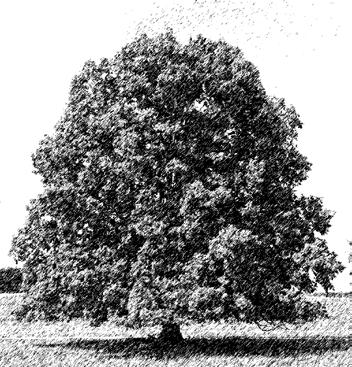
the sweet, nourishing bounty would appear on the trees. That moment marked the end of hunger, the beginning of a new season – of ripeness. It meant that until the next successful hunt, those hungry, waiting eyes could find solace nearby – in the trees, where sweet, delicious, and strength-giving fruits hung in abundance.
I believe it was precisely in the life of hunter-gatherer societies that the circumstances emerged under which the beginning of a new, hunger-free season would be announced by the first ripened fruit. The cherry, being an endemic plant of Asia Minor and the South Caucasus, would logically have served as such a “herald” in our region. Its appearance would have signaled the start of a new, sweet season of the year – a kind of calendrical event that divided the year into two parts: the season of ripeness and the season of unripe scarcity. And as noted before, this division would have been of vital importance to a foraging society.
Since then, tens of thousands of years have passed. Humans learned how to cultivate the land – first with a horn, and then with increasingly advanced tools. Agriculture rooted people in one place and offered far greater possibilities for growth and development. But the era in which the sighting of the first fruit marked a new time of year and a better chance of survival lasted so long that the tree bearing this message – the cherry – remained in our land and culture as sacred, to be protected and revered. And the words mentioned at the beginning of this article – “Balo! Baloo!” (“Cherry! Cherry!”) – turn out to be the echo of this ancient, millennia-old anticipation and hope.
paata jaSi PAATA JASHI
20-21 wlis Tu iqneboda pirvelad rom Sevxvdi, 1981 wels, qobuleTSi, fiWvnarSi, sadac aWaris samecnierokvleviTi institutis arqeologebis jgufi muSaobda. samuSao velidan axlad dabrunebulebi viyaviT da Cveni jgufis usaTnoesi wevris, maiko boWoriSvilis dabadebis dRis aRniSvnisaTvis vemzadebodiT, rodesac `versalis~ (ase eZaxdnen xumrobiT eqspediciis wevrebi Zvel Tavlas, sadac rekonstruqciis Semdeg, arqeologiuri baza unda ganTavsebuliyo) „karibWes~ ori ymawvili moadga. pirvelma (igi yovelTvis yvelgan pirveli iyo), gamorCeuli habitusiT, umalve miiqcia Cveni yuradReba: maRali, saTvaliani, sufTad gaparsuli, dinji da mozomili qceviT msaxiob indiana jonss hgavda. `vin aris meTqi?~ _ vikiTxe. `guram gabiZaSvilia, universitetis studenti, leqsebi uyvars, kargi biWia,~ _ miTxra kukuSam (erekle astaxiSvilma). leqsebis siyvaruli ki iseTi daxasiaTeba iyo, romelic, umal, keTilgangawyobda...

I first met him when he was about twenty or twenty-one. It was 1981 in Kobuleti, in the Pichvnari area, where a group of archaeologists from the Adjara Scientific Research Institute was working. We had just returned from the field and were preparing to celebrate the birthday of our group’s most virtuous member, Maiko Bochhorishvili, when two young men approached the “gates” of the Versaille (as we jokingly called the old barn, which, after reconstruction, was to serve as an archaeological base for the expedition). One of them immediately drew attention – tall, bespectacled, clean-shaven, with calm measured movements, he looked like an actor’s version of Indiana Jones. I asked, “Who is this?” “That’s Guram Gabidzashvili, a university student, he loves poetry, he’s a good guy,” Kukusha (Erekle Astakhishvili) replied. And his love of poetry was described in such a way that would instantly won you over.
Later, at the table, taking advantage of the toastmaster’s privilege, I unexpectedly addressed this still-unknown young man aloud: “Guram! Please, read us a poem.” Silence fell; all eyes turned to him. Guram looked at me, paused for a few seconds – probably weighing the sincerity of my request – and then, adjusting his glasses with his index finger, began – “Over the steppe, past Karbada Where partridges arise from the kurgans…” Do you know how he read it? It wasn’t an artistic recital, nor theatrical performance – it was a mystique born of naked emotion and passion, pain felt truthfully, desire filled with hope. We didn’t just passively watch this mystique – we became part of it. He carried us up to the heavens and flew us from the kurgans of Kabardian to the ridges of Ksani and Aragvi. We froze with him at the sight of an unknown woman’s beauty; with him we “raised the dust on all the roads around,” with him we “broke the locks on the gates of Mtskheta,” and “smashed temples, with their great candles, down!” With him we fought the man in morion, with him we lay decapitated on rose petals, hoping for a new encounter. The poem ended, a moment of silence followed – no other expression of agreement or praise, for Guram had made us not passive listeners, but participants in his mystery.
It’s hard to say which aspect predominated in Guram’s actions – his emotional world or his rational part? In both cases his actions stood out with astonishing artistry. Artistry was his defining trait generally. But this artistry was spontaneous and natural, not contrived. Guram was an extraordinary storyteller. When his performance emerged, even the most trivial matter he recounted – adding something new
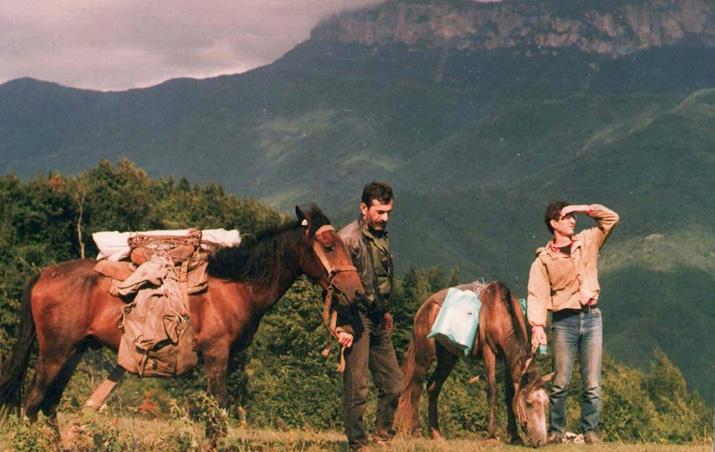
Semdeg ki, ukve sufrasTan, visargeble ra Tamadis privilegiiT, yvelasTvis moulodnelad, jer kidev ucnob kacs xmamaRla mivmarTe _ guram! gTxov, rame leqsi wagvikiTxe-Tqo. _ siCume Camovarda, yvelas mzera guramisken iyo miqceuli. guramma gamomxeda, ramdenime wamiani pauza... albaT, gonebaSi afasebda Cemi Txovnis gulwrfelobas, Semdeg saCvenebeli TiTiT saTvale cxvirze gaiswora da daiwyo, magram ra daiwyo _ „yorRanebidan gnoli afrinda, yabardos veli gadaiara...“ rogor kiTxulobda iciT? es ar iyo mxatvruli deklamacia, arc Teatraluri artistizmi, es iyo SiSveli grZnobiT da vnebiT, tkivilis marTali gancdiT, imediT aRsavse surviliT Seqmnili misteria. da Cven am misteriis pasiuri mayurebelni ki ara, misi monawile gagvxada. agvitaca zecas da mogvafrina yabardos yorRanebidan qsnisa da aragvis xodabunebi. Rvino nasmevze, masTan erTad gavxeldiT ucxo qalis simSvenieris xilviT, masTan erTad „avamtvrianeT gzebi tiali“, masTan erTad „mcxeTas vumtvrie(T) saketurebi“ da „vlewe(T) taZrebi kelaptriani“, masTan erTad SevebrZoleT muzaradian vaJkacs, masTan erTad TavgaCexilni, vardis furclobis Jams, axali paemanis imediT. damTavrda leqsi, wuTieri garindeba, araviTari taSi an mowonebis sxva gamoxatva,
each time, a refined humor – was worth listening to. He captured hearts, drew attention effortlessly. Being with Guram meant inhabiting a world he created, unreal but protective, peaceful, and full of beauty and love.
His favorite subject was “The First Garment” by Guram Dochanashvili. One day he invented a game of finding prototypes of characters from the city of beauty. We had such fun when we found prototypes for Celio, Julio, Conchettina’s aunt Ariadne, especially Duilio. We searched with sorrow and anger for Kamora’s characters, easily finding Marshal Betancourt and the court painter Grekrikio. Finding Michinio was more difficult. It was the early 1980s; the national liberation movement was just beginning. Freedom and independence were taboo subjects under the regime. Thus, city of beauty and the Kamora existed for us in reality – which was Tbilisi and Moscow – so we looked for prototypes there and found them easily. And as for Kanudos, it was a land of dreams, and we searched for its heroes in dreams. Guram’s theme was assigning names of the seven Kanudosians. One evening in Derchi, in the beautiful courtyard of Guram’s ancestral house among centuries-old walnut trees, we lounged in hammocks.We had just returned from Khvamli and were savoring the silence and the sky filled with stars. Suddenly, he said to me, “Patiko! So, can you name seven Kanudosians among our brotherhood? Who do you have in mind?” We began thinking
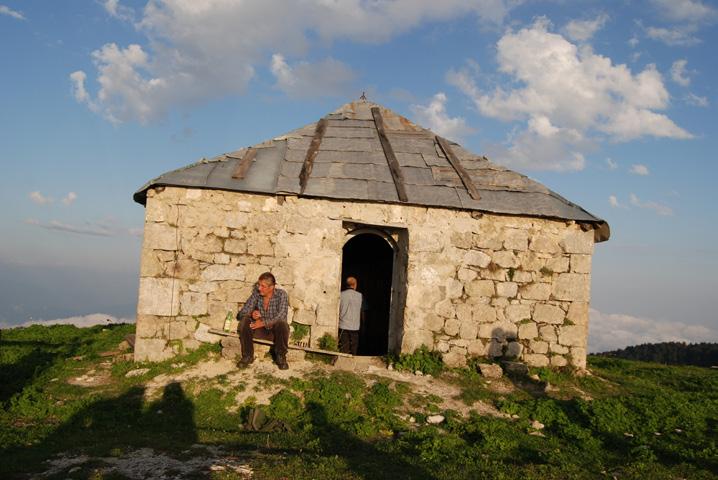
radgan Cven pasiuri msmeneli ki ara, am misteriis nawili gagvxada guramma.
Zneli saTqmelia romeli ufro, Warbobda guramis qmedebebSi _ grZnobiTi samyaro Tu racio? misi qmedebebi, orive SemTxvevaSi, gamoirCeoda, saocari artistizmiT. zogadad artistizmi misi damaxasiaTebeli buneba iyo. magram es artistizmi ar iyo xelovnurad dadgmuli _ Zalian uSualo da bunebrivi qmedeba iyo. gurami saocari mTxrobeli gaxldaT. ai, sad gamovlindeboda xolme, misi artistizmi. sruliad umniSvnelo ambavs ise moyveboda, Tanac, sxvadasxva dros, raRac axali momentebis damatebiT, daxvewili iumoriT, rom misi mosmena erT ramed Rirda... yvelgan sulis Camdgmeli, yuradRebis epicentrSi iyo. saocrad exerxeboda sazogadoebis monusxva, ayolieba da es yvelaferi bunebrivad, Zaldautaneblad gamosdioda. guramTan erTad Tu iyavi, ese igi, mis gamogonil irealur samyaroSi cxovrobdi da am samyaroSi Tavs daculad, komfortulad grZnobdi, mSvenierebis, simSvidis, siyvarulis sasufevelSi. doCanas „samoseli pirveli~ iyo misi sayvareli Tema. erT dRes raRac TamaSiviT moigona: lamaz-qalaqis gmirebis prototipebis moZebna. Zalian vxalisobdiT,
out loud. The title of Don Diego was awarded to Soso Bandzeladze without any debate. After a brief discussion, we chose five more Kanudosians. That left Manuel Costa and Zé Moreira. “So, who do you see as Manuel?” I asked. “I am,” he replied.
And indeed, he resembled Manuel Costa – cheerful, restless, spirited, loyal, a seeker of life’s hardships, someone who overcame them playfully, always inventing clever tricks, a true friend to friends and a steadfast fighter against foes. He had fought in Abkhazia, returned wounded, with his health shaken. I wouldn’t say he liked leadership or being in the spotlight, but taking the lead came to him naturally. He would always start the singing. I can still hear his call echoing in my ears – “Laleee~.” No one could match him in sharing joy or offering support during hard times. Friendship was the central theme of his life.
In “Khvamli’s Starry Multitude,” dedicated to Guram Gabidzashvili and Soso Bandzeladze, I once wrote: “Every Georgian bears within their heart at least one monument as an icon. Some are aware of it, and some are not – but the monument is there.” (Levan Gotua, Living Ancestors) For Guram Gabidzashvili, Khvamli was that monument. Khvamli was an inseparable part of his life. He had been enchanted by it since childhood, when, visiting his elder cousin Ioseb Bandzeladze (a scholar of architecture and architectural restorer) in the ancestral
rodesac cilios, julios, konCetinas mamida ariadnas da, gansakuTrebiT duilios prototopebs vpoulobdiT. sevdiTa da gabrazebiT veZebdiT kamoris gmirebs. marSal betankurs advilad mivageniT, agreTve, karis mxatvar grekrikios. Zalian gviWirda miCinios povna. es 80iani wlebis dasawyisia. erovnul-ganmaTavisuflebeli moZraoba axali dawyebulia. Tavisuflebaze da damoukideblobaze saubari tabudadebuli Temaa reJimis mier. amdenad lamaz-qalaqi da kamora CvenTvis realurad arsebobda, es Tbilisi da moskovi iyo, da amitomac prototipebs iq veZebdiT da adviladac vpoulobdiT, xolo, rac Seexeba, kanudoss es iyo ocnebis sofeli da Cvenc, mis gmirebs, ocnebaSi veZebdiT. guramis Tema iyo Svidi kanudoselis saxelis miniWeba. erT saRamos, derCSi, guramis mama-papiseuli saxlis did ulamazes ezoSi, aswlovani kaklis xeebs Soris gaWimul hamakebSi vnebivrobdiT. axali Camosulebi viyaviT xvamlidan da vtkbebodiT siCumiTa da varskvlavebiT moWedili ciT. ucbad meubneba _ patiko! aba Cvens saZmoSi Svid kanudosels Tu xedav da vis gulisxmob? _ daviwyeT xmamaRla fiqri... don diegoeba yovelgvari kamaTis
home in the beautiful Lechkhumian village of Derchi – from where Khvamli is most clearly visible – they would sit under a centuries-old walnut tree as their grandfather told them tales of Khvamli. At first, his fascination with Khvamli was linked to the desire to find royal treasures hidden in its inaccessible caves. Later, as a student at the Faculty of History at Ivane Javakhishvili Tbilisi State University and a future archaeologist, he began studying and collecting materials about Khvamli. The first significant information he found was in Vakhushti Batonishvili’s work A Description of the Kingdom of Georgia: “[In the rocks of Khvamli] there is a carved cave, inaccessible to enemies, where the royal treasures are stored.” (Vakhushti Batonishvili, A Description of the Kingdom of Georgia). Later, he found more precise information in The Georgian Chronicles, where the chronicler describes the division of the royal treasury by King David Ulugh and David Narin in 1263–1264: “At that time, there was no strength to resist, and they resolved to divide the kingdom and the treasury in two. They appointed nobles to oversee the division of the capital cities of Tbilisi and Kutaisi, as well as the princes and dukes. They divided the kingdom from Nikopsia to Derbent and split the treasures. Yet from the Khvamli cave, which held the treasures, only a small part was taken and shared, while the rest was left in the cave
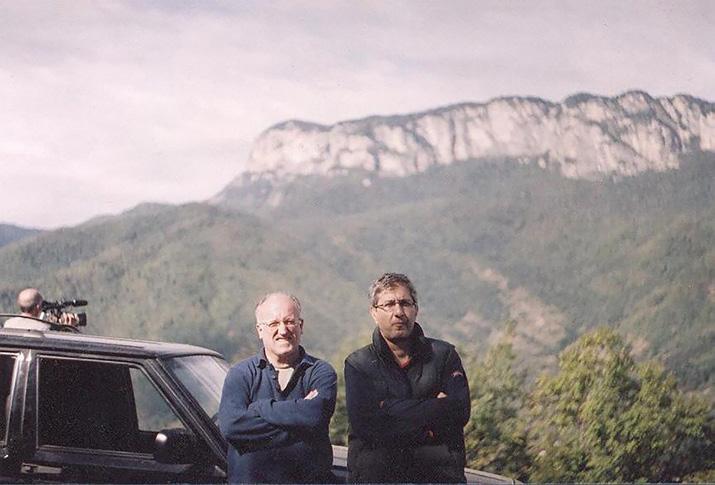
gareSe soso banZelaZes vuboZeT. patara kamaTis Semdeg sxva, xuTi kanudoselic SevarCieT. darCa manuela kosta da ze moreera. _ manuelas visze fiqrob?-meTqi, vkiTxe. _ manuela me varo. _ mipasuxa. marTlac manuela kostas gavda. masaviT laRi, daudgromeli, mxiaruli, erTguli, cxovrebiseuli siZneleebis maZiebeli, TamaS-TamaS am siZneleebis damZleveli, aTasi oinbazobis momgonebeli, moyvare moyvasis, mterTan Seudrekeli mebrZoli. ibrZoda afxazeTSi, daWrili, janmrTeloba Seryeuli dabrunda. lideroba da Tavis gamoCena uyvarda meTqi ver vityvi, magram pirveloba TavisTavad gamosdioda. simReras pirveli wamoiwyebda. sul yurSi Camesmis misi SemoZaxeba _ `lalee~ _ lxinis gaziarebaSi da gaWirvebis dros TanadgomaSi xom, badali ar hyavda. megobroba iyo misi cxovrebis mTavari Tema... guram gabiZaSvilis da soso banZelaZisadmi miZRvnil „xomlis mravalvarskvlavi“-Si vwerdi: „yovel qarTvels TiTo Zegli mainc uzis gulSi xatad. zogma icis es, zogma ki ar icis! Zegli ki mainc uzis~ (levan goTua „cocxali winaprebi“). guram gabiZaSvils gulSi xatad xomli ejda. xomli iyo misi cxovrebis ganuyofeli nawili. xomliT jer kidev yrmobaSi moinusxa, maSin, roca ufros
itself.” (The Georgian Chronicles, vol. 2, published by Soviet Georgia, Tbilisi, 1959). In his mind, a conflict arose between the stories told by his grandfather – where Khvamli alternately belonged to the evil lord of Taru, Elia, or to the heroic hunters Zhivzhiva and Vazhina, who slew the dragon – and the chronicles describing it as the site of royal treasure.
The future scholar intuitively realized that the Khvamli mountain held many more secrets, and he resolved to devote himself entirely to uncovering them. From the 1990s onward, Khvamli became virtually the sole focus of Guram Gabidzashvili’s scientific and research interests. He began by studying the work of his great predecessors. One such source was Ekvtime Takaishvili, who had taken an interest in the Church of St. George on Mount Khvamli. In 1937, while in emigration in Paris, Takaishvili published a book titled An Archaeological Expedition in Lechkhumi and Svaneti in 1910. “When we were traveling,” writes Takaishvili in his monograph, “they had just begun building a new church there and had discovered a stone with an asomtavruli inscription. I was informed of this in Okureshi, and since we had no time to go ourselves, we sent the archdeacon of Okureshi and instructed him to bring the stone to Nakuraleshi. We copied and photographed the inscription. It was a three-line text carved on a limestone slab, now broken in two; the lower part of one
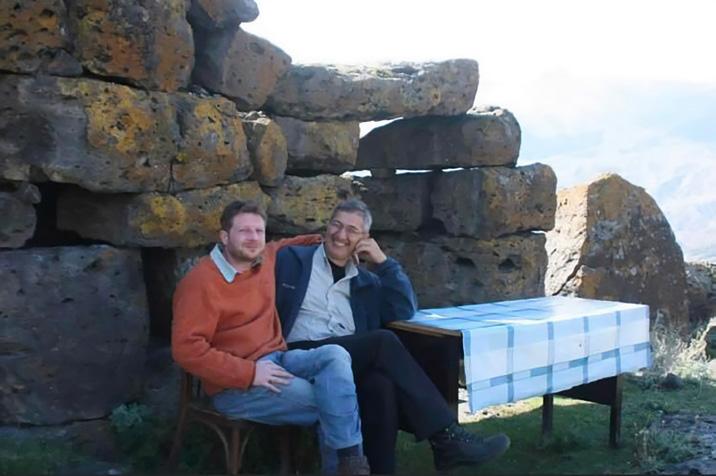

mamidaSvilTan, ioseb banZelaZesTan (xuroTmoZRvrobis mkvlevari, arqiteqtor-restavratori) leCxumis erTerT ulamazes sofel derCSi, sagvareulo kar-midamoSi, saidanac yvelaze kargad Cans xomlis masivi, aswlovani kaklis qveS babua xomlze Tqmulebebs uyvebodaT. Tavidan, xomlis mimarT interesi miuval gamoqvabulebSi samefo ganZis moZiebis survilTan iyo dakavSirebuli. SemdgomSi ki, ivane javaxiSvilis saxelobis saxelmwifo universitetis istoriis fakultetis studentma, ukve rogorc momavalma arqeologma, xomlis Sesaxeb masalebis gacnoba da Segroveba daiwyo. pirveli, mniSvnelovani informacia vaxuSti batoniSvilis naSromSi „aRwera samefosa saqarTvelosa~ moiZia _ „[xomlis kldeSi] ars qvabi gamokveTili, mtrisagan Seuvali, mefeTa saganZurT sadebi“ (vaxuSti batoniSvili, „aRwera samefosa saqarTvelosa“). Semdeg, ufro metad dazustebul informacias „qarTlis cxovrebaSi~ JamTa aRmwerelis qronikebSi miakvlia. daviT ulusa da daviT narinis mier 1263-1264 ww. samefo ganZis gayofis Sesaxeb waikiTxa: „maSin arRara iyo Rone, daamtkices, raTa ganyon samefo da saWurWle orad da aCinnes Tavadni samefosani ganyvnes orad, tfilisi orad, quTaisi orad, Tavadni da erisTavni erTi-erT Seaswores, nikofsiiT darubandamde da ganyves
half is chipped away. We reconstructed the inscription as follows: ‘Saint George, be an intercessor and protector for Eristavi Ioane… and for his children on the Day of Judgment, amen.’ This Ioane must be a noble of the ancient Svans, and not Ioane, son of Vardan, who is mentioned in icons of St. George in Labechini and Mestia.” Takaishvili’s expedition returned the stones, as the local people demanded it. (E. Takaishvili, An Archaeological Expedition in Lechkhumi and Svaneti in 1910, Paris, 1937)
Later, between 1923 and 1926, the renowned historian Giorgi Bochoridze traveled through the Lechkhumi region. He wrote: “The Church of St. George of Khvamli stands on Mount Khvamli. This mountain is among the highest peaks in western Georgia. From there, one can see Lechkhumi, part of Racha, and to the south – the entire Rioni Valley. The mountain has many caves around it, some excavated. The church is a single-nave basilica of the modern era, built using stones from an older church. Its roof is tin, partly stripped. The older church must have stood where the new one now stands. Originally, the old church had a large stone with an inscription. According to locals, the stonemason broke it into four parts and used them as cornerstones for the new church. Two of these fragments (the northwestern and southwestern corners) still bear remnants of the inscription; the other two (northeastern and southeastern) do not.” (13. E. Takaishvili, An Archaeological Expedition in Lechkhumi and
samefo da saWurWleni; garna xuamlisa qvabsa romeli idva, mcire gamoiRes da gaiyves, da ufrosi qvabsave dauteves.~ („qarTlis cxovreba,“ t. 2, gamomc. „sabW. saq.“ Tb. 1959 w.) da gonebaSi moxda Sepirispireba babuas monayoli Tqmulebebisa, sadac xomli xan avi tarosis mbrZaneblis, elias saufloa, xan gmiri monadireebis, JivJivasa da vaJinas mier gveleSapis mokvlis adgili, _ mefeTa ganZsadebelis adgilTan.
momavali mecnieri gumaniT mixvda, rom xomlis mTa gacilebiT met saidumloebebs inaxavda da gadawyvita, mTeli SemarTebiT Sedgomoda maT amoxsnas. 1990-iani wlebidan guramis kvleviTi da samecniero interesis
TiTqmis erTaderT obiqetad xomli iqca. guram gabiZaSvilma upirvelesad Tavisi didi winaprebis nakvlevis Seswavla daiwyo. erT-erTi aseTi wyaro iyo eqvTime TayaiSvili, romelic xomlis mTis wminda giorgis eklesiiT dainteresda. im eqspediciis Sesaxeb, ukve parizSi, emigraciaSi myofma 1937 wels gamosca wigni „arqeologiuri eqspedicia leCxum-svaneTSi 1910 wels.~ „rodesac Cven vmogzaurobdiT, _ wers eqvTime TayaiSvili Tavis monografiaSi, _ aq dauwyiaT axali eklesiis mSenebloba da aRmouCeniaT qva asomTavruli warweriT. es ambavi me oyureSSi macnobes, da vinaidan Cven dro ara gvqonda wavsuliyaviT, gavgzavneT oyureSis mTavardiakoni da davavaleT qvis Camotana nayuraleSSi. Cven gadmovwereT da fotografiulad gadaviReT warwera. samstriqoniani warwera moTavsebuli yofila Sirimis qvaze, romelic axla orad aris gadatexili; meore naxevris qvemo nawili momtvreulia… warwera Cven ase gvaqvs warmodgenili: „wm. giorgi, meox da mfarvel eqmen erisTavT erisTavsa ioanes… da SvilTa misTa mas dResa gankiTxvisasa, amin.“ es ioane unda iyos uZvelesi xanis svanTa erisTavi da ara is ioane vardanis Ze, romelic labeWinisa da mestiis wm. giorgis xatebSia moxseniebuli.“ eqvTime TayaiSvilis eqspediciam ukanve daabruna qvebi, vinaidan xalxi amas moiTxovda (eqv. TayaiSvili, „arqeolgiuri eqspedicia leCxum-svaneTSi 1910 wels.“ parizi, 1937 w.).
ufro mogvianebiT, 1923-1926 ww. leCxumis mxareSi imogzaura cnobilma mecnierma, istorikosma giorgi boWoriZem: „xvamlis wm. giorgis eklesia dgas xvamlis mTaze, _ werda igi, _ es mTa erTi umaRles mwvervalTagania dasavleT saqarTveloSi. iqidan saucxood moCans leCxumi, raWis nawili da samxreTiT _ mTeli vake rionisa. mTas garSemo aqvs mravali gamoqvabuli, zogierTi maTgani gauTxriaT; eklesia erTnaviani bazilikaa, axali xanisa. aSenebulia Zveli eklesiis masalisagan, xuravs Tunuqi, romelic nawilobriv ayrilia. Zveli eklesia, albaT, axali eklesiis adgilze iqneboda. pirvelad (Zvels) hqonda erTi didi warweriani qva. adgilobriv pirTa cnobiT, kalatozs oTxad gautexia da axali eklesiis oTxiv kuTxeSi daudevs safuZvlad. ors am natexTagan
Svaneti in 1910, Paris, 1937)
While the expeditions of Takaishvili and Bochoridze focused on studying the inscriptions and icons of the Church of St. George on Khvamli, the aim of two expeditions led by Alexander Japaridze was to find the royal treasury in Khvamli’s inaccessible cave. Japaridze first ascended to the cave in 1939 with D. Oboladze and A. Iashvili in a reconnaissance mission. The second expedition, in 1946, comprised various specialists and reached the cave, where they spent a week clearing rubble, documenting and sketching the site. Expedition members included: Alpinist A. Japaridze; Writer Levan Gotua; Archaeologist Gogi Lomtatidze; Painter Vera Beletskaya; Paleontologist N. Berchak-Abramovich; Philologist Sargis Tsaishvili; Teacher from Tvishi A. Nemsitsveridze; Local resident Rezo Bandzeladze. Alpinists: Elene Abashidze, V. Nosova, Alexandra Japaridze, Zhorzhika Nemsadze, S. Shkhvartsabaia, Cameraman: Ajibegashvili.
They did not discover anything particularly valuable, apart from petroglyphs etched on the cave walls. Archaeologist Gogi Lomtatidze associated them with Svan ritual funeral paintings known as “lipanals.” He wrote: “In the center, on a rocky wall, was a drawing made with ochre depicting mounted archers hunting a tiger-like animal… There were five mounted hunters, all shooting arrows at the running beast.” (G. Lomtatidze, personal archive, National Centre of Manuscripts of Georgia). According to Lomtatidze, in the first half of the 19th century, “a certain Dadiani had the Khvamli cave excavated but found nothing.” (G. Lomtatidze, Expedition into the Khvamli Caves, journal Mnatobi, No. 1, 1968).
During the expedition to explore the royal treasury cave, under the leadership of Giorgi Chitaia, archaeological sites were discovered in Lechkhumi, in the villages of Orbeli, Lajana, Lailashi, Tabori, Chileshi,
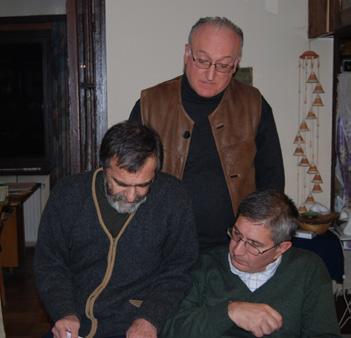

(CrdiloeT-dasavleTisa da samxreT-dasavleTis kuTxeebisas) marTlac ar uCans“.
Tu TayaiSvilisa da boWoriZis eqspediciebi xomlis wminda giorgis eklesiis warweriT da iq dasvenebuli xatebis SeswavliT iyo ganpirobebuli, aleqsandre jafariZis ori eqspediciis mizani xomlis miuval gamoqvabulSi mefeTa ganZsadebis povna gaxldaT. al. jafariZe xomlis miuval gamoqvabulSi pirvelad 1939 wels avida d. obolaZesTan da a. iaSvilTan erTad. es iyo dazverviTi xasiaTis asvla. meored, 1946 wels sxvadasxva specialistiT dakompleqtebulma eqspediciam aaRwia miuval gamoqvabulamde da iq erTi kvira dahyo, gawminda qvaRorRisagan, moaxdina fotofiqsacia, aRwera da Caxata. eqspediciis wevrebi iyvnen: alpinisti a. jafariZe, mwerali levan goTua, arqeologi gogi lomTaTiZe, mxatvari vera beleckaia, paleontologi n. berCak-abramoviCi, filologi sargis caiSvili, tviSeli pedagogi a. nemsiwveriZe, adgilobrivi mkvidri rezo banZelaZe. alpinistebi: elene abaSiZe, v. nosova, aleqsandra jafariZe, JorJika nemsaZe, s. Sxvarcabaia, operatori ajibegaSvili. maT gansakuTrebiT Rirebuli veraferi aRmoaCines, garda kldeze amotvifruli piqtogramebisa, rasac arqeologi
Orpiri, Alpana, Sairme, Labechina, Udabno, Tvishi, Khvamli, Okureshi, Zogishi, Tsagera, and Tskheta, all situated within the Tskhenistskali River basin. From the 1960s onward, the same expedition continued its work under L. Sakharova, and from the 2000s, under the leadership of N. Sulava. In 1983, a historical and architectural guidebook titled Lechkhumi was published. Illustrated with detailed measurements and photographs, the book included nearly every church, monastery, fortress, and tower in the Lechkhumi region – among them, of course, the Church of St. George of Khvamli. The authors of the book were historian Devi Berdzenishvili, architect-restorer Ioseb Bandzeladze, and art historians Manana Suramelashvili and Khatuna Churghulia.
In the 1990s, the study of Khvamli was continued by an expedition of the Archaeological Research Center under the direction of Guram Gabidzashvili, which primarily focused on reconnaissance work. During this period, numerous archaeological sites were identified around Khvamli: Paleolithic dwellings, Late Bronze and Early Iron Age settlements, metallurgical necropolises, fortification structures, and more. Excavations during this time included the settlement of Korvashi, located above the village of Dgnorisa, and a Middle Bronze Age site above the village of Oncheishi. Due to the well-known events in Georgia, Guram was unable to organize further expeditions until 2007. He was obsessed with the idea of studying Khvamli, and he
gogi lomTaTiZe svanur „lifanals~ (micvalebulTan dakavSirebuli saweso naxatebs) ukavSirebs. igi ambobs: „Sua adgilas, kldovan kedelze, iyo surinjiT naxati cxenosan-mSvildosanTa nadiroba vefxviviT cxovelze… naxatebSi gamoirCeva 5 cxenosani monadire, romelnic, yvelani mSvild-isars esvrian morbenal nadirs~ (g. lomTaTiZe, piradi arqivi, saqarTvelos xelnawerTa erovnuli centri). g. lomTaTiZisave cnobiT, XIX saukunis I naxevarSi „vinme dadians gauTxria xvamlis qvabi, magram veraferi aRmouCenia.“ (g. lomTaTiZe, „eqspedicia xvamlis qvabulebSi“, Jurn. „mnaTobi~N1, 1968). mefeTa ganZsadebelis qvabulis dalaSqvrisas eqspediciam giorgi Citaias xelmRvanelobiT, leCxumSi gamoavlina arqeologiuri obieqtebi soflebSi: orbeli, lajana, lailaSi, Tabori, WileSi, orpiri, alpana, sairme, labeWina, udabno, tviSi, xvamli, oyureSi, zogiSi, cagera, cxeTa. cxeniswylis auzis arqeologiur obieqtebze. 60-iani wlebidan nayofierad gaagrZela muSaoba imave eqspediciam l. saxarovas, 2000-iani wlebidan ki n. sulavas xelmZRvanelobiT. 1983 wels gamoica istoriul-xuroTmoZRvruli gzamkvlevi „leCxumi“. anazomebiTa da fotoebiT dasuraTebul wignSi leCxumis TiTqmis yvela eklesia-monasteri da cixe-koSkia Tavmoyrili. aq, ra Tqma unda, xomlis wminda giorgis eklesiac aris. wignis avtorebi arian: istorikosi devi berZeniSvili, arqiteqtor-restavratori ioseb banZelaZe, xelovnebaTmcodneebi manana suramelaSvili da xaTuna WurRulia.
xomlis Seswavla 1990-ian wlebSi gaagrZela arqeologiuri kvlevebis centris eqspediciam guram gabiZaSvilis xelmZRvanelobiT, romelic, ZiriTadad, dazverviTi samuSaoebiT Semoifargla. am periodSi xomlis mimdebare teritoriaze araerTi Zegli dafiqsirda: paleoliTuri sadgomebi, gvianbrinjaos da adrerkinis xanis namosaxlarebi, metalurgiuli samarovnebi, safortifikacio nagebobebi da sxv. am periodSi gaiTxara korvaSis samosaxlo sof. dRnorisas Tavze da Sua brinjaos xanis Zegli sofel onWeiSis Tavze. saqarTveloSi cnobili movlenebis gamo guramma 2007 wlamde espediciis mowyoba ver moaxerxa. gurami Sepyrobili iyo xomlis Seswavlis ideiT da am ideas, maRali artistizmiT, mis irgvliv myof adamianebs uSurvelad uziarebda. igi saocari mTxrobeli iyo, misi mosmena erT ramed Rirda. es iyo momxiblavi warmodgena, erTi msaxiobis Teatri, _ saTvales cxvirze saCvenebeli TiTiT gaisworebda, xelebs gaSlida, Txrobas daiwyebda da umal ikargeboda zRvari miTsa da realobas, zRaparsa da istorias Soris. mniSvneloba ar hqonda, didi xnis nacnobi iyavi Tu axalgacnobili, mravaljer mogesmina Tu pirvelad ismendi _ inusxebodi da mis mier warmosaxuli samyaros nawili xdebodi.
shared this passion generously – with remarkable artistry – with those around him. He was an extraordinary storyteller; listening to him was an experience in itself. It was a captivating performance, a one-man theatre – he would adjust his glasses with an index finger, spread his hands, begin to speak, and immediately the boundary between myth and reality, tale and history, would blur. It made no difference whether you had known him for years or had just met him, whether you had heard the story many times or were hearing it for the first time – you would be enchanted and become a part of the world he conjured. One day in September, Guram gathered our first group: Vaso Gabunia, Dato Jincharadze and his son, Aleksandre Kakabadze, and myself. The group’s advisor was Soso Bandzeladze. We traveled to Lechkhumi, to Guram and Soso’s ancestral home in Derchi. From there, at dawn, we set off for Goni, where the restoration of the Church of St. George was underway based on Soso’s architectural design. We spent the night there. The next day, we descended into the gorge and visited the Cave of Verdzistava. A powerful waterfall flowed from the cave, so strong that we couldn’t even approach it. Due to bad weather, we were unable to ascend Khvamli. Upon returning, we decided to begin preparations early for the 2007 expedition: to secure the necessary funding and equipment for accessing the inaccessible cave.
Thanks to Guram’s efforts, in 2007 we acquired the necessary alpine gear, fuel, supplies, and funding, and the expedition began its work in July. The plan was to approach the inaccessible cave from below. After several failed attempts (with the involvement of Kutaisi alpinists), it was decided to repeat Alexander Japaridze’s route, which involved descending from the summit of Khvamli using ropes. As part of this expedition, the Goni burial ground was excavated.
Earlier that same year, I met a young and talented poet, Pako (Amiran) Svimonishvili, owner of the micro studio GxOUP. He wanted to film the Khomloba and had approached me for advice. I introduced him to Guram. As usual, it didn’t take long for Guram to win Pako over, and that very evening, it was decided that the film would not focus solely on the Khomloba but on Khvamli itself. Pako offered to provide his studio’s equipment and to cover all production costs. It was an incredibly fortunate agreement. The result was the scientificdocumentary film The Mystery of Khvamli, Part I.
In 2008, with the help of Tbilisi-based alpinists, we succeeded in entering the inaccessible cave. The expedition group spent a full day inside, recording footage for the documentary, taking photographs, and sketching the petroglyphs. That same year, Guram Gabidzashvili, together with a small team, conducted aerial photography of the site with the support of the governor of Imereti and Lower Svaneti, A. Bobokhidze. Around the same time, we learned that in the 1950s a Georgian expedition of geologists and speleologists – Sh. Kipiani, Z. Tintilozov, K. Jishkariani, and A. Okrojanashvili – had explored Khvamli and its surroundings and had published valuable findings in the Cadastre of Karst Caves of Georgia. Out of the 20 caves listed, 16 had documented locations, descriptions, and measurements. Notably, three of the caves showed signs of cultural layers.
erT dResac, seqtemberSi guramma Segvkriba pirveli jgufi: vaso gabunia, daTo jinWaraZe SviliTurT, aleqsandre kakabaZe da Tqveni mona-morCili. jgufis konsultanti soso banZelaZe gaxldaT. gavemgzavreT leCxumSi, guramisa da sosos mamapapiseul derCSi, saidanac gamTeniisas gonisken gavswieT, sadac gonis wm. giorgis eklesias restavracia sosos proeqtiT ukeTdeboda. is Rame iq gavaTieT. meore dRes daveSviT xeobaSi da verZisTavas mRvime movinaxuleT. mRvimidan iseTi Zlieri CanCqeri moedineboda, rom axlosac ver mivudeqiT. cudi amindis gamo xomlze ver avediT. dabrunebisas gadavwyviteT, 2007 wlisTvis Tavidanve dagveWira Tadarigi, Semdegi eqspediciisTvis saWiro Tanxebisa da miuval gamoqvabulze asasvlelad saWiro aRWurvilobis mosaZieblad. 2007 wels guramis ZalisxmeviT Sesabamisi alpinisturi aRWurviloba, sawvavi, produqti da finansebi moviZieT
Guram Gabidzashvili was the first Georgian scholar who, beginning in the 1990s, approached Khvamli not merely as a treasure site but as a phenomenon. From 2009 to 2011, with funding from the Shota Rustaveli National Science Foundation, he resumed the study of Khvamli and its surrounding area. The project was led by architectrestorer Ioseb Bandzeladze, while the archaeological research was headed by Guram Gabidzashvili. The project involved archaeological exploration of the summit of Mount Khvamli and the area around the Church of St. George. Remnants found around the church on the mountaintop point to its archaic origins. For example, based on the graphic reconstruction of a stone gateway complex, a compelling hypothesis emerged – of an ancient observatory once existing there. Numerous caves were identified on both the upper and lower terraces of Khvamli, all requiring special equipment and thorough scientific research. Particular attention must be given to the “treasure cave,” the stratification and dating of its cultural layers, the documentation and study of the collapsed cave structures and rock masses from the
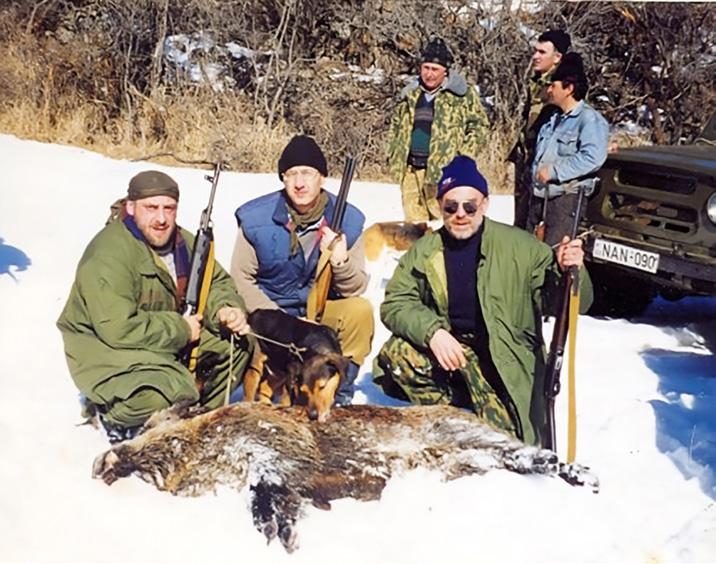
da ivlisSi eqspedicia muSaobas Seudga. Cafiqrebuli iyo miuvali gamoqvabulis qvevidan dalaSqvra. ramdenime uSedego mcdelobis Semdeg (quTaiseli alpinistebis monawileobiT) gadawyda, gagvemeorebina al. jafariZis marSruti, romelic xomlis wveridan daSvebuli TokebiT asvlas iTvaliswinebda. am eqspediciis farglebSi gaiTxara gonis samarovani.
imave wlis dasawyisSi Semxvda axalgazrda, niWieri poeti, Micro Studio GROUP-is mflobeli pako (amiran) svimoniSvili. mas xomlobis zeimis gadaReba surda da konsultaciisTvis mommarTa. me igi gurams Sevaxvedre. mas, rogorc yovelTvis, didi dro ar dasWirvebia pakos mosanusxad da imave saRamos gadawyda, Seqmniliyo filmi ara konkretulad xomlobis zeimze, aramed – xomlze, risTvisac pako gamoyofda Tavisi studiis aparaturas da ikisrebda filmis gadaRebisTvis saWiro materialur mxares. es iyo warmoudgenlad kargi SeTanxmeba. misi Sedegia samecniero-dokumenturi filmi „xvamlis saidumlo“, nawili I.
2008 wels Tbiliseli alpinistebis daxmarebiT moxerxda miuval gamoqvabulSi Sesvla. eqspediciis jgufma erTi dRe dahyo iq, gadaiRo dokumenturi filmisTvis
saWiro masala, fotoebi da Caixata petroglifebi. amave wels guram gabiZaSvilma, mcire jgufTan erTad, aerofotogadaReba ganaxorciela, imereTisa da qvemo svaneTis gubernatoris, a. boboxiZis xelSewyobiT. amave periodSi movipoveT informacia, rom XX s. 50-ian wlebSi qarTveli geolog-speleologebis eqspedicias S. yifianis, z. tintilozovis, k. jiSkarianis a. oqrojanaSvilis SemadgenlobiT mouvlia xomli da misi Semogareni da gamouqveynebia saintereso masala „saqarTvelos karstuli mRvimeebis kadastrSi“. iq arsebuli 20 mRvimidan 16is mdebareoba, aRweriloba da anazomebia mocemuli. aRsaniSnavia, rom sam mRvimeSi kulturuli fenis niSnebi aRmoCnda.
guram gabiZaSvili aris pirveli qarTveli mecnieri, romelmac 1990-ianebidan daiwyo xomlis, rogorc fenomenis, da ara rogorc ganZsadeblis, Seswavla. 20092011 wlebSi SoTa rusTavelis erovnuli samecniero fondis dafinansebiT, kvlav daiwyo xomlisa da mimdebare teritoriis Seswavla. proeqts xelmZRvanelobda arqiteqtor-restavratori ioseb banZelaZe, arqeologiuri kvlevis xelmZRvaneli iyo guram gabiZaSvili. proeqtis farglebSi mimdinareobda xomlis

mTis wveris, wm. giorgis saxelobis eklesiis Semogarenis arqeologiuri kvleva. xomlis mTaze, eklesiis garSemo arsebuli naSTebi mis arqaul warmoSobaze miuTiTebs. magaliTad: qvis karibWe-kompleqsis naSTebis grafikuli rekonstruqciis Sedegad gamoiTqva saintereso hipoTeza _ iq uZvelesi observatoriis arsebobis Sesaxeb. xomlis zeda da qveda terasebze uamravi mRvime iqna gamovlenili, romelTa Seswavlasac specialuri aRWurviloba da saTanado samecniero kvleva sWirdeba. gansakuTrebul yuradRebas iTxovs „saganZurTsadebi“, kulturuli Sreebis gamijvna-daTariReba, xomlis qvabebisa da mTidan CamoSlili masebis fiqsaciagamokvleva; gamoqvabulebis Tavdapirveli saxis grafikuli versiis Sedgena. aseve mniSvnelovania xomlis damcavi safortifikacio da xomlTan misasvlel istoriul gzaTa sistemebis kvleva. amave periodSi vTxoveT daxmareba inJiner-geologTa jgufs, geologiis mecnierebaTa doqtors, zurab varazaSvils, geologebs g. razmaZesa da h. saluqvaZes. aRniSnulma jgufma kvlevebis winaswar stadiaze dayrdnobiT Caatara aerofotoebis deSifreba, ris Sedegadac gamoitana metad saintereso daskvna, rom xomlis masivs siganeze kveTs ori didi mRvimis kompleqsi (TiToeulis sigrZe daaxl. 1.5-3 km.) 1650-1750 absolutur simaRleTa intervalSi meridianuli teqtonikuri rRvevis xazis gaswvriv, rac miwisqveSa, daxurul karstul garemoSia ganviTarebuli. guram gabiZaSvilis eqspedicis mniSvnelovan mignebad SeiZleba CaiTvalos xomlis mTis antikur miTosTan dakavSireba. Jiul vernis TxzulebaSi „Seupovari kerabani“ xomlis mTis, rogorc promeTes mijaWvis adgilad moxseniebis aRmoCenam, xomlis Seswavlis axal mimarTulebas daudo safuZveli. 2010 wlis 30 ivniss 50 weli Seusrulda, saiubileo sufra derCSi mama-papiuseuli saxlis ezoSi veeberTela kaklebisa da vaSlis xeebis CrdilSi gaSala. Tbilisidan mTeli samegobro eaxla.didi zeimi, simxiarule, leqsebi ,simRerebi enacvlebodnen erTmaneTs. didi siyvaruli da siTbo sufevda sufrasTan. eeh! vin ifiqreda, rom am zeimiT vemSvidobebodiT gurams.. guram gabiZaSvili 2010 wlis ivlisis bolos, eqspediciis dros derCSi, gamTeniisas moulodnelad aResrula. did siyvaruls veRar gauZlo siyvarulisTvis gaCenili kacis gulma...
es aunazRaurebeli danaklisi iyo ara mxolod xomlis kvlevis saqmeSi, Cven, megobrebma davkargeT sicocxlis moyvaruli, erTguli, uRalato, didi siyvarulis matarebeli adamiani.. eh, guram gabiZaSvilo, guram! eh, manuelo kosta, manuel!
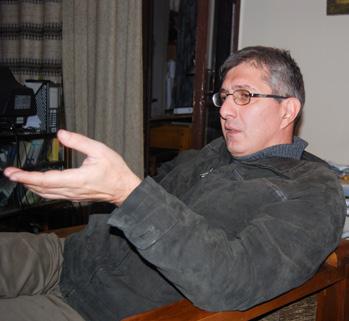
mountain, and the creation of graphic reconstructions of the original appearance of the caves. Additionally, the defensive fortifications and the system of historic roads leading to Khvamli must also be studied. During this period, we sought assistance from a group of engineering geologists: Dr. Zurab Varazashvili and geologists G. Razmadze and H. Salukvadze. Based on the preliminary stage of research, this group conducted aerial photo interpretation and came to a highly significant conclusion: two major cave complexes traverse the Khvamli massif horizontally (each approximately 1.5 to 3 km in length), at elevations between 1650 and 1750 meters, following a meridional tectonic fault line within a subterranean karst environment. One of the most important discoveries of Guram Gabidzashvili’s expeditions was the connection between Mount Khvamli and ancient mythology. The reference in Jules Verne’s novel “Keraban the Inflexible” to Khvamli as the place where Prometheus was chained laid the foundation for a new direction in the study of Khvamli.
On June 30, 2010, Guram turned fifty. His jubilee feast was held in Derchi, in the ancestral home’s courtyard, beneath vast walnut and apple trees. All his friends from Tbilisi came. It was a grand celebration filled with joy, poems, songs, and boundless affection. Who would have thought that this feast was our farewell to Guram? Guram Gabidzashvili passed away suddenly at dawn in Derchi at the end of July 2010, during an expedition. His heart, born for love, could no longer bear the weight of so much love.
This was an irreparable loss – not only for the study of Khvamli, but for us, his friends, who lost a life-loving, loyal, faithful, and deeply loving man.
Eh, Guram Gabidzashvili, Guram!
Eh, Manuel Costa, Manuel!
sofiko qeburia
2226 km. _ gugls davaTvlevine. es manZili miiCnia umoklesad gremidan sinas mTamde, Torem ufro grZeli marSrutebic SemomTavaza. qveiTad Tu ivli, arc Seisveneb, arc wauZineb, arc waixemseb, sul cota, 22 dRe wagivao. arada es manZili, iqneb ufro grZlad da mikibmokibuladac, sveneb-svenebiT, me-17 saukunis dasawyisSi kaxeTSi Casulma ucxoelma piligrimma ganvlo arabeTis naxevarkunZulze mdebare sinas mTamde. gzis sawyis wertilad gremi avirCie, radgan im dros, kaxTa mefis aleqsandre II-s zeobis xanaSi (1574-1605), swored iq iyo kaxeTis dedaqalaqi, vidre TelavSi gadaitandnen. es Cveni stumari SeiZleba pirdapir sinas mTaze arc wasula, gzad sxva siwmindeebic moiloca da vin icis, egeb wlebic moandoma mogzaurobas. kiTxva pasuxgaucemeli rCeba.
SOPHIKO KEBURIA
2,226 kilometers. That’s the distance Google calculated as the shortest route from Gremi to Mount Sinai – though it did offer longer routes as well. If you were to walk it, without resting, sleeping, or snacking, it would take at least 22 days. Yet this distance – or perhaps a longer, more winding path, taken at a measured pace – was once traversed in the early 17th century by a foreign pilgrim who had arrived in Kakheti, and journeyed all the way to Mount Sinai on the Arabian Peninsula. I chose Gremi as the starting point because during the reign of Alexander II, King of Kakheti (1574–1605), it served as the capital, before the seat of power was moved to Telavi. It’s possible that our visitor didn’t travel directly to Mount Sinai; perhaps he visited other holy sites along the way, maybe even spent years on the road. We do not know – the question remains unanswered. One thing, however, is certain: in 1604, the Cretan hieromonk Joachim Skordilis



erTi ram danamdvilebiT viciT _ 1604 wels kretel mRvdelmonazon ioakime skordiliss sinas mTaze mdebare wm. ekaterines monastrisTvis xelnaweri oTxTavi Seuwiravs, kaxeTis saoqromWedlo saxelosnoSi moWedil, mooqruli vercxlis Zvirfas kidobanSi Casvenebuli. kidobani, bude, Teka, kioti _ davarqvaT, rogorc geneboT, magram ZRvenis ambavs mis qveda sarqvelze naWedi warwera gvamcnobs.
mcire gadaxveva _ skordilisebi bizantiis warCinebuli sagvareulo yofila, trapizundis imperator aleqsi II komnenosTan danaTesavebuli. swored aleqsis warugzavnia skordilisebi kretaze sakuTari politikuri interesebis sadarajoze. es is aleqsi komnenosia, romelsac samcxis aTabagis asulma jiajay jayelma eqvsi Svili gauCina. Tumca raRa dros egaa, eg xom didi xniT adre, me-14 s-Si moxda. mas Semdeg lamis sami saukune gavida da ai, ioakime skordilisi kretadan kaxeTSi Camodis. barem imasac vityvi, rom male ioakimes araerTi mogvare gamoiCens xelovnebisadmi siyvaruls da mxatvrul ostatobas _ me-17 saukuneSive, antonios, emanuel da ioanis skordilisebi cnobili xatmwerebi gaxdebian, magram Cven cota ukan unda davixioT, maT winapar mRvdelmonazon ioakimes droSi.
donated a manuscript of the Gospels to the Monastery of Saint Catherine on Mount Sinai. The manuscript was housed in a precious, gilded silver casket, crafted in a Kakhetian goldsmith’s workshop. We can call it a reliquary, a case, a chest, or a kiot – but the story of the donation is inscribed on its lower lid.
A brief digression – The Skordilis family was a noble Byzantine lineage, related to Alexios II Komnenos, Emperor of Trebizond. It was Alexios who dispatched members of the Skordilis family to Crete to serve his political interests. This is the same Alexios Komnenos who fathered six children with Jiajak Jaqeli, daughter of the Atabeg of Samtskhe. But that’s an old story – it happened way back in the 14th century. Nearly three centuries later, Joachim Skordilis travels from Crete to Kakheti. And I may as well add that several of Joachim’s relatives would go on to show a deep appreciation for art and craftsmanship – by the 17th century, Antonios, Emmanuel, and Ioannis Skordilis had become renowned iconographers. But let us return to their ancestor, the monk Joachim.
“The Holy and Sacred Gospel (donated) by me, Joachim, hieromonk, a Cretan, called Skordilis, which I dedicate for the salvation of my soul to the Holy and God-trodden Mount Sinai, in preparation for our (earthly) departure. 1604.”
These words, though engraved in Greek on the casket by the monk, were translated by Byzantinist Eka Chkhoidze, to whom I express my gratitude here.
Joachim’s dedicatory inscription doesn’t specify where the casket was crafted, but it was undoubtedly the work of a master artisan from one of Kakheti’s foremost goldsmithing workshops. We know this because the same workshop produced other important items: the icon of the Theotokos at Alaverdi (a donation from Philip, the builder and abbot of the Church of Kvareli), icons commissioned by royal military commander Erdisher Cholokashvili (The Beheading of John the Baptist and the so-called Synaxis of the Archangels), and the cross erected before the altar at Gorisjvari. The refined composition, harmonious proportions, soft folds of garments, and gentle movements – all these characteristics, along with the unified carpetlike floral background with interwoven wave-like tendrils, testify to the unique style of the Kakhetian workshop.
That Joachim intended his donation specifically for the Monastery of Saint Catherine on Mount Sinai is confirmed by the depiction of the Burning Bush on the folding lid of the casket.
The Virgin Mary, standing amid flames with hands raised in prayer, is flanked on her right by Saint Catherine of Alexandria –wearing a royal crown and robes, bearing a shield and cross as a defender of the faith – and on the other side, by the Prophet Moses, holding his staff, to whom an angel appears from a fiery aureole. An inscription in asomtavruli script on the aureole reads: “Moses saw that though the bush was on fire it did not burn up.” (Exodus 3:2; 4:17). This biblical event took place in the area of Sinai, on Mount Horeb, where Moses encountered the burning bush that was not consumed, and where God appeared to him and gave him the tablets of the Law – the Ten Commandments.
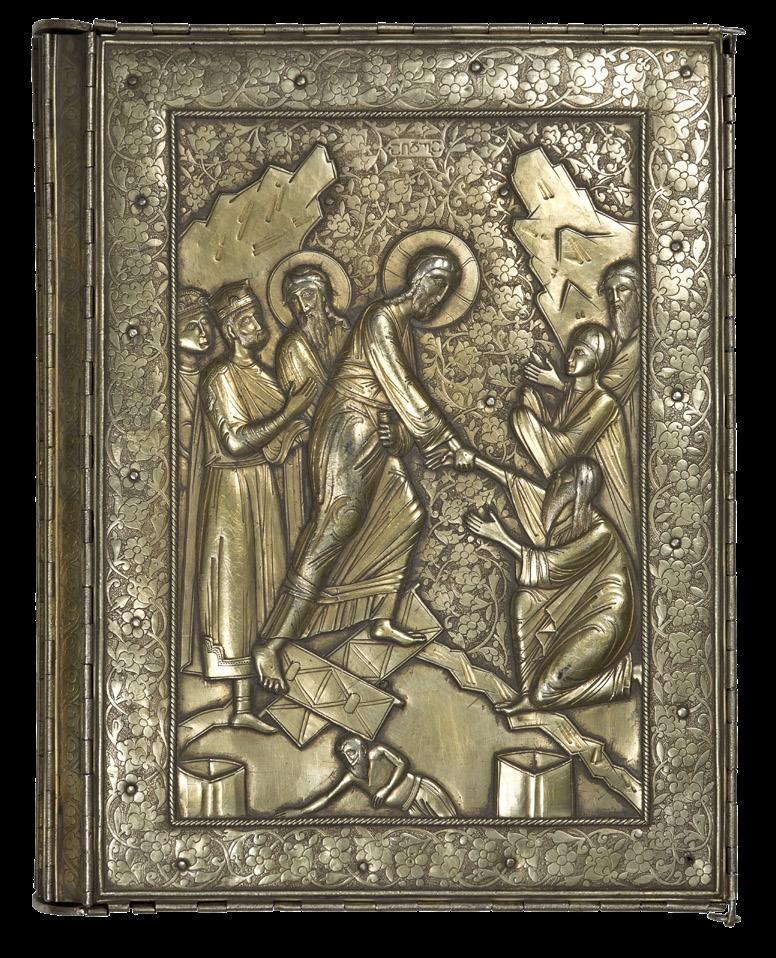
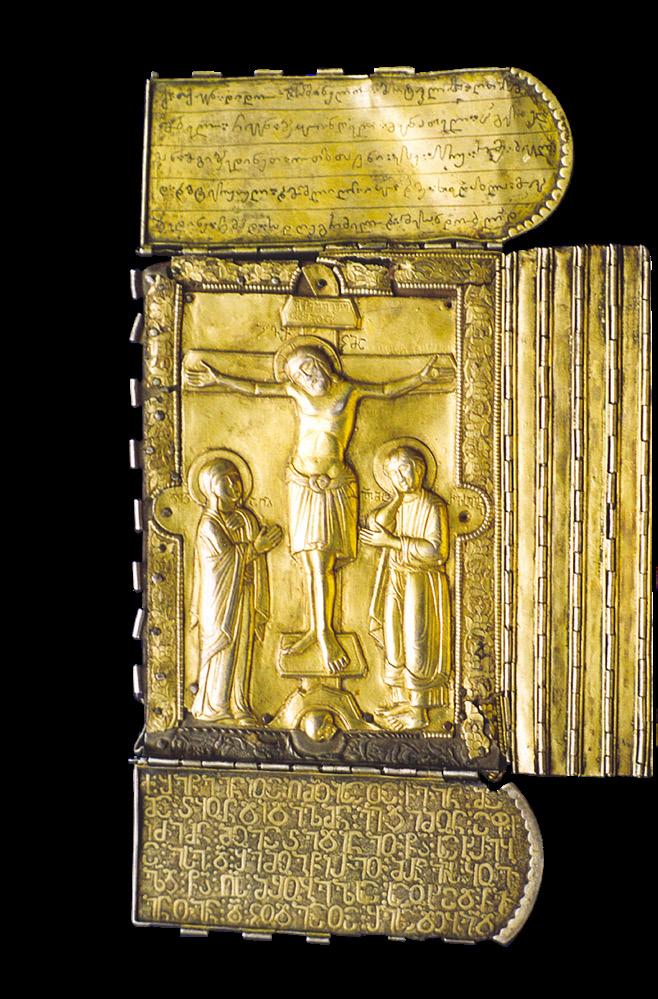

`saRvTo da wmida saxareba (Sewiruli) Cems mier ioakim mRvdelmonazonisa, kretelisa, skordilisad wodebulisa da vwirav mas sacxovneblad sulisa Cemisa, wmida da RvTivdabijebul mTasa sinasa, sazrunvelad Cveni (ama qveynidan) gasvlisaTvis 1604~. berma es sityvebi budeze berZnulad ki amoaWedina, magram bizantinistma eka WyoiZem miTargmna da aqve vuxdi madlobas. ioakimes miZRvniTi warwera ar gveubneba, sad Sesrulda budis moWediloba, magram is, uTuod, kaxeTis wamyvani saoqromWedlo skola-saxelosnos romelime xelgawafuli ostatis naxelavia. es danamdvilebiT viciT, radgan amave saxelosnoSi moiWeda alaverdis RmrTismSoblis karedi (yvarlis eklesiis aRmSeneblisa da winamZRvris, filipes Senawiri), mefis mxedarTmTavar erdiSer ColoyaSvilis mier dakveTili xatebi (`wm ioane naTlismcemlis Tavis kveTisa~ da e.w. `mTavarangelozTa kreba~) da
The mention of the God-trodden Mount Sinai and the imagery on the lid is not simply a destination marker. It embodies the idea of intercession before the Lord and is also a testament to the veneration of sacred relics.
We began our discussion of the casket with its folding lids, but we wished to honor the Greek donor and his sacred recipient. And indeed, the casket has a third lid as well, and, most significantly, an upper and lower cover. On the upper cover is the Harrowing of Hell – the Risen Christ has shattered the gates of Hell, vanquished the devil, and delivered the captives – Adam, Eve, and the righteous. The story, drawn from the apocryphal Gospel of Nicodemus, is rendered with characteristic Kakhetian restraint by the goldsmith. The figures are raised in a balanced and monumental manner, as though the artist breathes motion into them in open space. Their anatomy is convincing; the profile and three-quarter views ring true. And no, it’s not my imagination – Eve is smiling.
gorisjvris sakurTxevlis win aRsamarTi jvari. moxdenili kompoziciuri wyoba, daxvewili proporciebi, samosis
rbilad daSvebuli nakecebi, msubuqi moZraobebi... am da sxva niSnebTan erTad, kaxeTis saxelosnos xelweras fonis erTiani, xaliCiseburi, erTmaneTSi talRovani RerebiT gadaWdobili, foTlovan-yvavilovani ornamentic mowmobs. ioakimes rom ZRveni imTaviTve sinas mTis wm. ekaterines monastrisaTvis ndomebia Sesawirad, budis amosakec sarqvelze gamosaxuli `Seuwveli mayvlovanic~ adasturebs. alSi gaxveul, locvad xelaRpyrobil RmrTismSobels xelmarjvniv aleqsandrieli mowame ekaterine udgas samefo gvirgvin-SesamoselSi, fariTa da jvriT, rogorc sarwmunoebis mcveli; meore mxares ki _ wm. mose winaswarmetyveli kverTxiT, romelsac cecxlovani oreolidan angelozi ecxadeba. oreolze asomTavruli warweraa: `mose ixila m(a)yu(al)i dSeuwuel(a) d~ (gamosvla, 3.2; 4.17). es bibliuri ambavi swored sinas midamoebSi, xorebis mTaze moxda. iq ixila mosem mayvlis buCqi, romelsac cecxli ekida, ar ki iwvoda. iq gamoecxada ufali moses da sjulis ficrebi – aTi mcneba gadasca. warweraSi naxsenebi `RvTivdabijebuli mTa sina~ da sarqvelis kompozicia ubralod misamarTi araa. cxadia, ganmsazRvreli uflis winaSe meoxebis ideaa, magram siwmindeebis Tayvaniscemis dasturic xomaa!
Wedur budeze saubari amosakeci sarqvelebiT ki daviwyeT, magram berZeni mimgebelisTvis gvsurda migvego pativi da ZRvenis adresatisTvisac, Torem budes mesame sarqvelic aqvs da rac mTavaria, zeda da qveda yda.
zeda ydaze `jojoxeTiT warmotyvevnis~ kompoziciaa _ aRmdgarma macxovarma Semusra jojoxeTis bWeni, daTrguna eSmaki da ixsna tyveebi _ adami, eva da sxva marTalni. nikodimosis apokriful saxarebaSi moTxrobil ambavs oqromWedeli kaxuri sidinjiT udgeba, monumenturad da mwyobrad amohyavs figurebi, TiTqos Tavisufal sivrceSi `amoZravebs~ maT. damajerebelia maTi plastika. profiluri Tu 3/4-iani rakursebic bunebrivad JRers. da ara, ar meCveneba _ eva iRimis! zurgis mxares `jvarcmis~ scenaa _ im msxverplis Sexseneba, rac macxovarma kacobriobis sulTa xsnisTvis gaiRo. RmrTismSobeli da ioane RmrTismetyveli qristes orsav mxares, erTi SexedviT, mSvidad udganan. yvela garindula, magram qristes moSvebuli, tanjvisgan Ronegamoclili, gaRunuli sxeuli, mgloviare Wirisuflebis loyaze midebuli xelebi da Rrublebidan mocqirali angelozebi, namtiralev Tvalebs rom imSraleben, _ didi mwuxarebis niSnebia. `jvarcma~ _ `aRdgoma~. budis TiToeuli mxare xatis tolfasia. orive erTad – kacobriobis cxovnebis ideis gamamTlianebel-gamaZlierebeli. `jvarcma~ saxarebis ydaze yovelTvis gamoisaxeboda, lamis kanonad iyo miRebuli, magram wignis meore yda, rogorc wesi, `vedrebas~
The back cover depicts the Crucifixion – a reminder of the sacrifice Christ made for the salvation of humanity. The Virgin and Saint John the Theologian stand on either side of Christ, seemingly calm. All is still, yet the limp, anguished body of Christ, the grieving hands placed on cheeks, and the angels peering down from the clouds, wiping their tearful eyes – these are unmistakable signs of profound sorrow.
Crucifixion – Resurrection. Each side of the casket is the equivalent of an icon. Together, they encapsulate and amplify the idea of salvation. The Crucifixion was traditionally depicted on Gospel covers – it was practically a canon. The Resurrection, however, gradually came to replace the usual image of the Deesis (Intercession) on the second cover in the late Middle Ages. Though non-canonical, the episode plays a key role in the life of Christ and, when placed on the Gospel casket – a liturgical object representing Christ – it adds symbolic meaning to the path of salvation. The ornate covers of Gospel books were not only for protection; they held special significance during festive and especially Paschal processions and services.
On the vertical folding panel, within medallions, are the four Evangelists. Each is seated at an analogion with an inkwell. The master drew upon compositions popular in Byzantium when selecting their poses.
It is thus no surprise that a pilgrim from the distinguished Skordilis family of Crete, during his time in Georgia, would commission such a significant gift for the Monastery of Saint Catherine on Mount Sinai. His destination is understandable – back in his homeland of Heraklion, the Monastery of Saint Catherine was a dependency (metochion) of the Sinai monastery. But even if it had not been, a visit to this biblical site would have been a vital spiritual journey for any Orthodox pilgrim. What remains to be answered is what brought him to Kakheti. Could it be that King Levan of Kakheti (1520–1574), father of King Alexander, had founded a Greek metochion in Kvemo Alvani? And that his wife, Tinatin Gurieli, invited Greek painters to decorate the Church of Akhali Shuamta? Art historians T. Virsaladze and M. Vachnadze assert that Nekresi and Gremi too may have been painted by Greeks. Perhaps one of the Skordilis’ was among them? As I mentioned earlier, this family was famed for its painters!
I always imagine that, on the road to Egypt, the Cretan monk Joachim, pausing for rest, would unpack his bundle, gently unwrap the precious gift, tenderly run his hand over it, make the sign of the cross, and bless the hand of the Kakhetian craftsman.
We do not know exactly where that workshop stood – whether in Gremi, then the capital of Kakheti, or perhaps across the vineyards that stretch beyond – but Otar Chiladze’s words come to mind:
I love and cherish everything, It all feels like mine, When Gremi is this close, When Gremi is this close!

ekava. ai, `aRdgomasTan~ misi Sewyvileba gviandeli Sua saukuneebis drois gadawyvetilebaa. macxovris cxovrebis Tundac arakanonikuri, magram sakvanZo epizodi aseve Seesatyviseboda RmrTismsaxurebis Tanamonawile, qristes xatad gaazrebuli wignis sacav budes da misi, rogorc liturgikuli nivTis simbolur wakiTxvas gansazRvravda, rogorc sulis cxovnebis gzisas. saxarebis garekanis Zvirfasi ydiTa Tu budiT Semosvas yovelTvis didi yuradReba eqceoda, ara marto wignis daculobisTvis, aramed sazeimo, gansakuTrebiT saaRdgomo msvlelobisas, sagangebo saRmrTismsaxuro daniSnulebis gamo. grZiv amosakec sarqvelze, medalionebSi, oTxi maxarebelia. isini samelneebiT aRWurvil analoRiebTan sxedan. ostati pozebis SerCevaSi bizantiaSi gavrcelebul versiebs mimarTavs. amitom arcaa gasakviri, rom kunZul kretas warCinebul didgvarovanTa, skordilisTa warmomadgenelma piligrimma saqarTveloSi yofnis dros swored aq SeukveTa sinas
mTis wm. ekaterines monastrisTvis gankuTvnili, gansakuTrebuli mniSvnelobis ZRveni. savsebiT gasagebia, ratom aiRo gezi kretelma mRvdelmonazonma sinas mTisken – mis samSobloSi, heraklionSi mdebare wm. ekaterines monasteri swored sinas daqvemdebarebaSi
yofila. esec rom ar iyos, bibliuri adgilis monaxuleba marTlmadidebeli momlocvelisTvis isedac saSuri saqme iqneboda. magram ai, kaxeTSi ram Caiyvana? iqneb iman, rom Turme jer kidev aleqsandre kaxTa mefis mamas, levans (1520-1574 ww.), qvemo alvanSi berZnuli metoqioni dauarsebia? mis meuRles, TinaTin guriels ki axali SuamTis taZris mosaxatad berZeni mxatvrebi mouwvevia. xelovnebaTmcodneebi _ T. virsalaZe da m. vaCnaZe irwmunebian, nekresica da gremic, SesaZloa aseve, berZnebs moexataTo. iqneb vinme skordilisic yofiliyo maT Soris? aki mogaxseneT, am sagvareulos mxatvrebiT gauTqvams saxeli!
ise, sul mgonia, rom Cvengan egviptisken gzad mimavali mRvdelmonazoni ioakime, Sesvenebis Jams, uTuod gaxsnida bargs, amoiRebda saTuTad SefuTul ZRvens, faqizad gadausvamda xels, pirjvars gadaiwerda da kaxel ostats marjvenas daulocavda.
ar viciT, sad iyo is saxelosno _ kaxeTis imdroindel dedaqalaq gremSi Tu gremis venaxebs gaRma sadme, magram oTar WilaZis sityvebi maxsendeba: me yvelaferi momwons da miyvars, me yvelaferi mgonia Cemi, rodesac ase axloa gremi, rodesac ase axloa gremi!
elene Rlonti ELEEN GLONTI
„varskvlavebs ar eSiniaT, rom viRacas isini cicinaTelebi egonebaT, mxolod drom icis who is who" ase asrulebs marina ivaniSvili Tavis koncefcias, TiTqos gzavnils tovebs im droisTvis, romelic saboloo gadawyvetilebas miiRebs. mis bavSvobis dRiurSi Canaweria: „universaluri kretini IVANA, mxatvari, moqandake, mwerali, poeti. arc erTi seriozulad. salut!~ _ aqedan iwyeba marinas avtoportreti _ Seupovari sicxadiT da aSkara Sinagani bzariT.
1952 wlis, 17 maiss, TbilisSi, gazafxulze ibadeba da izrdeba gogo, romelic gauTaveblad daexeteba quCebSi, mudmivad Seyvarebulia da Tavis dRiurSi wers, rom „magrad iboRmeba.~ megobrobs biWTan, romelsac „palestinels~ eZaxis da cxovrebis amaoebasTan didi brZola aqvs gamarTuli.
es is adamiania, romelic mogvianebiT grafikaSi Seqmnis qandakebas da formas miscems, formis im gauZlurebas, romelsac cxovrebas veZaxiT. is yoveldRiurad ebrZvis uazrobas. eZebs simarTles sakuTar TavSi. ver egueba zedapirul urTierTobebs da xSirad gaurbis maT. ar ocnebobs Svilebze, ar erTveba magistralur karnavalSi, rCeba ganze da Riad tovebs sakuTar Tavs tkivilisTvis, TiTqos ikvlevs am grZnobas _ tkivils, rogorc adamianad yofnis erTaderT mtkicebulebas. mis interess ipyroben nebiT Tu uneblieT dogmebs miRma aRmoCenili adamianebi, is gaurbis normatiul xazs da eZebs maT, vinc gamefebul wesrigSi ucxoa. misi xedva mkafioa, misTvis arc mxatvrobaa mxolod esTetika da arc qandakeba _ ubralod forma, orive azrovnebis gamoxatulebaa.
daibada, rogorc TviTon wers, mkacr, da TavSekavebul ojaxSi, sadac emociebis gamoxatva didad miRebuli ar iyo. am sityvebis wakiTxvisas vxvdebi, rom swored am bavSvis Widilia marinas dualizmi.
“Stars are not afraid of being mistaken for fireflies; only time knows who is who.” This is how Marina Ivanishvili concludes her artist statement, as if leaving a message for that future time which will render the final judgment.
In her childhood diary, there is an entry: “Universal cretin IVANA, artist, sculptor, writer, poet. None taken seriously. Salute!” — this is where Marina’s self-portrait begins — with unyielding clarity and an evident inner fracture.
On May 17, 1952, in springtime Tbilisi, a girl is born and grows up, wandering the streets endlessly, constantly in love, writing in her diary that she is “ deeply embittered.” She befriends a boy she calls the “Palestinian” and wages a fierce battle against the vanity of life.
This is the person who, later in life will sculpt in graphics, giving the shape to the very fragility, we call life. She fights daily against futility. Seeks truth within herself. Cannot tolerate superficial relationships and tries to escapes them. She does not dream of children and refuses to join life’s grand carnival.Marina remains on the sidelines, and exposes herself to pain, as if studying it: pain, as the only proof of being human.She is drawn to people who find themselves beyond dogma-those who are strangers to the reigning order. She rejects normative lines and seeks those who do not belong.Her vision is lucid; for her, painting is not mere aesthetics, nor it sculpture simply a form — both are expressions of thought.
She was born, as she herself writes, into a strict and reserved family, where emotional expression was not encouraged. Reading those words, I realize that the struggle of this child is the source of Marina’ s duality.
In her sharp, continuous lines, in her ascetic, pared-down, minimalist vision, emotions erupt like a volcano. The body becomes the only vessel for expression, because the mind easily yields to constraints, but the body — never. The body — both mental and physical nakedness — is Marina’s central theme. “The history of humanity is the history of its relationship with the body — and the

mis mkacr da uwyvet xazebSi, mis asketur, damSral da minimalistur xedvaSi, vulkaniviT xeTqavs emocia. sxeuli xdeba akrZaluli emociebis gamoxatvis erTaderTi gza, radgan goneba martivad emorCileba CarCoebs, xolo sxeuli _ ara. swored sxeuli _ mentaluri da xorcieli siSiSvle _ es marinas mTavari Temaa. „kacobriobis istoria adamianis sxeulTan urTierTobis istoriaa da ZaladobaTa matiane...~ (m.i.) jvarcmis eskizebs Tan axlavs warwerebi:
chronicle of violence…” (M.I.) Sketches of crucifixion are accompanied by notes: “Who are they, the crucifiers, who are these people? The direct executors of the crucifixion.” (M.I.)
They say she was tall — man from the back, woman in profile — with long, strong fingers, which she devoted to sculpting. In a city where people live their lives cloaked in the fog of conventions, Marina is endlessly searching for herself — and at the age of sixteen signs her poems with a capital “Я” (ME). She responds precisely to the time
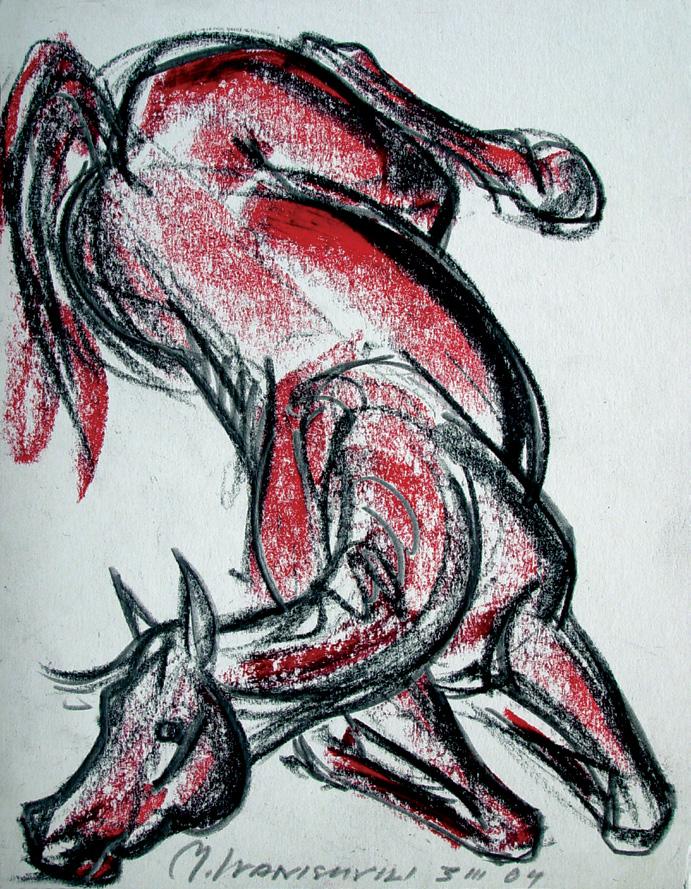

„vin arian isini, vinc qriste jvars acves, vin arian es adamianebi? jvarcmis uSualo Semsruleblebi.~ (m.i.) amboben, rom maRali iyo, zurgiT kaci, profilSi qali, grZeli Zlieri TiTebiT, romlebic Zerwvas miuZRvna. qalaqSi, sadac adamianebi konvenciebis burusSi atareben cxovrebas, marina gauTaveblad eZebs sakuTar me-s da 16 wlis asakSi daweril leqsebs xels awers didi asoTi „Я". marina zustad im dros pasuxobs, romelSic cxovrobs. es dro daxSuli, mkacrad Semorkaluli da dogmebSi damxrCvali Tbilisia. cxovelebi… Tu niko firosmanis cxovelebi jer ar dacemuli, naivuri, farTod gaxelili TvalebiT, jerac ucodvel mdgomareobas translireben, marina udrekad eWideba adamianis dacemis Temas da misi msxverplad Sewiruli cxovelebis Semyure vxvdebiT, rom jvarcmis uSualo Semsruleblebi _ TviTon varT. da isev sxeuli. qalis zurgi. plastika. misTvis sxeuli ara mxolod Zaladobis matiane, aramed saidumlo
she lives in. Tbilisi — closed-off, strictly confined, and suffocating in dogma.
Animals... If Niko Pirosmani’s animals reflect a state of innocent grace — wide eyed, untouched by the fall, Marina unflinchingly confronts the theme the human downfall. In the eyes of her sacrificed, martyred animals, we come to recognize ourselves- the direct executors of the crucifixion.
And again: the body. The woman’s back. The plasticity of form. For her, the body is not only a chronicle of violence, but also a secret thread to existence. From the naked erotic body — to the crucifixion. It is within this range that her philosophy revealed itself: the dematerialized, crucified Christ, in stark contrast to dense, erotically charged bodies, and the sacred seed each human carries within.
I In a text titled “Ascetic,” she writes about a man who renounces all bodily pleasures — except one: physical connection. And it is this connection that allows him to endure the crucifixion in utter silence:
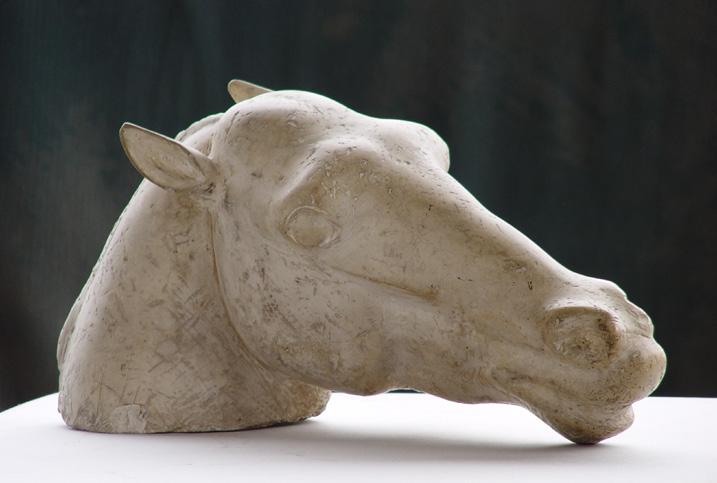
kavSiria yofierebasTan. SiSveli erotikuli sxeulidan _ jvarcmamde. swored am diapazonSi vlindeba misi filosofia: dematerializebuli, jvarcmuli qriste da masTan kontrastSi myofi mkvrivi, erotikulad savse sxeulebi da is sakraluri marcvali, romelsac yvela adamiani atarebs Tavis TavSi. teqstSi saTauriT „asketi~, wers kacze, romelic yvela xorciel siamovnebaze ambobs uars _ garda erTisa: fizikuri kavSirisa da swored es kavSiri aZlebinebs jvarze gakruls, bgerac rom ar dascdeba: „rogor gauZlo? ikiTxavs xalxi _ rwmena, amboben wyaroebi.
_ risi? _ kiTxulobs azri. _ ra? pulsirebs fiqri. _ is oTxi saaTi, ganTiadamde, yrud CurCulebs sxeuli.~ (m.i)
marina ar uaryofs erotizms, radgan marina ar tyuis. cru vulgaruli „wesiereba~ ki erTerTi yvelaze warmatebuli, Zaladobis saxecvlili formaa. mis bloknotSi vpoulob saTuTad Senaxul, mamakacis 4 fotos da vxvdebi, rom mis erotikul namuSevrebs Soris, am kacis portreti, SemTxveviT ar devs. es iyo didi
“How did he endure it? people will ask — Faith, say the sources. — In what? - Asks meaning. — What? pulses the thought. — Those four hours, until dawn, the body murmurs.” (M.I.)
Marina does not deny eroticism, because Marina does not lie and false, vulgar “decency” is one of the most successful disguised forms of violence. In one of her notebooks, I find four carefully preserved photographs of a man- and I realize that his portrait, among her erotic works, is no accident. It was a great love from the Academy years. Later came belated men, easily diminished beside her, unable to overcome their own smallness.
Marina did not chase ideals, and this text does not seek to idealize her either. Being close to her could be difficult. They say she would lift someone onto a pedestal, and then ruthlessly hurl them back to the ground. It’s clear that she did the same to herself: endlessly building and destroying her own idol. She painted and tore it down, annihilated what she had created, and constantly opposed herself. She lived within this contradiction.
And yet, this woman, who seemed anything but pragmatic, had a clear vision for the path art should take: public sculpture, the necessity of turning art into a product, new methodologies of teaching. Her head was not in the clouds. Quite the opposite, she constantly analyzed her

siyvaruli akademiaSi. mere iyvnen dagvianebuli kacebi, romlebic TiTqos advilad iCagrebodnen mis gverdiT, sakuTar simcires ver ereodnen.
idealebs marina ar isaxavda da arc am teqstis mizania misi gaidealeba, mis gverdiT yofna rTulic iyo. rogorc amboben, SeeZlo adamiani piedestalze aeyvana da Semdeg daundoblad daenarcxebina miwaze. naTelia, rom sakuTar TavTanac swored amiT iyo dakavebuli: gauTaveblad aSenebda da angrevda sakuTar kerps. xatavda da xevda, anadgurebda sakuTar Seqmnils da ewinaaRmdegeboda
environment at every level, in every layer— yet engaged with it in great fear and disappointment. She was distrustful, capable of cutting people off — and avoiding them for years.
But it must also be said that Marina — the daughter of Olia Koniashvili, a woman who carefully hid her talent and whose drawings lived hidden in drawers — broke this tradition of silence. In a family where talent was expected to be contained, she did not take the highway, but carved her own path. And in doing so, etched herself permanently into the hearts of Georgian rebels, as a woman who knew she was not a “combine harvester.”
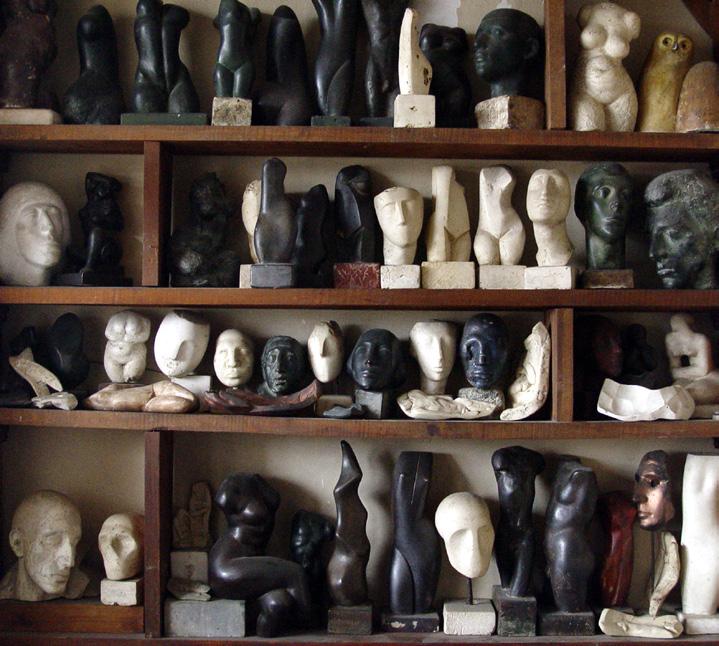

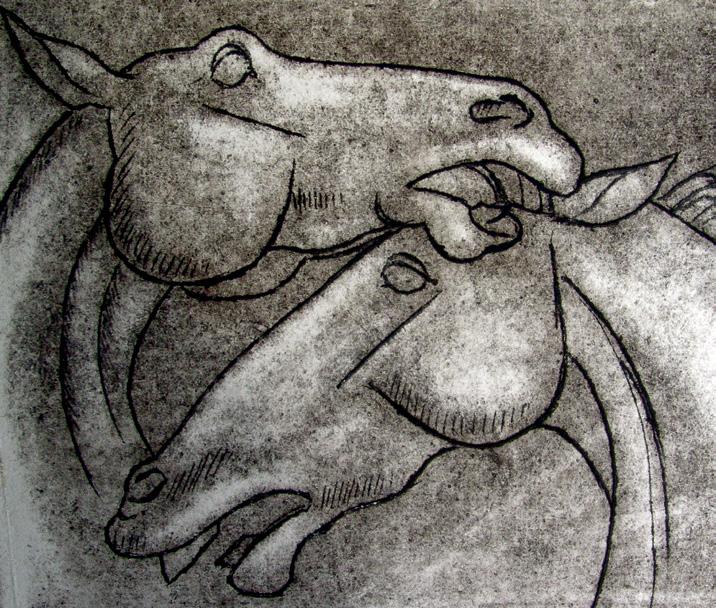
sakuTar Tavs _ am winaaRmdegobaSi gaatara cxovreba. Tumca, am erTi SexedviT, pragmatulobas moklebul qals, zustad hqonda Camoyalibebuli xelovnebis ganviTarebis gza: saparke qandakeba, xelovnebis produqtad qcevis aucilebloba, swavlebis meTodebi. RrublebSi namdvilad ar frenda. piriqiT, yvela SreSi, yvela fenaSi, mudmivad aanalizebda garemos, magram didi SiSiT da imedgacruebiT urTierTobda masTan. iyo eWviani da SeeZlo moekveTa adamiani _ aseTebs wlobiT gaurboda. magram isic unda iTqvas, rom olia koniaSvilis Svilma, qalisa, romelic Tavis niWs guldasmiT malavda da romlis naxatebic ujrebSi cxovrobdnen, ojaxSi, sadac
“What does it mean to be a woman? She is not a person. And she doesn’t know that she shouldn’t be a combine harvester. Neither her children, nor her husband, nor her relatives understand this.” (M.I.)
Her home — 35 Pekini Street. She spent her entire life here. They say that in winter she heated the room with a single electric stove. This house is her portrait. In the entryway, sculptures lined up on shelves: busts that bore witness to Marina’s solitude. People searched for her works here by flashlight.
Her childhood room, where she once danced and blast Pink Floyd at full volume — turned into a storage space. After her mother’s
TiTqos miRebuli iyo niWis moTmena, marinam es gaCumebuli niWis tradicia gaarRvia da ise, rogorc TviTon surda, ara magistralurad, aramed namdvilad, samudamod darCa qarTvel meamboxeTa gulebSi, rogorc qali, romelmac icoda, rom ar aris „kombaini~.
„ra aris iyo qali? ar aris pirovneba. da ar icis, rom ar unda iyos kombaini. es ar ician arc Svilebma, arc qmarma, arc axloblebma.~ (m.i.)
death, only the walls remained: her fortress, where she would sink into her inner journeys when she could no longer find anything real in the outside world.
In one interview, she says: “This architecture is an act of violence against me,” gesturing toward the army of skyscrapers rising in front of her balcony, slowly choking the sunrise from her windows.This house contains everything: dried pomegranate peels, gathered wires, dusty cups, old coins, broken jewelry, spoons and plates stacked in a jar of water. A graveyard of useless things. “Uselessness” as a concept, within a world obsessed with possession and consumption. On the
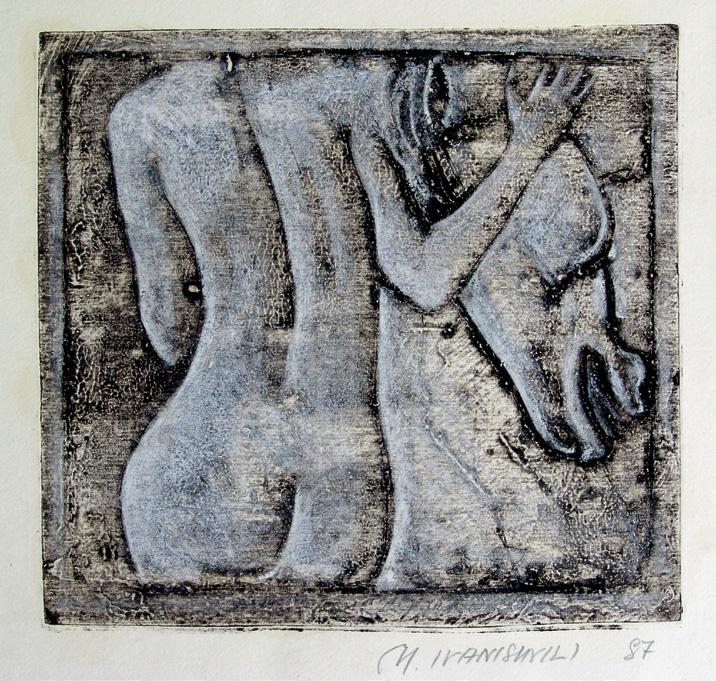

misi saxli _ pekinis 35. aq gaatara mTeli cxovreba. amboben, rom zamTarSi eleqtroquriT aTbobda oTaxs. es saxli misi portretia. SemosasvlelSi, Taroebze Camwkrivebuli qandakebebis wyeba: marinas martoobis Tanaziari biustebi. aq xSirad farnis Suqze eZebdnen namuSevrebs.
misi bavSvobis oTaxi, sadac cekvavda da bolo xmaze aRrialebda finq floids _ didi xnis winaT iqca sawyobad. dedis gardacvalebis Semdeg darCa mxolod kedlebi: misi cixesimagre, sadac Sinagan mogzaurobaSi iZireboda maSin, rodesac gareT verafers namdvils veRar poulobda. erT-erT interviuSi ambobs: „es arqiteqtura Cemze Zaladobs~ da xels iSvers _ misi aivnis win aSenebuli caTambjenebis jarisken, romlebic nel-nela axSoben aiss mis fanjrebSi.
am saxlSi yvelaferia: broweulis gamxmari qerqebi, Segrovebuli mavTulebi, mtvriani Wiqebi, Zveli monetebi, gawyvetili samkaulebi, wylian qilaSi Calagebuli kovzebi da sainebi. usargeblo nivTebis sasaflao. „usargebloba~ _ rogorc koncefcia, momxveWel da momxmarebel samyaroSi. kedelze warwera: „qarTuli erovnuli mentaliteti _ Cemi pikadili~.
misTvis samyaro sastikia. da am sisastikeSi dabadebuls, mxolod am samyarosTvis usargeblo arsebebis sjera. cxovelebis, romlebis gadarCenis mcdelobac maTi
wall, a scrawled inscription: “Georgian national mentality — my Piccadilly.”
To her, the world is cruel. And born into this cruelty, she believes only in those beings deemed useless by this world: animals whose rescue often ends in their own slaughter. She befriends mice, dogs, pigeons. They coexist with her — it seems like a harmony, but everything inevitably ends in a collapse. Neighbors complain. Marina puts thirteen shelter dogs to sleep. She gives one dog up for adoption in the Mtskheta region. In a dream, she sees a policeman killing the dog. The moment she wakes up, she knows it’s true. She chooses mercy over betrayal—killing over abandonment.
This story became a breaking point in many people’s relationship with her. But for me, it most clearly reflects how her life gradually became saturated with pain and solitude.
Marina felt a deep connection to Henry Moore and longed to break through the post-Soviet space. In her papers: printed applications for American grants, residencies, penciled-in deadlines. She demanded of herself to escape this space through her art — but this would only happen after her death.
I can’t shake the feeling that the broken sculpture of a reclining woman, placed beneath the shelf on her balcony — is Marina herself. Above it: wires, bottles, burnt pots, dog collars, gnawed bones. Between old mattresses, a book covered in dust — Psychology. This house is a story. A story about her strict asceticism and the invisible, alternative matriarchy that refuses to accept the established order.
On the living room door , an Indian tinkling musical instrument emits a magical sound when the opened— this is a threshold.
Paintings everywhere: Marina’s unknown abstractions, works her curators did not like. What a journey from these abstractions to her graphics. What a range! Who is this woman? After her death, what remains is: a countless number of sketches —searching, searching, searching — and many notes: on scraps of paper, on walls, phone numbers, “Я.”
On the apartment door, a message: “Marina, call me if you can.” — still hiding from someone.
In her notes, she describes situations in a dry manner. Her narrative is concrete, factual. Nothing is left ambiguous. This precision is her style: specificity that evokes associations. She builds scenes like monologues.
From her phone notebook: “I borrowed 20 gel from Samson, today is July 6.” “Nika gave me 20 gel…” “Today, 30/6 — I found 30 gel at home.” “Bought spray paint.” “No pension until September.” “I got cash!” (A work was sold.)
When this happened, she would call her friends who supported her in hard times and split the money with them.
On one sheet of paper: Baudelaire’s Litany to Satan, “I translated it myself during a time of drowning. Long ago”:
O wisest of the wise, soul of evil among angels
You who are God himself, spurned by fate’s frenzy —

mkvlelobiT sruldeba.
umegobrdeba Tagvebs, ZaRlebs, mtredebs. isini masTan Tanaarseboben, es TiTqos harmoniaa, magram yvelaferi isev gardauvali dacemiT sruldeba.
mezoblebi uCivian. marina 13 Sekedlebul ZaRls aZinebs. erT ZaRls mcxeTis raionSi gaaSvilebs. sizmarSi xedavs, rogor klavs policieli am ZaRls. gaRviZebisTanave icis, rom es simarTlea. urCevnia sakuTari nebiT, mSvid Zils miabaros isini, visac veRar daicavs. Ralats _ mkvlelobas amjobinebs.
es istoria bevrisTvis wyalgamoyofi aRmoCnda masTan urTierTobaSi, me ki vfiqrob, rom yvelaze mkafiod asaxavs, rogor gaiJRinTa tkiviliT da martoobiT misi cxovreba.
marina Sinaganad urTierTobs henri murTan da didi survili aqvs gaarRvios postsabWoTa sivrce. mis furclebSi vpoulob amobeWdil amerikul grantebs, rezidenciebs, fanqriT gaxazul TariRebs, is sakuTar Tavs sTxovs, rom gavides am sivrcidan Tavisi xelovnebiT, magram es mxolod misi sikvdilis Semdeg moxdeba. me ki, ar mtovebs gancda, rom mis aivanze, Taros qveS moTavsebuli, damtvreuli mwoliare qalis qandakeba _
Satan, help me in my boundless suffering!
You, friend of rebels and hermits, keeper of secrets, Patron of flying thoughts and desperate hands — Satan, help me in my boundless suffering!
You, foster father of the forsaken, Whom God the Father still rejects and hunts — Satan, help me in my boundless suffering!’
This is her prayer.
From the slightly tilted balcony the sound of running children. Spring. She once punched a man in the courtyard, knocked him down. In the bedroom: works by the Florenskys and her mother. In one corner — Marina’s necklaces carefully hung on nails. Next to them, a newspaper clipping: “дедушка, дай миллион!” (“Grandpa, give me a million!”)
On the cupboard: recorded dreams, a questionnaire for a friend, and among the medicine boxes, a note jammed in: “May 12, ’89 — Diary of a Homosexual Killer.” There is a certain kind of lightness in her paintings that only those who have endured great pain can know.
TviTon marinaa. zemodan mavTulebi, boTlebi, damwvari qvabebi, ZaRlebis yelsabamebi da gaRrRnili Zvlebi. leibebs Soris mtverSi amovlebuli wigni, _ „fsiqologia~. es saxli ambavia. ambavi mis mkacr asketizmze da uxilav alternatiul matriarqatze, romelic uars ambobs arsebul wyobaze.
didi oTaxis karebze, induri JRaruna musikaluri instrumenti karis gaRebisas jadosnur xmas gamoscems _ es sazRvaria.
yvelgan naxatebi: marinas ucnobi abstraqciebi, romlebic ar uyvarT mis kuratorebs. ramxela gzaa am abstraqciebidan mis grafikamde. ramxela diapazoni! vin aris es qali?
misi sikvdilis Semdeg darCenilia: Canaxatebis auracxeli raodenoba: Zieba, Zieba, Zieba da bevri Canaweri: furclis naglejebze, kedlebze, „Я~ telefonis nomrebi. binis karebze warwera _ „marina, Tu moaxerxeb damireke~ _ isev viRacas emaleba.
CanawerebSi mSralad aRwers situaciebs. misi Txroba konkretuli da faqtobrivia. arafers tovebs bundovans, am sizusteSia misi stilic: konkretika, romelic aCens asociaciebs. monologiviT awyobs scenebs. satelefono bloknotSi: „samsons gamovarTvi 20l, dRes 6 ivliss~; „nikam momca 20 lari…~; „dRes 30/6 vipove saxlSi 30 lari~; „viyide Spray Paint~; „pensia ar meZleva seqtembramde~; „mayuTi viSove!~ (namuSevari gaiyida). am dros eZaxis axloblebs, romlebic xels umarTavdnen da „fulebs~ urigebs.
erT furcelze: bodleris litania satanas, „Tavad me vTargmne xrCobis Jams. didi xnis winaT~: o, brZenTa brZeno, angelozT Soris sulo boroto, igive RmerTo, miuRebelo bedis TareSiT satanav, miSvele uzomo tanjvaSi!
Sen, megobaro meamboxeTa da gandegilTa mesaidumlev mfarvelo gafrenil azrTa da xelebis satanav, miSvele uzomo tanjvaSi!
Sen, mamobilo im sacodavTa, vis mama-RmerTi dRemde gamwyrali, devnis Tavisgan. satanav, miSvele uzomo tanjvaSi!
es misi locvaa. am dros mis naxatze minaweri _ „70-41-63 atmori iafad~. miwieri yofis autanloba. maklerebis nomrebi da bina pekinis 35-Si, mziani, didi bina, romelic kinaRam waarTves. odnav gadaxrili aivnis mxridan saxlSi Semodis bavSvebis yvirili, gazafxulia. erT kacs, aq ezoSi, ybaSi mosdo da waaqcia. saZinebelSi florenskebis da dedis namuSevrebi. erT kuTxeSi _ koxtad lursmnebze marinas mZivebi. mZivebTan gazeTidan amoWrili „дедушка, дай миллион!~ karadaze: Cawerili sizmrebi, kiTxvari megobars da wamlebs Soris CarWobili furceli _ „89 wlis maisi, homoseqsuali kileris dRiuri~. mis naxatebSi raRac simsubuqea, romelsac mxolod didi tkivilis matarebeli adamianebi icnoben.
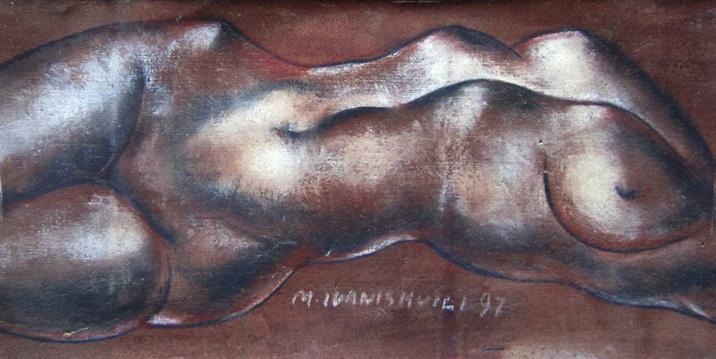

did oTaxSi _ kedelidan giyurebs avtoportreti. mis gverdiT lamazi kaci, gamokveTili yvrimalebiT. da mainc, ramdenic ar unda eZio, uyureb da fiqrob _ `vin aris es qali?~, Caxmaxis wuTi. bnel sivrceSi aSlili boli, Savi yvavilis samudamod mkvdari foToli.
lYuciferi: _ vin aris es qali, vin aris es qali aseTi cisferi?~
(galaktioni)
es teqsti ar aris biografia, ufro Ziebaa — xilvadisa da uxilavis zRvarze myofi, enigmaturi qalis, marina ivaniSvilis Sesaxeb werac da dumilic Tanabrad rTulia — amitom vcade gamevlo mis SreebSi ise, rogorc mis saxlSi Sevdiodi: frTxilad, dakvirvebiT da bevri SekiTxviT.
In the living room — her self-portrait stares at you from the wall. Next to her: a beautiful man with sharp cheekbones.
And still, no matter how long you search, you look at her and wonder — Who is this woman?
The trigger’s moment. Smoke unraveling in a dark room. ever-dead petal of a black flower.
Lucifer: Who is this woman, who is this woman, So blue?
— Galaktion Tabidze
This text is not a biography. It is a search. A search for Marina Ivanishvili — an enigmatic woman who lived at the threshold of the visible and the invisible.
To write about her — or to remain silent — is equally difficult. So I tried to move through her layers the way I once entered her home: carefully, attentively, and full of questions.
qarTuli xalxuri simRerebis, gamorCeul momReralTa xmebis Cawera-Senaxvis procesi XX saukunis dasawyisidan daiwyo da Semdgom, „unikaluri Canawerebis“ saxeliT cnobili firfitebis saxiT gamoica. Tumca bedi yvelas erTnairad rodi swyalobs. am mxriv erT-erTi gamorCeuli, bedisagan mravali „gamocdis~ gadatanili gaxldaT lanCxuTeli momRerali da lotbari, patiosani SromiTa da alali guliT qveyanaze mavali, iliko morCilaZe. adre daoblebulma ilikom musikaluri niWis wyalobiT Tavis garSemo Semoikriba momRerali megobrebi da SesaniSnavi gundi Camoayaliba. Tumca maTi Canaweris firfitaze gadatana ver moxerxda. Tavad ilikos bedic ukuRma datrialda _ 1936 wels, 10 wliani patimroba miusajes da cimbirSi gadaasaxles. iqidan ki janmrTeloba Seryeuli da gulgatexili dabrunda. is wlebi ki, romelic simReraze fiqrs, gundTan erTad simReriT molxenasa da SemoqmedebiT wvas unda daTmoboda _ ase fuWad da imavdroulad mZimed warimarTa. Tumca amaze cota mogvianebiT...
qarTvel kompozitor Salva mSveliZes konservatoriaSi studentobis dros, misi xelmZRvanelis, dimitri arayiSvilis davalebiT dauwyia xalxuri simRerebis moZieba-Sekreba. am mizniT saqarTvelos ramdenime kuTxeSi da maT Soris guriaSic Cautarebia eqspedicia. 1930-31 wlebSi is estumra lanCxuTSi, im droisTvis cnobil momReralsa da lotbar iliko morCilaZes. ilikos 16 kaciani ansambli hyavda, Tumca Caweris dros misi wevrebis garda, mas sxva guruli momRerlebic mouwvevia. Cawera

The process of recording and preserving Georgian folk songs and the voices of exceptional singers began in the early 20th century, eventually resulting in the release of phonograph records known as “unique recordings.” But fate has not smiled equally upon everyone. One especially notable and severely tested figure in this regard was Iliko Morchiladze, a singer and choir leader from Lanchkhuti – an honest man who walked through life with dignity and an open heart. Orphaned at an early age, Iliko gathered fellow singers around him and formed an outstanding choir thanks to his musical talent. Unfortunately, their recordings were never transferred to vinyl. Iliko himself suffered a cruel twist of fate – sentenced to 10 years in prison in 1936, he was exiled to Siberia. He returned with broken health and a wounded spirit. The years that should have been spent reflecting on music, singing joyfully with his choir, and immersed in creative passion were thus spent in vain – and in hardship. But more on that later…
While still a student at the conservatory, Shalva Mshvelidze was tasked by his mentor, Dimitri Arakishvili, with collecting and researching folk songs. This mission led him on expeditions through various regions of Georgia, including Guria. In 1930–31, he visited Lanchkhuti to meet the then-renowned singer and choir leader Iliko Morchiladze. Iliko led a 16-member ensemble, but for the recording session, he invited other Gurian singers in addition to his own choir members. The recording took place in Iliko’s home, with some of the finest Gurian singers in attendance. For this reason, the session became known as the “Lanchkhuti Gathering.” Mshvelidze recorded 13 songs from the Lanchkhuti singers.
Though details about Iliko Morchiladze and his choir are limited, the materials available to us allow for meaningful reflection.
Iliko Kakabi’s son Morchiladze was born in 1891 in the village of Silaura, in the Ozurgeti district. Orphaned young, he was taken in by his aunt Anushka Goguadze in Sachamiaseri, and later they moved to Lanchkhuti. She taught him to read and write. Iliko displayed musical talent from an early age. He studied singing with the famous vocalist and choir leader Varlam Simonishvili and initially performed in Simonishvili’s 15-member choir, formed in 1903. In 1917, this choir was invited to perform in Tbilisi, where the composer Kote Potskhverashvili gave a speech highlighting the diverse nature and complexity of Gurian songs. Alongside Iliko, the choir included singers like the Pipaishvilis and Khukhunaishvilis from Zemo Akati. Later, Iliko formed his own group – first with 4–5 members, eventually
ilikos saxlSi moxda da saukeTeso guruli/lanCxuTeli momRerlebi Sekrebilan. swored amitomac es movlena „lanCxuTis krebis“ saxeliTa cnobili. Salva mSveliZem lanCxuTeli momRerlebisagan 13 simRera Caiwera. iliko morCilaZesa da misi gundis Sesaxeb sakmaod mwiri cnobebi gvaqvs, Tumca Cvens xelT arsebuli masalebiT, bevr rameze SegviZlia vimsjeloT.
cxovrebis sawyisi wlebi da pirveli maswavlebeli iliko kakabis Ze morCilaZe daibada 1891 wels ozurgeTis mazris sofel silaurSi. adre daoblebuli, mamida anuSka goguaZes wauyvania saWamiaserSi, xolo Semdeg sacxovreblad gadasulan lanCxuTSi. werakiTxvac mamidam Seaswavla. simReris niWi bavSvobidanve gamouvlenia. axalgazrda ilikom simRera cnobil momReralsa da lotbar varlam simoniSvilTan Seiswavla. Tavdapirvelad masTanve mReroda 1903 wels Seqmnil 15 kacian gundSi. 1917 wels gundi miwveuli iyo TbilisSi gamarTul koncertze, sadac sityviT gamosula kompozitori kote focxveraSvili da aRuniSnavs gurul simReraTa mravalferovani buneba da sirTule. ilikos garda am gundSi mRerodnen fifaiSvilebi da xuxunaiSvilebi zemo akeTidan... Semdeg ki ilikom Tavad Seqmna jer 4-5 kaciani, Semdeg 16 kaciani gundi. qmnida simRerebs, Txzavda leqsebs, atarebda gundTan erTad koncertebs, aramarto raionSi, aramed qvemo imereTsa da samegreloSic. xSir SemTxvevaSi es koncertebi saqvelmoqmedo xasiaTs atarebda. koncertis win debdnen xelSekrulebas, romelsac gundis yvela wevri awerda xels (arqivSi daculia erT-erTi xelSekrulebis dedani). ilikos leqsebi da Semoqmedeba mis Svils gaugzavnia
TbilisSi ivane SilakaZesTvis, razec man weriliT upasuxa, sadac werda, rom am xelnawerebs xalxuri Semoqmedebis saxls gadascemda.
iliko ojaxs TerZobiT inaxavda. ganTqmuli iyo misi Sekerili boxoxebi, gundis wevrebsac usasyidlod Seukera Coxa-axaluxi, boxoxi da aziurebi. mis saxelosnoSi Tavs iyridnen gundis wevrebi da mecadineobac xSirad iqve tardeboda. iqaurobis xSiri stumari gaxldaT guruli simRerebis didi moyvaruli parmen cincaZe. saRamos, samsaxuridan dabrunebuli iliko, vaxSmis Semdeg, Svilebs _ miSas da naTelas daisvamda da aswavlida gurul simRerebs. maTi oda saxlis aivnidan xSirad esmodaT mezoblebs simReris xma. iliko morCilaZe pirovnuli TvisebebiTac gamoirCeoda. Tbilsa da mosiyvarules stumari uyvarda. saRamos Sin dabrunebuls savse kalaTiT sanovage mohqonda. male stumrebic _ misi momRerali axloblebic Tavs moiyridnen da simRerebiT galamazebuli lxini imarTeboda xolme. „stumari, babu, sul unda gyavdeso~ _ etyoda SviliSvils. „lanCxuTis krebiT~ cnobili Seyra da momRerlebis Cawerac ilikos saxlSi moxda.
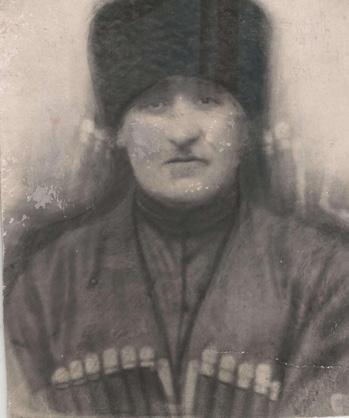
growing to 16. He composed songs and poems, organized concerts not only locally but also in Lower Imereti and Samegrelo. Many of these concerts were charitable. Before each event, the choir members signed a contract – an original of one such agreement is preserved in the archives. Iliko’s son sent his poetry and compositions to Ivane Shilakadze in Tbilisi, who replied that he would donate the manuscripts to the House of Folk Art.
Iliko supported his family as a tailor. He was famous for his handmade bokhokhs (Georgian traditional hat) and generously crafted traditional outfits for his choir members free of charge. His workshop served as a regular rehearsal space. Among its frequent visitors was Parmen Tsintsadze, a devoted fan of Gurian music. After returning from work in the evenings, Iliko would gather his children, Misha and Natela, and teach them Gurian songs. Their home’s veranda often echoed with singing that neighbors could hear. Iliko’s character was as remarkable as his talent – warm, affectionate, and deeply hospitable. He would return home in the evenings with a full basket of provisions, and soon his singer friends would gather, turning the evening into a joyful musical celebration. “A guest is always welcome,” he would say to his grandson. The famous “Lanchkhuti Gathering” recording session took place in his house.
Iliko Morchiladze’s Choir
In 1923, Iliko Morchiladze founded a 16-member choir – the first district choir in Lanchkhuti. Various incomplete records have preserved the names of its members. When pieced together, a
iliko morCilaZis gundi
iliko morCilaZem 1923 wels Seqmna 16 kaciani gundi. xazgasmiT unda aRiniSnos, rom lanCxuTSi es gaxldaT pirveli saraiono gundi. misi gundis wevrTa vinaobaze sxvadasxva, arasruli cnobebia Cvenamde moRweuli. maTi Sejerebisas gamoikveTa saerTo gvarebi. esenia: noe sarjvelaZe, gito lomaZe, varlam sixaruliZe, nitifo baRdavaZe, irodi asaTiani, eliso zoiZe, biqtor loria, nikoloz cincaZe... ansamblis arasrul sias avsebs lanCxuTis mxareTmcodneobis muzeumSi daculi ilikos meuRlis, lidas xelnaweri, sadac Semdegi gvarebia CamoTvlili: ermalo ormocaZe, ladiko pataraia, iese gogiCaiSvili, kalistrate qanTaria, arsen ebraliZe. sxva cnobebSi gvxvdeba aseve Semdegi gvarebi: grigol gujabiZe da platon xinTibiZe (ilikos Svilis _ naTelas cnobiT Semdegi gvarebic gvxdeba _ varlam megreliSvili, lavrenti CxartiSvili, mose gorgilaZe, isaki uruSaZe). am momReralTagan gansakuTrebuli xmebiT gamoirCeodnen mokrimanWule gito lomaZe da araCveulebrivi moqnevis mqone bani irodi asaTiani, aseve ilikos gundis erTguli da ucvleli wevri, damwyebi noe sarjvelaZe. lanCxuTis mxareTmcodneobis muzeumis Tu saojaxo arqivebSi daculia ori foto, sadac SegviZlia amovicnoT SuaSi Tavad iliko morCilaZe, mis marcxniv noe sarjvelaZe da noes gverdiT gito lomaZe. Salva mSveliZis mier „lanCxuTis krebis~ dros Cawerili simRerebi daculia oqros fondSi. simRerebis ilikoseul variantebs SemdgomSi sxva momRerlebic mRerodnen. ase magaliTad ZimiTeli platon xinTibiZesagan uswavlia mis biZaSvils barnab xinTibiZes „maspinZelsa mxiarulsa“-s ilikoseuli varianti, am ukanasknels ki anzor maTiTaiSvilisTvis gadaucia, romelsac Tavis ansamblSi gaukeTebia es simRera. aseve „ieriSi“-s ilokos variants, varlam vaSalomiZem aaJRra Tavis ansambl „dila“-Si.
`lanCxuTis kreba~ ratom moxda, rom Salva mSveliZe lanCxuTel momRerlebs ewvia da ara sxvebs, amaze cnobebs gvawvdis istorikosi raul sixaruliZe, romlis babuis Zma _ varlam sixaruliZec ilikos gundSi mReroda: „cnobili momRerali aqvsenti megrelaZe gaxldaT Suamavali. man urCia Salva mSveliZes _ „lanCxuTSi saukeTeso momRerlebi arian da Caweras Tu apireb, isini Caiwereo“. ase Caiwera Salva mSveliZem ilikos gundisagan zemoTnaxsenebi 13 simRera: „dedoflis simRera“, „ieriSi“, „xasanbegura“, „latariis simRera“, „me rusTveli“, patara sayvarelo“, „salaSqro“ (`jer vusurvoT~), „sazeimo“, „Svidkaca“, „axali guruli
consistent list of surnames emerges: Noe Sarjveladze, Gito Lomadze, Varlam Sikharulidze, Natifo Baghdavadze, Irodi Asatiani, Eliso Zoidze, Biktor Loria, and Nikoloz Tsintsadze. A handwritten document by Iliko’s wife Lida, preserved in the Lanchkhuti Local Museum, adds the following names: Ermalio Ormotsadze, Ladiko Pataraia, Iese Gogichaishvili, Kalistrate Kantaria, and Arsen Ebralidze. Other sources also mention Grigol Gujabidze and Platon Khintibidze. According to Iliko’s daughter Natela, additional names include Varlam Megrelishvili, Lavrenti Chkhartishvili, Mose Gorgiladze, and Isaki Urushadze. Among the singers, several voices stood out – Gito Lomadze performer of Krimanchuli, Irodi Asatiani with his exceptional range, and the faithful, ever-present Noe Sarjveladze. Two photographs preserved in family and museum archives show Iliko at the center, with Sarjveladze to his left and Lomadze beside him. The songs recorded during the “Lanchkhuti Gathering” are housed in the Golden Fund. Many of Iliko’s versions have been passed down to other singers. For instance, Platon Khintibidze from Dzimiti taught his cousin Barnaba Khintibidze Iliko’s version of “Maspindzelsa Mkhiarulsa,” which was later passed to Anzor Matitaishvili and performed with his ensemble. Similarly, Varlam Vashalomidze revived Iliko’s version of “Ierishi” with his ensemble Dila.
The Lanchkhuti Gathering
Why did Shalva Mshvelidze choose to record in Lanchkhuti and not elsewhere? According to historian Raul Sikharulidze – whose great-uncle Varlam Sikharulidze sang in Iliko’s choir – it was the

urmuli“, „ali faSa“, „Cven mSvidoba“, „daTvis wveuleba“. am simRerebidan ori, „axali guruli urmuli~ da „daTvis wveuleba~ Tavad iliko morCilaZis Seqmnili simRerebia. marTalia „daTvis wveulebis~ sxva variantebic arsebobs, magram CanawerSi ilikoseuli variantia. rodesac cnobilma momReralma, `guriis bulbulad~ monaTlulma samuel CavleSvilma ilikoseuli „daTvis wveuleba“ moismina, mowonebia da Semdeg iqve, TviTon ufro rTuli varianti uTqvams.
ilikos saxli iyo is adgili, sadac momRerlebs uyvardaT Sekreba. iliko saukeTeso maspinZeli gaxldaT, bunebiT metad keTilSobili da mSvidi adamiani iyo. erTi stumari rom movidoda, meores SeuTvlidnen: esa da es ilikosTan aris da Senc Camodio. ilokos stumarTa CamonaTvalSi im drois yvela cnobili momReralia: samuel CavleSvili, ladime berZeniSvili, artem erqomaiSvili, xuxunaiSvilebi... ase magaliTad, 1924 wels, Zveli stiliT giorgoba dRes, ilikos stumrebia akeTeli momRerlebis ansambli „Svidkaca“, kowia xuxunaiSvilis xelmZRvanelobiTa da sruli SemadgenlobiT; radgan stumrad iyo Casuli samuel CavleSvili, sufsis gundis TanxlebiT, momRerlebs Soris didi siyvaruliT, megobrobiTa da Rrma emociebiT, simReraSi paeqroba gamarTula.
cxovrebis bolo wlebi
ilikos cxovreba metad tragikulad warimarTa. 1936 wels mas trockistoba daswames da cimbirSi, qalaq kalimaSi gadaasaxles. 10 wlis Semdeg dabrunebuls, janmrTeloba metad Seryeuli hqonda, aRar SeeZlo damoukideblad gadaadgileba. man veRar SeZlo gundis xelmZRvaneloba, miT ufro, rom mis yofil gunds, axali xelmZRvaneli hyavda _ vasil maxaraZe. am gundis erTguli wevrebi da megobrebi ilikosTan mainc midiodnen samRerlad da mosanaxuleblad. iliko morCilaZe gardaicvala 1955 wlis 28 oqtombers. dakrZalulia lanCxuTSi, agarakis sasaflaoze. 1997 wlis 27 ivniss quCas, sadac cxovrobda lotbari, araerTi simReris avtori, raionuli ansamblis pirveli Camomyalibebeli da xelmZRvaneli, qvelmoqmedi iliko kakabis Ze morCilaZe ewoda, misi saxeli.
iliko morCilaZis gundis Canawerebi dRes ukve did mniSvnelobas iZens. Tavad ilikos simRera `Zveli guruli urmuli~ wlebis win gaacocxla da scenaze aaJRera ansamblma `anCisxati~. fondSi daculi 13 simRera Cveni kulturuli memkvidreobaa. xolo iliko morCilaZe _ lotbari, romelmac simReriT Seqmna Cveni istoria.
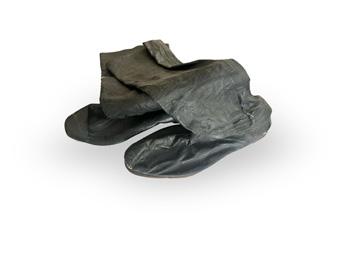
well-known singer Akvsenti Megrelishvili who suggested it: “If you’re planning to record, go to Lanchkhuti – the best singers are there.” Thus, Mshvelidze recorded the following 13 songs from Iliko’s group: “Dedoplis Simghera,” “Ierishi,” “Khasanbegura,” “Latariis Simghera,” “Me Rustaveli,” “Patara Sakvarelo,” “Salashqro”, “Sazeimo,” “Shvidkatsa,” “Akhali Guruli Urmuli,” “Ali Pasha,” “Chven Mshvidoba,” and “Datvis Tsveuleba.” Of these, “Akhali Guruli Urmuli” and “Datvis Tsveuleba” were composed by Iliko himself. Though other versions of “Datvis Tsveuleba” exist, the recorded one is Iliko’s. When the celebrated singer Samuel Chavleshvili, known as the “Nightingale of Guria,” heard Iliko’s version of “Datvis Tsveuleba,” he was so impressed that he immediately performed his own more complex variant.
Iliko’s home was a favorite gathering place for singers. A generous host by nature, he was known for his hospitality and calm demeanor. When one guest arrived, they would summon others: “So-and-so is at Iliko’s, come join us!” His visitors included nearly every renowned singer of the time – Samuel Chavleshvili, Ladrime Berdzenishvili, Artem Erkomaishvili, the Khukhunaishvilis… For example, on St. George’s Day (old style) in 1924, Iliko hosted the “Shvidkatsa” choir from Akati, led by Kotzia Khukhunaishvili, along with the Supsa choir and Chavleshvili. Their gathering turned into a deeply emotional and friendly musical rivalry.
Iliko Morchiladze’s life took a tragic turn. In 1936, he was accused of being a Trotskyist and exiled to the city of Kolyma in Siberia. After ten years, he returned home in poor health, unable to walk unaided. He could no longer lead the choir, which now had a new director – Vasil Makharadze. Nevertheless, loyal friends and former choir members continued to visit Iliko to sing with him and offer companionship. Iliko Morchiladze passed away on October 28, 1955, and was buried in Lanchkhuti, at the Agaraki cemetery. On June 27, 1997, the street where this choir leader, composer of many songs, founder of the district’s first ensemble, and philanthropist had lived, was named in his honor.
Today, the recordings of Iliko Morchiladze’s choir carry profound significance. His song “Akhali Guruli Urmuli” was revived and brought to the stage by the ensemble Anchiskhati. The 13 songs preserved in the archives are a treasured part of our cultural heritage. And Iliko Morchiladze – choir leader and creator of music – is a man who helped write our history in song.
THEA MUKERIA
Tbilisis saxelmwifo kameruli orkestri _ „saqarTvelos sinfonieta“ ukve 10 welia rac marTavs „Tbilisis baroko festivals“, romelmac mniSvnelovani adgili daimkvidra rogorc saqarTvelos, agreTve msoflios kulturis rukaze. festivali, saqarTvelos kulturis saministros, Tbilisis meriis, italiis, safrangeTisa da germaniis saelCoebis mxardaWeriT, msoflioSi aRiarebul varskvlavebs maspinZlobs yovelwliurad.
evropis qveynebis barokos musikis did tradiciebs Tu SevadarebT, SesaZloa 10 weli bevri arc mogeCvenoT, Tumca danamdvilebiT SegviZlia vTqvaT, rom festivalma ukve moipova saerTaSoriso aRiareba. Jordi savali, serjo acolini, kristina buSi, davide amadio, kornelia fon kersenbroki, andreas Soli, ansamblebi: „berlinis Zveli musikis akademia“ (AKAMUS), „ZEFIRO“, „helsinkis barokos orkestri“ da kidev mravali varskvlavis SesrulebiT aJRerebula TbilisSi istoriul instrumentebze Sesrulebuli barokos musika avTentikurad.
„Tbilisis baroko festivalis~ me-10 saiubileo sezonic tradiciulad brwyinavda araCveulebrivi musikosebis SemadgenlobiT da mravalferovani programiT. mniSvnelovani TariRis aRsaniSnavad, festivals stumrobdnen msoflioSi aRiarebuli is musikosebi, romlebic am wlebis ganmavlobaSi ukve qarTvelma msmenelmac Seiyvara da maT Soris iyo erT-erTi gamorCeuli musikosi, frangi virtuozi klavesinisti Jan rondo
Jan rondo, klavesinze dakvras, parizis konservatoriaSi blandine verlesTan swavlobda, ris Semdegac daeufla Basso Continuo-s (Basso Continuo _ uwveti bani. barokos epoqaSi gavrcelebuli musikaluri xerxi, rac warmoadgens banis xazSi harmoniul struqturas, romelic xSirad improvizirebulia), organs da fortepianos; amas mohyva gakveTilebi jazsa da improvizaciaSi, kompoziciasa da diriJorobaSi. man warCinebiT daamTavra „Guildhall
For the past ten years, the Tbilisi State Chamber Orchestra, Georgian Sinfonietta, has been organizing the “Tbilisi Baroque Festival,” which has secured a prominent place on the cultural map not only of Georgia but also of the international scene. With support from the Ministry of Culture of Georgia, the Tbilisi City Hall, and the Embassies of Italy, France, and Germany, the festival annually hosts globally renowned stars.
While ten years may not seem like much compared to the longstanding Baroque music traditions of European countries, it is safe to say that the festival has already achieved international recognition. Baroque music performed on historical instruments has resonated in Tbilisi, interpreted by stars such as Jordi Savall, Sergio Azzolini, Christine Busch, Davide Amadio, Cornelia von Kerssenbrock, Andreas Scholl, and ensembles including the Berlin Academy for Early Music (AKAMUS), ZEFIRO, and the Helsinki Baroque Orchestra, among many others.
The 10th anniversary season of the “Tbilisi Baroque Festival” was no exception – glittering with extraordinary musicians and a diverse program. To mark this significant occasion, the festival welcomed some of the most beloved performers from previous years, including one especially distinguished musician: the French virtuoso harpsichordist Jean Rondeau.
Jean Rondeau studied harpsichord under Blandine Verlet at the Paris Conservatoire, later mastering basso continuo (an uninterrupted bass line, a widespread compositional technique during the Baroque era involving a harmonically structured, often improvised bass), as well as organ and piano. His education extended into jazz, improvisation, composition, and conducting. He graduated with distinction from the Guildhall School of Music and Drama in London. At just 21 years old, he won first prize at the International Harpsichord Competition in Bruges (MAfestival 2012). His innovative approach to the keyboard repertoire has earned him high critical acclaim and the reputation of being one of the leading harpsichordists of our time.
This was Jean Rondeau’s third visit to Tbilisi, and his loyal audience was so eagerly awaiting him that both of his concerts within the festival were completely sold out. I took advantage of a brief break

School of Music and Drama~ londonSi. 21 wlis iyo, roca bruges klavesinistTa saerTaSoriso konkursSi pirveli prizis mflobeli gaxda (MAfestival 2012). saklaviro repertuarisadmi misi novatoruli midgoma kritikosebis umaRles Sefasebas imsaxurebs da Tanamedroveobis wamyvan klavesinistad aRiareben.
Jan rondo ukve mesamed estumra Tbiliss da erTguli msmenelic ise mouTmenlad eloda, rom festivalis farglebSi gamarTulma misma orive koncertma sruli anSlagiT Caiara. me ki am koncertebs Soris cota Tavisufali droiT visargeble da repeticiamde vestumre interviusTvis.
Sablonurad daviwye interviu, pirvel rigSi madloba gadavuxade, rom dro gamonaxa CemTan Sesaxvedrad da vinaidan, is cota Tavisufali droc me wavarTvi, Tavazianad movikiTxe: rogor xarT?
_ gamarjoba, gmadlob, kargad _ manac Tavazianad mipasuxa da gamiRima, albaT mixvda, cota danaSaulis grZnoba mqonda, rom dasveneba ar vacade repeticiis win. miuxedavad amisa, mainc SemarTebiT gavagrZele saubari, Zalian mindoda, rom kargi interviu gamomsvloda:
T. m. _ barokos musika CemTvis da orkestrisTvis nacnobia da Zalian axlosaa, magram vfiqrob bevrs ainteresebs ras niSnavs iyo barokos musikis Semsrulebeli Tanamedrove droSi.
J. r. _ sinamdvileSi, pirvel rigSi unda aRvniSno, rom sakuTar Tavs barokos musikosad ar miviCnev, radgan baroko aris erTi mimarTuleba, romelsac musikis istoriis garkveul periods mivakuTvnebT, me ki bednieri var, rom me-16 saukunidan dawyebuli Tanamedroveobamde Seqmnil sxvadasxva musikas vukrav, amitom ar vgrZnob Tavs mxolod barokos musikosad.
Tumca unda vTqva, rom musika, rasac adreul musikas vuwodebT, es interpretaciis da azrovnebis axali gzaa. TviTon musika ar aris axali, magram sul ramdenime
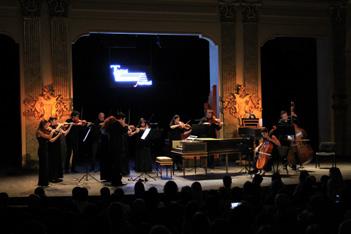
between these performances and visited him for an interview just before rehearsal.
I began the interview somewhat conventionally – first thanking him for making time to meet and, feeling slightly guilty for intruding on his rest, I politely asked how he was.
“Hello, thank you, I’m well,” he replied with a smile. Perhaps he sensed my guilt at pulling him away from his downtime. Nevertheless, I was determined to continue the conversation with energy – I very much wanted the interview to go well.
T.M. – Baroque music is familiar and close to both me and the orchestra, but I believe many are curious about what it means to be a performer of Baroque music in modern times.
J.R. – First of all, I have to say that I don’t consider myself solely a Baroque musician. Baroque is just one period in the history of music. I’m lucky enough to play music spanning from the 16th century to contemporary works, so I don’t feel defined by Baroque alone. What we call “early music” is a new way of thinking and interpreting. The music itself isn’t new, but for just a few decades now, musicians and musicologists have been researching performance practices from the Baroque era to get closer to an authentic rendering of that period’s sound. This involves reading the musical text with utmost precision and unlocking its essential meaning.
To answer your question more specifically: I am a harpsichordist, and the harpsichord was an important instrument from the 16th to the 18th century. It is certainly associated with Baroque music, and yes, it lies at the heart of my musical life.
T.M. – Do you strictly follow the rules of Baroque performance – if such rules even exist – or is it more a matter of personal taste? How do you approach early music?
J.R. – Freedom in music is a very delicate concept, because everyone understands it differently – just like the so-called rules. I don’t believe there are rules as such; rather, there are riddles to solve and clues to interpret.
Sometimes we have texts and treatises from the period that offer information about how the music was played, the historical context, the instruments, the style of performance, and how the music connected with society. This makes for a fascinating field of discovery when working on a particular piece from a specific era. You can use all of that information to find your own interpretation and simply be present – for the sake of the music. To perform well means to make the music as clear and comprehensible as possible. That journey – deciphering the clues to make the music intelligible – is a truly engaging one.
There are no rules and no secrets to how we make music. Still, it’s not an easy road – it’s a deeply interesting process.
T.M. – Do you think there is a distinct musical language between German, Italian, and French Baroque music?
J.R. – Absolutely. For example, if we look at the early 18th century, we encounter polarities that are very distinct. There were clearly different musical styles in different places. As a performer, you need to understand all of them: how the music was composed, the forms

dekadaa rac musikosebi da musikologebi ikvleven barokos saSemsruleblo xelovnebis im xerxebs, rac ufro metad daaaxloebs im epoqis musikis avTentikur SesrulebasTan. es gulisxmobs musikaluri teqstebis maqsimaluri sizustiT wakiTxvasa da misi mTavari amocanis amoxsnas. Tqvens kiTxvas rom ufro zustad vupasuxo, me klavesinisti var, klavesini ki me-16 saukunidan me18 saukunis CaTvliT Zalian mniSvnelovani instrumenti iyo, ra Tqma unda is ekuTvnis barokos musikas da diax, Cemi musikaluri cxovrebis centralur nawils swored klavesini warmoadgens.
T. m. _ mkacrad icavT barokos musikis Sesrulebis wesebs, Tu ki arsebobs msgavsi wesebi ra Tqma unda, Tu es mxolod gemovnebis sakiTxia? rogor asrulebT Zvel musikas?
J. r. _ musikaSi Tavisufleba Zalian delikaturi cnebaa, radgan Tavisufleba yvelas Taviseburad gvesmis — iseve rogorc musikaSi arsebuli wesebic. ar vfiqrob, rom wesebi arsebobs; ufro metad amosaxsneli amocanebi da miniSnebebia vidre wesebi. zogjer gvaqvs teqstebi da traqtatebi im periodis musikis Sesaxeb, romelzec vmuSaobT, da gvaqvs met-naklebi informacia istoriul konteqstze, instrumentebze, Sesrulebis stilze, imaze, Tu rogor
that were in use, and the instruments of the time – you really need to know everything.
Yes, as you put it, it’s like learning different languages – each with its own grammar and syntax. Playing in these different musical languages is like switching between spoken languages. When you switch from English to another language, you don’t translate word for word – you adapt to the structure of the new language. It’s the same with music.
T.M. – How do you choose your concert program? Do you connect the composers thematically or conceptually? What guides your selections?
J.R. – Just recently at the festival, I performed a solo harpsichord program featuring music by Rameau, Couperin, and Royer – all composers from the first half of the 18th century. Each of them was a harpsichordist, and they shared a similar understanding of the instrument’s expressive potential. While their lives and approaches may have differed, their compositional styles bear notable similarities, which makes their music resonate well together. Also worth mentioning is that Rameau and Royer composed opera as well, and both often reused themes from their harpsichord works in their operas and vice versa. This is important to me – knowing how a piece was created helps me interpret it in a way that stirs emotions in the audience. That’s how I build concert programs. For solo harpsichord concerts, the instrument’s refined and delicate timbre

sruldeboda es musika da rogor iyo is dakavSirebuli sociumTan. vfiqrob, es Zalian saintereso sferoa aRmosaCenad, roca muSaob konkretul musikalur teqstze konkretuli epoqidan. SegiZlia gamoiyeno es yvela informacia, raTa miagno Sens xedvas da ubralod iq iyo musikisTvis – imisTvis, rom musika Seasrulo kargad, anu musika iyos rac SeiZleba gasagebi. vfiqrob, mizani miagno miniSnebebs, rom musika gasagebi iyos, es Zalian saintereso mogzaurobaa.
ar arsebobs wesebi da arc saidumloeba Tu rogor vqmniT musikas, miuxedavad amisa ar aris advili gza, magram Zalian saintereso procesia.
T. m. _ rogor fiqrobT, germanul, italiur da frangul barokos musikas Soris aris Tu ara gansxvavebuli musikaluri ena?
J. r. _ diax, ra Tqma unda, magaliTad Tu aviRebT me-18 saukunis dasawyiss, SevxvdebiT gansxvavebul polusebs, rac erTmaneTisgan mkafiod gansxvavdeba. vgulisxmob, aSkarad gansxvavebul sxvadasxva musikalur stils. diax, sxvadasxva adgilas sxvadasxva musika iyo, Sesabamisad unda gesmodes yvela stili, unda icode rogor iwereboda da iqmneboda musika, rogori musikaluri formebi arsebobda, unda icode detalebi instrumentebis Sesaxeb, saerTod yvelaferi unda icode. diax, rogorc TqviT, sxvadasxva enaa, sxvadasxva
creates an intimate atmosphere. The listener should be immersed in this mysterious sound world, and that effect is supported by the program’s architecture. The dramaturgical sequencing of the pieces really helps shape the audience’s perception and emotional experience. I consider all of these details carefully, especially for solo programs.
T.M. – Speaking of instruments, do you have a favorite harpsichord? There are many types, each differing in construction and sound. Is there one you prefer most?
J.R. – If we look at harpsichord history, we find many very different instruments. They were built in different periods, in different regions, and that’s why they vary so much. They’re all called harpsichords because they operate with the same mechanism, but their forms and finer details make each one unique. Each instrument is closely linked to the music of the country where it was built, which is why I don’t have a single favorite. I like the variety and the diversity of the harpsichord repertoire. For example, when I play early 17th-century Italian music on an Italian instrument of the time, or late 18th-century French music on a French harpsichord, I feel that I’m entering entirely different worlds. That’s why I can’t associate myself with just one type of harpsichord. I truly love this instrument, and I think most harpsichordists feel the same – we love its versatility and uniqueness.
T.M. – Was there a particular harpsichordist who inspired you to take up the instrument?
J.R. – Blandine Verlet, the French harpsichordist and one of the pioneers of the historically informed performance movement I mentioned earlier. She was a major figure for me. She was my teacher for a long time. I started learning the harpsichord with her and studied with her for more than twelve years. She played a vital role in my life – both as a musician and as a person.
T.M. – Speaking of learning, you’ve studied organ, piano, jazz, and improvisation in addition to the harpsichord. How do you balance all of these instruments and musical styles?
J.R. – Yes, my musical interests are broad. With harpsichord repertoire, I’m looking to expand further and play even more works. I’m also interested in contemporary music, which I often perform on piano in various projects. So this diversity is just part of what I do.
T.M. – What are your thoughts on conducting?
J.R. – Conducting is a little different. Learning about how it works was very interesting – understanding the orchestra and all the little details that surround it. But I much prefer chamber music and playing with others. Being in the conductor’s role is what I like least. True, harpsichordists were among the first conductors, but the role has changed significantly since orchestras grew in size.
T.M. – What about jazz? Do you see any similarities or connections with Baroque music? I often say jazz was born in the Baroque era, alongside improvisation. What’s your view?
J.R. – As I said, I’m always involved in creative processes and engaged with music being written today. Naturally, new music incorporates jazz influences. But when we speak of jazz as a specific genre, I’m not really a part of that world.
gramatika, sintaqsi da a.S. es procesi sxvadasxva enaze laparaks hgavs, magaliTad roca laparakob inglisurad da mere sxva enaze iwyeb laparaks, zedmiwevniT ki ar Targmni, aramed ergebi im enas, romelzec saubrob. asevea musikis dakvrac sxvdasxva musikalur enaze, es iqneba germanuli, italiuri Tu franguli.
T. m. _ rogor arCevT programas koncertisTvis? erTmaneTTan akavSirebT kompozitorebs, raime konkretuli koncefcia gaqvT xolme, Tu ra principiT agebT programas?
J. r. _ sul axlaxan, festivalze, klavesinis solo koncertis programaSi mqonda ramos, kuperenisa da ruaias musika, romlebic me-18 saukunis pirveli naxevris kompozitorebi arian. samive maTgani klavesinisti iyo da erTnairad aRiqvamdnen klavesinis eqspresiulobas. SesaZlebelia, maTi cxovreba da musikisadmi midgomac ki gansxvavebuli hqonodaT, Tumca amis miuxedavad igrZnoba msgavseba musikis weris manerasa da stilSi, swored amitom SegviZlia maTi musika erTmaneTs davukavSiroT. aseve unda aRvniSno, rom ramo da ruaia werdnen saopero musikasac da sainteresoa is, rom orive maTgani xSirad sakuTari operebisTvis iyenebdnen Temebs maTive saklavesino repertuaridan da piriqiT, operebidan motivebs _ saklavesino musikisTvis. es informacia CemTvis Zalian mniSvnelovania, radgan roca vici Tu rogor Seiqmna musika, ukeT vici rogor Sevasrulo ise, rom emociebi aRvZra msmenelebSi da Sesabamisad, sakoncerto programsac amis mixedviT vageb. roca klavesinis solo koncerts exeba, unda gaviTvaliswinoT, rom am koncertis intimur atmosferos instrumentis Zalian daxvewili da delikaturi JReradoba qmnis da msmeneli am idumal bgerebSi unda CavZiroT, ris miRwevaSic programis arqiteqtura Seuwyobs xels. vgulisxmob imas, rom sworad SerCeuli nawarmoebebis dramaturgiuli Tanmimdevroba msmenels musikis aRqmasa da mis SegrZnebaSi Zalian daexmareba. am detalebze sul vfiqrob programis SerCevisas, gansakuTrebiT roca solo koncerts exeba.
T. m. _ instrumenti axseneT da gaqvT Tqveni sayvareli instrumenti? bevrnairi klavesinia da erTmaneTisgan gansxvavebuli rogorc agebulebiT, agreTve JReradobiT. Tu gamoarCevdiT romelimes da romel instrumentze giyvarT dakvra yvelaze metad?
J. r. _ diax, Tu ki klavesinis istorias gadavxedavT, bevri erTmaneTisgan gansxvavebuli instrumenti Segvxvdeba. klavesini iqmneboda sxvadasxva periodSi, sxvadasxva teritoriaze da amitomac gansxvavdeba instrumentebi erTmaneTisgan. yvela maTgans hqvia klavesini, ramdenadac meqanizmi erTi aqvs, Tumca formebi da instrumentis patara detalebi imdenad sxvadasxvaa rom sakravebic gansxvavdeba erTmaneTisgan. yvela maTgani
T.M. – Yes, I understand. But I mean the principle of improvisation, which is key to both Baroque music and jazz performance.
J.R. – To better answer your question: as a harpsichordist, improvisation is an essential part of what I do. When you play basso continuo, it inherently involves improvisation. In general, I love improvising, and I often use this technique in my contemporary music projects. Improvisation is a musical approach that breaks through the boundaries of written music.
T.M. – Let’s come back to Georgia and the Baroque Festival, which you’ve visited before. What do you think of Georgian Sinfonietta’s approach to Baroque music? How would you evaluate your collaboration with them? Do you feel comfortable here?
J.R. – I feel very comfortable and welcome here. Every musician in the orchestra is warm and open, and I think they do everything possible to create this friendly environment. It’s always a great pleasure to play with them.
I first came in 2016, then again in 2017. We’d been planning for some time, and I’m very happy to be here this year. There is so much musical richness in this orchestra – it’s a joy to work with them. They are like a big family, respectful of one another, and the performance quality is very high. We openly share ideas, and making music together is a real delight. With each visit, our musical and personal connection grows deeper, and that makes me very happy. I truly feel lucky to be here, and I hope to return many more times in the future.

dakavSirebulia im qveynis konkretul musikasTan sadac is Seiqmna, swored amitom CemTvis favoriti klavesini ar arsebobs. me momwons am instrumentisTvis dawerili Zalian mravalferovani da erTmaneTisgan gansxvavebuli repertuaris dakvra. magaliTad, roca vukrav me-17 saukunis pirveli naxevris italiur musikas im periodis italiur klavesinze, an gviandeli me-18 saukunis frangul musikas amave epoqis frangul instrumentze, vgrZnob, rom ori erTmaneTisgan gansxvavebuli sxvadasxva samyaroa, amitomac Cems Tavs mxolod erT instruments ver davukavSireb. me marTla miyvars klavesini da vfiqrob klavesinistebis umetesoba Cemnairad fiqroben, vgulisxmob imas, rom Cven, klavesinistebs gviyvars am instrumentis mravalferovneba da misi arastandartuloba.
T. m. _ romelma klavesinistma STagagonaT, rom am instrumentze dakvra dagewyoT?
J. r. _ blandine verle, romelic frangi klavesinisti iyo da amavdroulad erT-erTi pioneri im moZraobisa, romelic Sesrulebis axleburad gaazrebas exeboda, ris Sesaxebac weRan visaubre. swored is iyo CemTvis mniSvnelovani adamiani. is Cemi pedagogi iyo didi xnis ganmavlobaSi. klavesinze dakvra masTan daviwye da misi moswavle 12 welze metxans viyavi. vfiqrob, man Zalian mniSvnelovani adgili daikava Cems cxovrebaSi rogorc musikosma da rogorc pirovnebam.
T. m. _ Tqven axla swavla axseneT da unda aRvniSnoT, rom klavesinze dakvris garda aseve swavlobdiT organs, fortepianos, jazs da improvizacias. rogor uTavsebT erTmaneTs amden instruments da sxvadasxva musikalur stils?
J. r. _ diax, mravalferovania Cemi rogorc musikaluri sferoebi. rac Seexeba klavesinis repertuars, minda kidev ufro gavafarTovo da meti nawarmoebi davukra. aseve mainteresebs uaxlesi, Tanamedrove musika, romelzec axla vmuSaob da mas ZiriTadad fortepianoze vukrav sxvadasxva proeqtSi. ase rom, es mravalferovnebac Cemi saqmianobis nawilia.
T. m. _ ras fiqrobT diriJorobaze?
J. r. _ diriJoroba cota gansxvavebulia. vgulisxmob imas, rom Zalian saintereso iyo swavla, Tu rogoria misi samuSao principi, aseve saintereso iyo orkestris da mis irgvliv yvela wvrilmani detalis Seswavla. me ufro momwons kameruli musika, momwons sxva adamianebTan erTad dakvra, magram diriJoris adgilas yofna yvelaze naklebad momwons. marTalia, klavesinistebi iyvnen pirveli diriJorebi, magram es mainc sul sxva procesi iyo da sagrZnoblad Seicvala diriJoris mniSvneloba mas Semdeg rac orkestri ufro da ufro didi gaxda.
T. m. _ ras ityodiT jazze? rogor fiqrobT, aris msgavseba
an raime kavSiri barokos musikasTan? vambob xolme, rom jazi, barokos epoqaSi improvizaciasTan erTad daibada-Tqo. Tqven ras fiqrobT?
J. r. _ rogorc ukve giTxariT, var mudmivad SemoqmedebiT procesSi da im musikasac vexebi, romelic axla iqmneba. axal musikaSi ki ra Tqma unda aris jazis gavlenebi. Tumca, roca sufTa jazze vsaubrobT, romelic calke konkretuli Janria, me amis nawili namdvilad ar var.
T. m. _ diax, es gasagebia, magram me vgulisxmob improvizacias, romelic iseve rogorc barokos musikaSi, agreTve jazSi, Sesrulebis erT-erTi mTavari principia.
J. r. _ Tqvens kiTxvas rom ukeT vupasuxo getyviT, rom roca klavesinisti xar, niSnavs, rom improvizacia Seni Semoqmedebis aucilebeli Semadgeneli nawilia. rodesac ukrav baso kontinuos (B.C.) is TavisTavad moicavs improvizacias. SemiZlia vTqva, rom improvizacia, zogadad am instrumentis erT-erTi aucilebeli nawilia. saerTod, miyvars improvizireba da Cems proeqtebSi axali musikis Sesrulebisas xSirad viyeneb am xerxs. vgulisxmob imas, rom improvizacia aris musikaluri xerxi rac dawerili musikis CarCoebs arRvevs.
T. m. _ gasagebia, modiT saqarTvelos da barokos festivals davubrundeT, romelsac pirvelad ar stumrobT. ramdenad mogwonT „saqarTvelos sinfonietas“ xedva barokos musikaSi, rogor SeafasebdiT maTTan TanamSromlobas da musicirebas? aq ramdenad komfortulad grZnobT Tavs?
J. r. _ Zalian komfortulad da kargad var aq. mTeli orkestri, TiToeuli musikosi Zalian keTilganwyobilia da vfiqrob, orkestri absoluturad yvelafers akeTebs imisTvis, rom Seqmnas es komfortuli garemo. CemTvis yovelTvis didi siamovnebaa maTTan erTad dakvra. 2016 wels Camovedi pirvelad, 2017 wlis festivalSic vmonawileobdi, mere sul vgegmavdiT da moxaruli var, rom wels ukve aq var. imdenad bevri musikaa am orkestrSi, rom yovelTvis didi siamovnebaa maTTan erTad dakvra. es aris erTi didi ojaxi, erTmaneTis mimarT pativiscemiT ganwyobilni da rac mTavaria, Sesrulebis xarisxia Zalian maRali. aq Tamamad vuziarebT erTmaneTs ideebs da didi sixarulia erTad musikis dakvra. yovel Camosvlaze Cveni megobruli, Tu musikaluri urTierTkavSiri ufro mWidro xdeba da es Zalian maxarebs. marTlac bednieri var aq da vimedovneb, rom kidev araerTxel gestumrebiT momavalSi.
T. m. _ CvenTvis Zalian mniSvnelovania, rom swored saiubileo festivalze CamoxvediT da imedia momaval welsac gvestumrebiT.
J. r. _ mec vimedovneb.
T. m. _ ra aris Tqveni samomavlo gegmebi?

T.M. – It means a lot to us that you came for the festival’s anniversary season, and we sincerely hope you’ll return next year too.
J.R. – I hope so too.
T.M. – What are your upcoming plans?
J.R. – I have several projects lined up. I try to balance very different kinds of work. I’ll be releasing several audio recordings soon – one of them is a complete album of François Couperin’s works. It was a demanding and extensive project. At the same time, I’ve scheduled various concerts and have some new ideas I hope to realize in the future. I was very curious about those future ideas, but I could already sense that we were running late for rehearsal, so I had to bring our conversation to a close. I hope that next time we’ll talk about his new recordings with Georgian Sinfonietta and other projects – but that’s a plan for the more distant future. In our next issue, I’ll introduce you to another star.
photo by Clement Vayssieres
J. r. _ dagegmili maqvs araerTi proeqti, vcdilob davabalanso xolme erTmaneTisgan gansxvavebuli proeqtebi. ramdenime audio-Canawers gamovcem male, magaliTad fransua kuperenis yvela nawarmoebis albomi gamova wels, es Zalian Sromatevadi da didi proeqti iyo. amis paralelurad dagegmili maqvs sxvadasxva koncerti da aseve maqvs kidev raRac ideebi, romelic minda momavalSi ganvaxorcielo.
Zalian mainteresebda ra ideebis ganxorcieleba hqonda Cafiqrebuli, magram ukve vgrZnobdi, rom repeticiaze vagvianebdiT da unda damemTavrebina saubari. imedi maqvs momavalSi ukve „saqarTvelos sinfonietasTan“ erTad Caweril axal audio-albomze da sxva proeqtebzec visaubrebT, magram es cota Soreuli momavlis gegmaa, Semdeg nomerSi ki sxva varskvlavs gagacnobT.
sofiko qeburia
interviu xaTuna maisuraZesTan

Teatraluri kostiumi preistoriuli ritualebidan iRebs saTaves. Semdeg iyo quCebsa da moednebze gamarTuli sanaxaobebi, dionisiebi, misteriebi, klounadebi, karnavalebi, maskaradebi, xalxuri cekva... yvela maTgans sWirdeba kostiumi, romelic kamertoniviT, aqtoris gamoCenisTanave Segiqmnis ganwyobas. xmovan fonTan da ganaTebasTan erTad kostiumi Teatraluri warmodgenis is
Theatrical costume design originates in prehistoric ritual. Later came street and square spectacles, Dionysian festivals, mysteries, clowning, carnivals, masquerades, folk dance… Each of these demanded costumes capable of setting the mood the moment the actor appears – like a tuning fork. Along with sound and lighting, the costume is one of the components that cast the enchanting spell of a performance. And if the costume is successful, its impression lingers
komponentia, romelic momajadovebel xiblSi gagaxvevs da Tu ivarga, fardis daSvebis Semdegac grCeba mexsierebaSi. SemTxveviTi xom araa, rom fardis saboloo daSvebamde, darbazidan wamosul ovaciebs scenaze mdgomi kostiumebis mxatvaric iziarebs!
maS ase, „scenazea~ kostiumebis mxatvari xaTuna maisuraZe da „fardis daxurvamde~, sofitis Suqi mas unda mivanaToT.
_ ra profesiaze ocnebobdiT bavSvobaSi? aris Tu ara is, rasac axla akeTebT, didi xnis natvris asruleba Tu Tqveni cxovrebis gezi Seicvala da sul sxvagan aRmoCndiT? ra moxda Tqvens cxovrebaSi iseTi, ramac TeatrSi migiyvanaT? ara, namdvilad ar mifiqria mxatvrobaze. vxatavdi, rogorc yvela bavSvi. Cemi ocneba baleti iyo. profesiaze fiqri ki gaazrebuli asakidan daviwye. davamTavre iakob nikolaZis sax. samxatvro teqnikumi. Semdgom vswavlobdi Tbilisis saxelmwifo samxatvro akademiis saxviTi xelovnebis fakultetis Teatralur-dekoratiuli xelovnebis saxelosnoSi. am fakultetis arCeva da Semdgom profesiad qceva Teatrisadmi usazRvro siyvarulma ganapiroba. vfiqrob, axla swored iq var, razec vocnebobdi _ fardis miRma idumal samyaroze.
_ Teatris mxatvroba saqarTveloSi bevr araCveulebriv xelovans moTvlis _ petre ocxeli, irakli gamrekeli, lado gudiaSvili, daviT kakabaZe, elene axvlediani, soliko virsalaZe... vin aris maT Soris Tqveni sayvareli mxatvari da ra niSniT gamoarCevdiT?
Tqvens mier CamoTvlilma mxatvrebma, waruSleli kvali
long after the curtain falls. It’s no coincidence that before the final bow, the applause from the audience also extends to the costume designer standing behind the scenes.
So now the costume designer Khatuna Maisuradze is on stage, and before the curtain falls, we turn the spotlight on her.
– As a child, what profession did you dream of pursuing? Is your current work the realization of a long-held desire, or did life take you elsewhere before leading you to the theater? What happened in your life that brought you to this world?
No, I never imagined myself as an artist. I drew like all children do, but my dream was ballet. I began thinking seriously about a profession at a more conscious age. I graduated from the Iakob Nikoladze Art School, and later studied in the theatrical and decorative arts studio of the Faculty of Fine Arts at the Tbilisi State Academy of Arts. Choosing this faculty – and later turning it into a profession – was entirely driven by my boundless love for the theater. I believe that I am exactly where I dreamed of being: in the mysterious world behind the curtain.
– Georgian stage design boasts many remarkable artists – Petre Otskheli, Irakli Gamrekeli, Lado Gudiashvili, David Kakabadze, Elene Akhvlediani, Simon Virsaladze… Who among them is your favorite, and why?
All of the artists you’ve mentioned left an indelible mark on Georgian theater history, but the one closest to my heart is Petre Otskheli – for his cosmic vision and modern sensibility.
– As a costume designer, whose “school” shaped you?
Fortunately, my teachers were distinguished figures in Georgian theater art: Parnaoz Lapiashvili, Shmagi Savaneli, Georgi Aleksi-

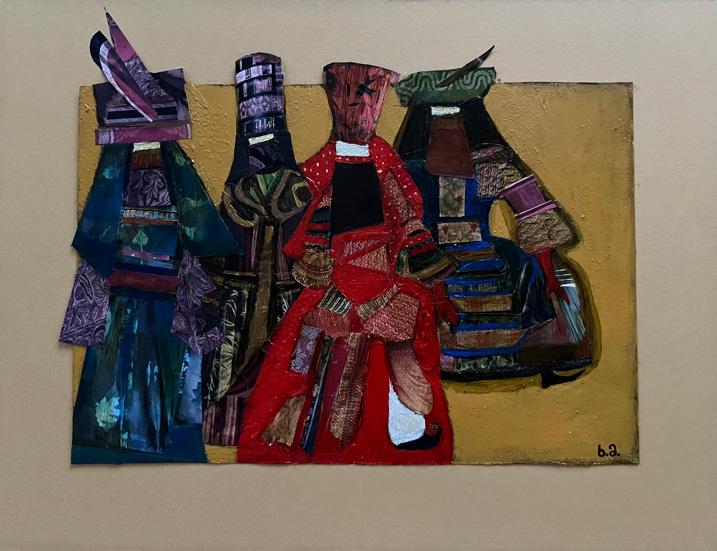
datoves qarTuli Teatris istoriaSi, magram CemTan yvelaze axlos, petre ocxelia, Tavisi kosmiuri xedviT da TanamedroveobiT.
_ rogorc Teatris kostiumebis mxatvarma, visi „skola~ gaiareT?
sabednierod, Cemi pedagogebi Teatris gamorCeuli mxatvrebi iyvnen. maTi Rvawli fasdaudebelia Teatralur samyaroSi: farnaoz lapiaSvili, Smagi savaneli, gogi aleqsi-mesxiSvili, giga lapiaSvili. maT sxva rakursiT damanaxes da ufro metad Semayvares es profesia. studentobidanve vqmnidi kostiumebsa da dekoraciebs Tbilisis saxelmwifo Teatraluri institutis sareJisoro fakultetis studenturi sadiplomo speqtaklebisTvis. es iyo „lamara~, „heda gableri~, „tentaJilis sikvdili“ (reJ. l. umikaSvili). Cemi sadiplomo namuSevari ki iyo kostiumebi „1001 RamisTvis~. _ l. umikaSvilTan Tqveni tandemi SemdgomSic gagrZelda, oRond ara scenaze, aramed kinoSi. kidev romel
Meskhishvili, and Giga Lapiashvili. Their contribution to the theatrical world is immeasurable. They showed me the profession from new angles and made me fall in love with it even more. Already as a student, I was creating costumes and sets for graduation performances of directing students at the Shota Rustaveli Theater and Film University – productions like Lamara, Hedda Gabler, and The Death of Tintagiles (dir. L. Umikashvili). My graduation project was costume design for One The Arabian Nights.
– Your collaboration with L. Umikashvili later continued in film rather than on stage. What other film directors have you worked with? And which captivates you more – film or theater?
It’s hard to choose between film and theater. Working in film turned out to be just as engaging for me as theater, though theater resonates more deeply with my inner world. I collaborated with L. Umikashvili twice more – on Virus (2006) and The House That Was Taken (2024). I also had the good fortune to work with director George Ovashvili on Frost and the Little Pupil (2022) and This Is Your Home (2024).
– After graduating, you immediately started teaching at the

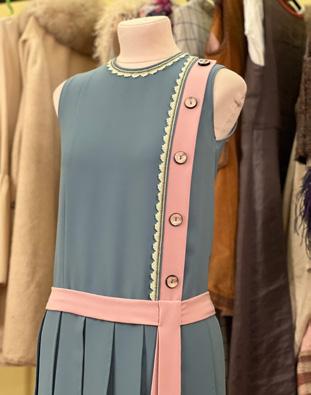

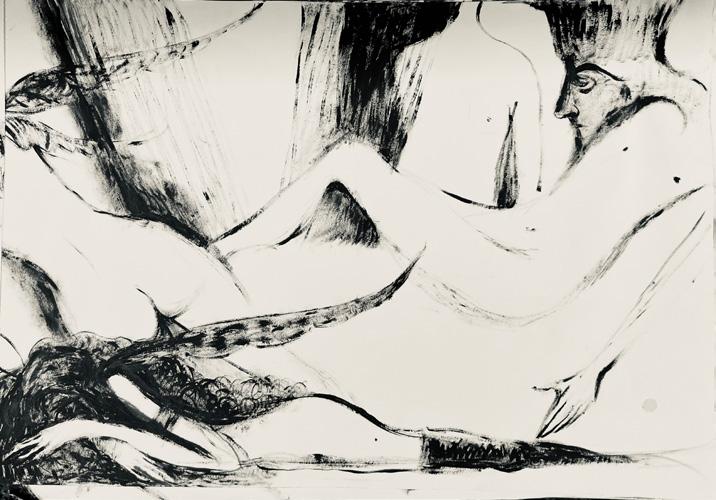
kinoreJisorebTan mogiwiaT TanamSromloba? da mainc ra ufro gxiblavT _ kino Tu Teatri? miWirs kinosa da Teatrs Soris arCevanis gakeTeba. kinoSi muSaoba CemTvis iseve saintereso aRmoCnda, rogorc TeatrSi. Tumca, Teatri ufro axlosaa Cems sulier samyarosTan. l. umikaSvilTan kidev orjer momixda TanamSromloba _ filmebze „virusi~ (2006 w.) da „mitacebuli saxli~ (2024 w.). aseve mqonda bedniereba memuSava kinoreJisor giorgi ovaSvilTan filmebze „yinva da patara mowafe~ (2022 w.) da „es Seni saxlia~ (2024 w.). _ akademiis damTavrebisTanave iqve daiwyeT muSaoba da daaxloebiT aTi weli mogiwiaT lamis TanatolebTan urTierToba, ukve pedagogis rangSi. ra iyo TqvenTvis yvelaze momxibvleli an yvelaze rTuli am statusSi? samxatvro akademiaSi pedagogiuri gamocdileba CemTvis sapasuxismgeblo aRmoCnda. studentebTan muSaobis saintereso process, maT gansxvavebul xedvasa da azrovnebas (rac Teatris mxatvrisTvis umniSvnelovanesia)
Academy, working for nearly ten years with students almost your own age. What was most rewarding or most difficult about that role?
Teaching at the Academy was a serious responsibility for me. The process of working with students and their unique perspectives and ways of thinking (which are crucial for a theater designer) often left a deep impression on me.
– Which theaters do you collaborate with? What productions have you worked on?
Since 2022, I’ve been working with the Kote Marjanishvili State Academic Drama Theatre. It demands great professionalism and responsibility. Fortunately, several premieres have taken place featuring my costume designs: “Uchinmachini Hat”, “We Perform A Vaudeville”, the lyrical comedy “Strange Mrs. Savage”, and the Slovenian Christmas tale “The Twelve Months”. All of these were directed by Tsitsino Kobiashvili. I’m currently working on the choreographic production Carmen, based on Prosper Mérimée’s novella (dir. Gia Margania).
xSirad mouxdenia Cemze STabeWdileba. _ romel TeatrebTan TanamSromlobT? ra speqtaklebze gimuSaviaT?
2022 wlidan vTanamSromlob kote marjaniSvilis saxelobis saxelmwifo akademiur dramatul TeatrTan, rac did profesionalizmsa da pasuxismgeblobas moiTxovs. sabednierod, Sedga ramdenime speqtaklis premiera, romlebzec vimuSave _ trilogia „uCinmaCinis qudi~, „vTamaSobT vodevils~ („butiaoba~ da „artisti“), lirikuli komedia „ucnauri misis seviji“, sloveniuri saSobao zRapari „Tormeti Tve“. yvela am speqtaklis reJisori gaxlavT cicino kobiaSvili. amJamad vmuSaob qoreografiul dadgmaze „karmeni~, prosper merimes novelis mixedviT (reJ. gia marRania).
_ kostiumi adamianis pirovnebis, xasiaTis, temperamentis, samyarosadmi damokidebulebis demonstraciaa. gmiris scenaze gamoCenisTanave kostiumi gatyobinebs vinaa is, gaZlevs mimarTulebas am personaJis „wakiTxvisTvis~. ra
– A costume is a demonstration of a person’s character, temperament, and worldview. The moment a character appears onstage, the costume announces who they are and offers cues for understanding them. Where does the process begin for you?
When working on costume sketches for a character, I take many factors into account – first and foremost, the genre of the work, the director’s and choreographer’s vision, the character’s personality, and then the actor’s physicality. The costume must be chosen in a way that helps the actor discover the character and gives the audience a clear impression of who the character is.
– Theatrical design requires teamwork and balancing the needs of different individuals involved in the process. Moreover, the distance between actor and audience “kills” or “eats” the details and textures of fabric. What remains immune to this distance is the costume’s silhouette and color. Have you faced challenges of this kind? Have there been instances where your idea was “clipped” and didn’t quite come through? What’s the most difficult aspect of costume design?
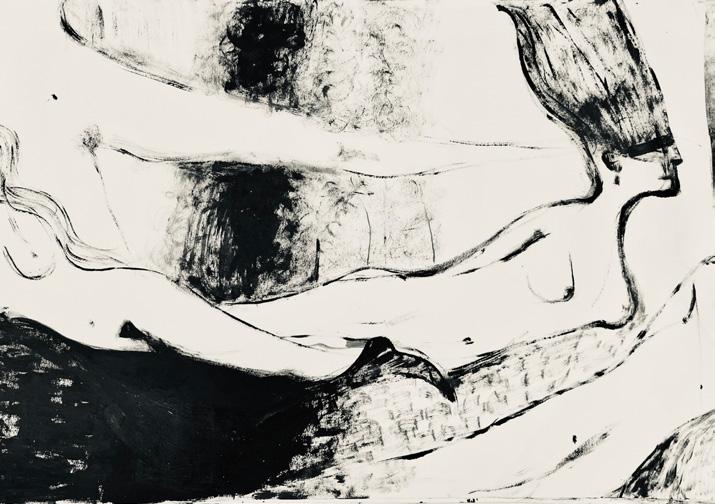

aris TqvenTvis am mxriv aTvlis wertili?
personaJis kostiumebis eskizebze muSaobisas viTvaliswineb bevr faqtors. pirvel rigSi, nawarmoebis Janrs, reJisoris da qoreografis xedvas, personaJis xasiaTs da Semdgom msaxiobis plastikas. kostiumi ise unda SeirCes, rom miexmaros msaxiobs personaJis xasiaTis moZebnaSi da mayurebels Seuqmnas masze garkveuli warmodgena.
_ Teatris mxatvroba gundur muSaobas gulisxmobs, am saqmeSi CarTuli adamianebis interesebis, sxvadasxva faqtoris gaTvaliswinebas. garda amisa, distancia msaxiobsa da mayurebels Soris „klavs~, „Wams“ detalebs, qsovilis faqturas. is, rasac es manZili ver ereva, ver jabnis, aris kostiumis silueti da feri. Tqven Tu wawydomixarT msgavs sirTuleebs? albaT yofila SemTxveva, rom Tqvens ideas „frTebi moekveca~, is ver gamosula, rac gsurdaT. ra aris yvelaze rTuli kostiumebis mxatvris saqmeSi?
ra Tqma unda, kostiumebis Seqmnis specifika gundur muSaobas iTvaliswinebs. unda moxdes msaxiobis, scenografis, qoreografis, grimis ostatis namuSevris SemoqmedebiTi sinTezi da reJisoris gadawyvetiT dasrulebuli saxe mieces. aseve didi mniSvneloba aqvs
Of course, costume design is inherently collaborative. It requires creative synthesis between the actor, set designer, choreographer, makeup artist, and ultimately must be brought to completion through the director’s vision. Lighting also plays a crucial role. There have been instances where lighting altered the intended color of a costume, erasing what I had envisioned. For me, both silhouette and color are equally essential. Every new production brings new joy. To achieve the desired result, costume creation demands total investment; otherwise, I’m left with a feeling of dissatisfaction.
– In your costume work, do you lean more toward stylized abstraction or specificity?
The balance between abstraction and specificity depends entirely on the director’s vision and the direction of the production. I approach each costume individually, and then bring them all into harmony, so the stage has cohesion, unity, and a color scheme that aligns with my concept.
– At what point do you know everything has come together –during rehearsals, at the premiere, or later, when the actor wears the costume as naturally as their own skin?
Despite all the effort, I’m never fully satisfied with my costumes. Rarely, I’ll feel the urge to tweak some details. But when, after some time, I realize that nothing should be added or removed, that’s when I
ganaTebasac. yofila SemTxveva, rodesac ganaTebas Seucvlia kostiumis feri, ris gamoc Cemi Canafiqri konkretul kostiumTan dakavSirebiT gamqrala. arada, Cems SemoqmedebaSi erTnairad mniSvnelovania silueti da feri. yoveli axali speqtakli axali sixarulia. sasurveli Sedegis misaRebad, kostiumebis Seqmna bolomde daxarjvas moiTxovs. winaaRmdeg SemTxvevaSi, daukmayofileblobis gancda meufleba.
_ Tqvens kostiumebSi ras aniWebT upiratesobas _ saxviT pirobiTobas Tu konkretikas?
saxviTi pirobiToba da konkretika mTlianad damokidebulia reJisoris xedvaze, Tu ra mimarTulebiT unda vimuSao. TiToeul kostiums individualurad vudgebi da Semdeg momyavs yvela msaxiobis kostiumi erTmaneTTan harmoniaSi, raTa scena iyos mTliani, Sekruli da ar dairRves ferTa gamis Cemeuli xedva. _ ra momentSi xvdebiT, rom yvelaferi gamogividaT _ repeticiebze, premieraze Tu mogvianebiT, rodesac msaxiobisTvis Tqveni kostiumi ukve sakuTari kaniviT organuli xdeba?
didi Sromis miuxedavad, Cems mier Seqmnili kostiumebiT kmayofili arasdros var. iSviaTad, magram mainc miCndeba
know the concept worked.
– Do you attend international festivals, visit theaters while traveling, or watch recordings? What are the current trends in costume design in contemporary theater?
The era of technology has reached even the mysterious world of theater. Today, digital tools are widely used in global theater. Naturally, they offer countless possibilities and can, when used wisely, create more mystery and visual impact. The world is changing, and so is theater. I always try to attend performances while traveling, and I believe this is essential for my profession.
– Is there a work for which you dream of designing costumes? What would your personal concept be for it?
There are many plays and texts I would enjoy working on, and it’s hard to choose. But lately, I’ve been thinking about The Knight in the Panther’s Skin.
– It’s hard to avoid the influence of its illustrators – Mamuka Tavakarashvili, Mihály Zichy, Sergo Kobuladze, Lado Gudiashvili, Irakli Toidze… Which of them is closest to your vision? Or do you imagine the costumes entirely differently?
The Knight in the Panther’s Skin is a treasure of world literature, and its illustrations across eras are varied and captivating. The ones closest to my vision are the miniatures by Mamuka Tavakarashvili.


survili raRac detalebis Secvlis. Tumca garkveuli drois Semdeg, roca vxedav, rom kostiums verc verafers movakleb an davamateb, swored maSin vxvdebi, rom Canafiqri gamomivida. _ albaT eswrebiT festivalebze ucxour speqtaklebs, mogzaurobisas dadixarT TeatrebSi an uyurebT videoCanawerebs _ rogoria tendencia kostiumebTan mimarTebaSi Tanamedrove Teatris mxatvrobaSi? teqnologiebis epoqam Teatris idumal samyaroSic SeaRwia. msoflioSi dRes aqtiurad iyeneben cifrul teqnologiebs. ra Tqma unda, amas Tavisi pliusebi aqvs da misi SesaZleblobebi amouwuravia. teqnologiebis miznobrivad gamoyenebas SeuZlia meti idumalebisa da efeqtebis Seqmnac. icvleba samyaro da icvleba Teatric. mogzaurobisas vcdilob daveswro speqtaklebs. vfiqrob, Cemi profesiisTvis es Zalian mniSvnelovania. _ aris iseTi nawarmoebi, romlisTvisac natrobT kostiumebis Seqmnas? da rogori iqneboda Tqveni saavtoro koncefcia am SemTxvevaSi? bevri piesa da nawarmoebia, romlebzec siamovnebiT
–
What stirs greater passion, fire, and inspiration in you –working on commission or creating purely from personal desire?
Personal creation is very important. My mood and desire to draw depend entirely on the source of inspiration. I can’t imagine working without the music of Bach, Mahler, Chopin, or the power of operatic voices.
– How would you describe your own clothing style? What are you trying to express through your appearance?
For me, costume is character. While it reflects one’s inner world, it also depends on mood. My clothing style is more aggressive than feminine. I prioritize natural fabrics. My wardrobe is dominated by four colors: black, white, cream, and brown.
– Imagine you could change the way the entire world dresses. What would that world look like?
The world is diverse, and diversity is fascinating. I wouldn’t take away the identity of different nations – I’d incorporate elements of national dress into contemporary costume design.
It is a joy when your profession allows you to unleash your imagination and showcase your artistry on a stage that, amid applause, soon vanishes behind a heavy curtain.
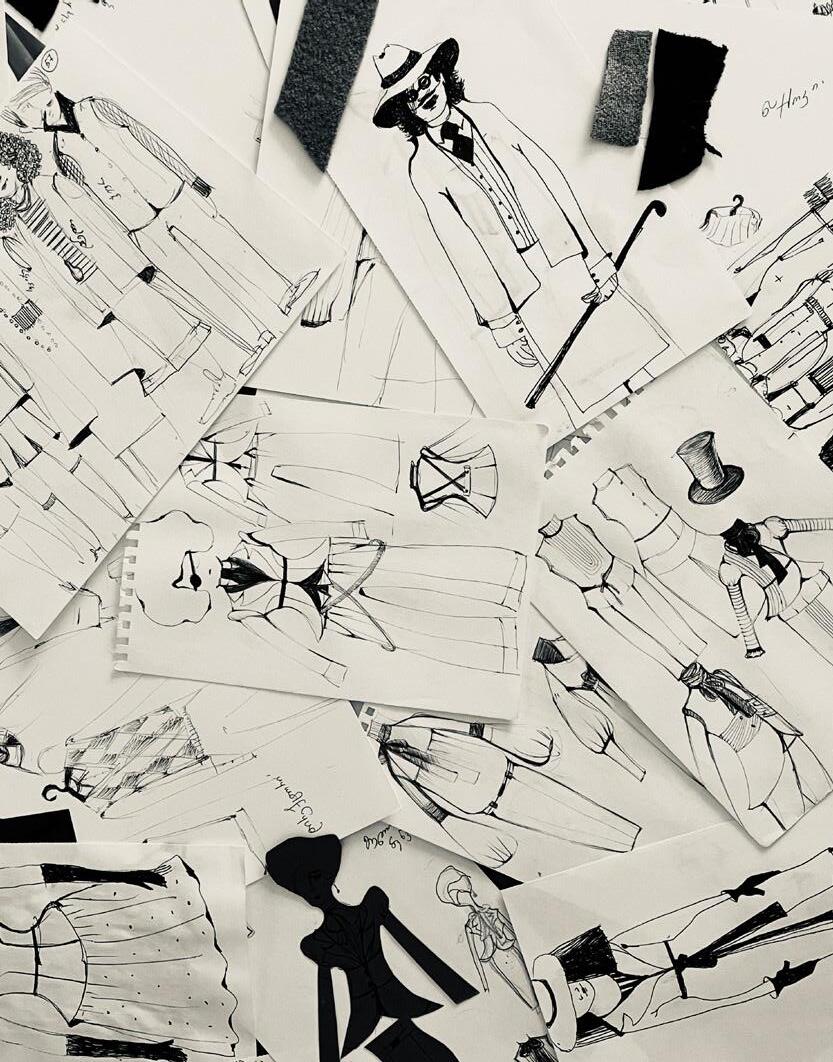
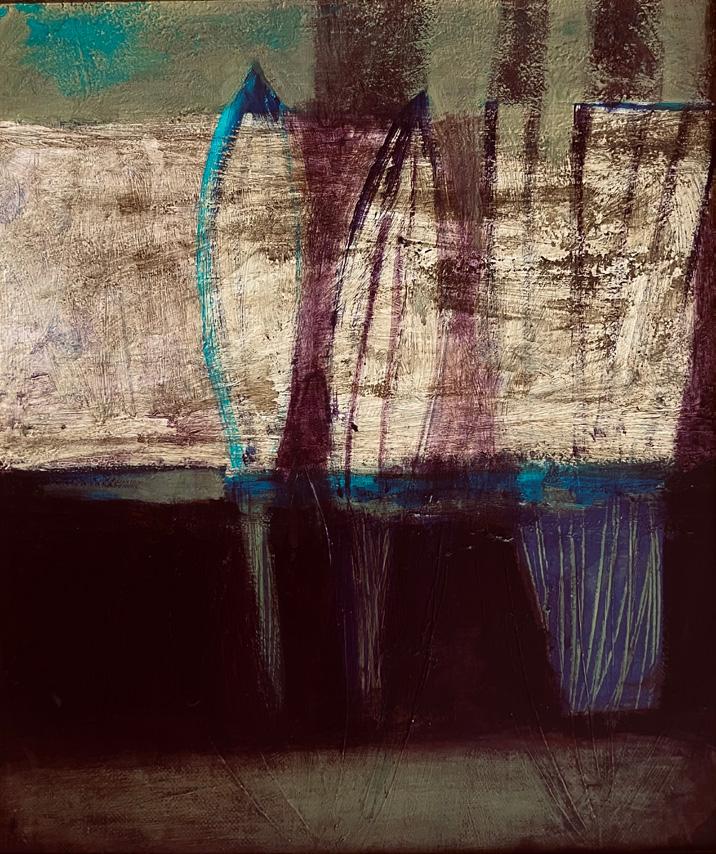
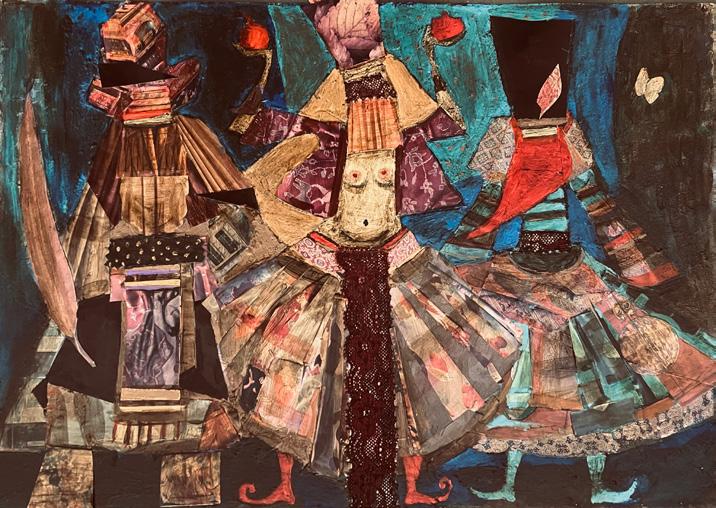
vimuSavebdi da Sevqmnidi kostiumebs. gamoyofa miWirs, Tumca bolo periodi razec mefiqreba, „vefxistyaosania~.
_ Znelia, daaRwio Tavi „vefxistyaosnis~ ilustratorebis gavlenas _ mamuka TavaqaraSvili, mixai ziCi, sergo qobulaZe, lado gudiaSvili, irakli ToiZe... romeli erTi CamovTvalo. maTgan romelia Tqvens xedvasTan axlos? Tu sruliad gansxvavebulad warmogidgeniaT am gmirebis kostiumebi? `vefxistyaosani~ msoflio saganZuria da sxvadasxva epoqaSi am nawarmoebisTvis Seqmnili ilustraciebi gansxvavebuli da TavisTavad sainteresoa. vfiqrob, Cems xedvasTan yvelaze axlos, mamuka TavaqaraSvilis miniaturebia.
_ ras moaqvs TqvenTvis meti vneba, wva, gataceba _ SekveTiT speqtaklze muSaobas Tu sakuTari moTxovnilebiT Semoqmedebas?
mniSvnelovania sakuTari Semoqmedebac. am dros ganwyoba da xatvis survili mTlianad damokidebulia STagonebis wyaroze. CemTvis muSaobis procesi warmoudgenelia baxis, maleris, Sopenis nawarmoebebisa da saopero xmebis gareSe. _ Tavad Tqveni Cacmis stili rogoria, risi Tqma gsurT
garSemomyofTaTvis Tqveni CacmulobiT?
CemTvis kostiumi xasiaTia. garda imisa, rom kostiumi garkveuli saxiT, adamianis Sinagan samyaros gamoxatavs, amavdroulad damokidebulia ganwyobazec. Cemi Cacmulobis stili ufro agresiulia, vidre qaluri. aucileblobas warmoadgens bunebrivi qsovili. Cems garderobSi dominirebs 4 feri: Savi, TeTri, naRebisferi da yavisferi.
_ warmoidgineT, rom mTel samyaros SegiZliaT SeucvaloT Cacmis stili. rogori gaxdeboda es samyaro?
samyaro mravalferovania, mravalferovneba ki, saintereso. aqedan gamomdinare, am samyaroSi mcxovreb sxvadasxva erebs ar davukargavdi TavianT identobas da nacionaluri kostiumebis elementebs gamoviyenebdi Tanamedrove kostiumebis SeqmnaSi.
bednierebaa, roca profesia gaZlevs saSualebas, misce gasaqani fantazias da Seni Semoqmedeba scenaze gaSalo, scenaze, romelic aplodismentebis fonze male miimaleba mZime fardis miRma.
nino jiSkariani NINO JISHKARIANI
mestambeebis anderZi: „viTarca ucxoni ixareben xilvasa zeda TvisTa samkvidrebelTasa da zRuaTa Sina mavalni xilvasa zeda navTsayudelTasa, egreca mestambeni ixareben gansrulebasa zeda wignTasa.~ tfilisi, 1710 w. (vaxtang VI-is stamba) teqstis gammarTveli: germane mRvdelmonazoni mestambe: mixail stefanes Ze ungrovlaxeli erovnuli arqivis samecniero-sacnobaro biblioTeka.
civilizaciaTa ganviTarebaSi dagrovebuli codna da kultura wignma Semoinaxa, ramac ganapiroba adamianis inteleqtualuri da esTetikuri ganviTareba. ase rom wigns, rogorc istoriul-kulturul fenomens, kacobriobis istoriaSi erT-erTi gansakuTrebuli adgili ukavia.
wignis mxatvruli gaformeba _ wignis grafika da masTan dakavSirebuli Sriftis kultura eris, istoriis, misi tradiciebis ganuyofeli nawilia, romelic saukeTesod asaxavs ama Tu im epoqis erovnul kulturas, xolo Tvals Tu gadavavlebT qarTuli sastambo Sriftebis istorias, davinaxavT, rom Sriftebi, anu „moZravi asoebi~, erTbaSad ar Seqmnila. poligrafiuli saxiT maT Camoyalibebaze sakmaod didi gavlena iqonia damwerlobam, romelmac
Typographers’ Testament:
“Just as strangers rejoice at seeing the abodes of their ancestors and those who dwell among the seas, so typographers rejoice at the completion of books.”
Tiflis, 1710 (Printing House of Vakhtang VI) Text editor: Germanos the Monk Printer: Mikhail son of Stefan, Ungrovlakheli National Archives, Scientific and Reference Library.
Civilization’s accumulated knowledge and culture have been preserved through the book, which in turn fostered humanity’s intellectual and aesthetic evolution. Thus, the book, as both historical and cultural phenomenon, occupies a uniquely significant place in human history.
The artistic adornment of the book – its graphic design and the culture of its typefaces – is integral to a people, its history and traditions, effectively reflecting the national culture of any given era. A glance at the history of Georgian printed typefaces reveals that movable type did not arise spontaneously. The evolution of typography was deeply influenced by the script tradition, itself shaped by a long and complex path of graphic development. This script tradition played a vital role in forming and advancing Georgian culture. Alongside language, it defines Georgia’s cultural identity and
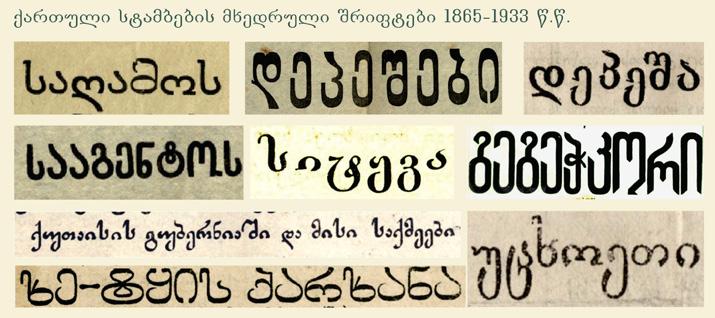
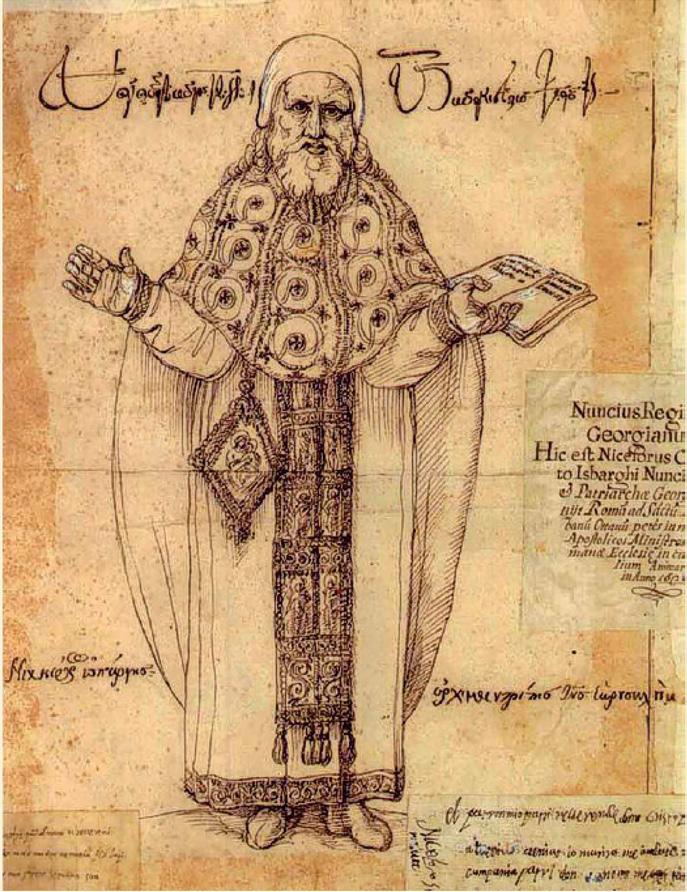
grafikuli ganviTarebis xangrZlivi da rTuli gza ganvlo da romelsac mniSvnelovani roli akisria qarTuli kulturis formirebasa da ganviTarebaSi. is gansazRvravs qarTuli sazogadoebis kulturul identobas da ZiriTad markerad gvevlineba enasTan erTad.
qarTuli damwerlobis samive saxeoba Tanaarsebobda saukuneebis ganmavlobaSi da erTmaneTis paralelurad gamoiyeneboda rogorc sasuliero, ise saero saqmeSi. TiToeul maTgans Tavisi grafikuli damaxasiaTebeli stili aqvs. mxedruli damwerloba nusxuris asomoxazulobaTa cvlilebebis safuZvelzea Seqmnili, xolo nusxurs asomTavrulma misca dasabami. es grafikuli cvlilebebi swrafi, gamartivebuli werisaken miswrafebam gamoiwvia, rasac wignze mzardi moTxovnileba ganapirobebda.
„moZravi asos~ gamoyenebis sawyis periodSi asoTamWrelebi da mestambeni cdilobdnen zustad gadaeRoT xelnaweri asoebis saxe, misTvis saxasiaTo grafikuli elementebiTa da gadabmebiT, amitom saxvadasxva eris saSrifto meurneobaSi didxans SeimCneoda xelnaweri asoebis kvali, romelic daaCnia weris teqnikam. beWdviTi saSualebebis ganviTarebasTan erTad sastambo Srifti TandaTan ganTavisuflda xelnaweri asos gavlenisagan da nelnela gaiyo damwerlobisa da wignis beWdvis gzebi.
pirveli qarTuli sastambo Srifti gakeTda romSi, im werilis alfabetis mixedviT, romelic mefe Teimuraz pirvelma gaugzavna kaTolikuri eklesiis meTaurs. 1629 wels am SriftiT aiwyo da daibeWda stefano paolinis „qarTul-italiuri leqsikoni~ saqarTveloSi gamogzavnili misionerebisTvis. am SriftSi saTanadod ar iyo gaTvaliswinebuli qarTuli alfabetis moxazulobisa
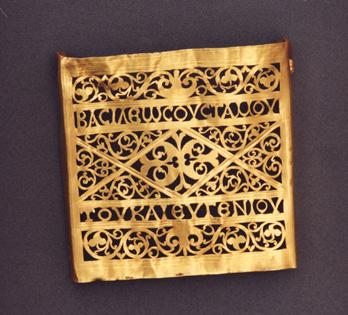
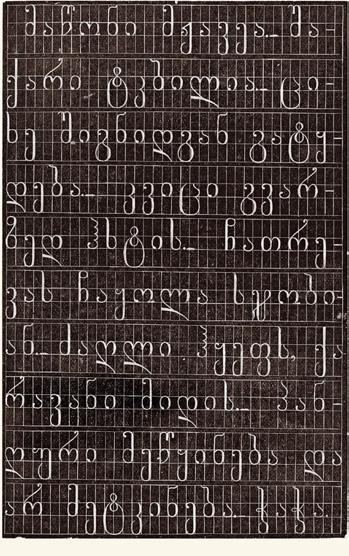
serves as one of its principal markers.
Georgia’s three scripts coexisted and were used in parallel across both sacred and secular arenas for centuries. Each bears its own distinctive graphic style. Asomtavruli gave rise to Nuskhuri, which then led to Mkhedruli – this graphical evolution was driven by a shift toward faster, simplified writing, spurred by increasing demand for books.
In the early period of movable type use, punchcutter-printers strove to replicate the exact forms of manuscript letters, preserving their signature graphic elements and ligatures. Thus, traceable remnants of handwritten scripts persisted within various typographic workshops for a long time, depending on scribal technique.
As printing technologies developed, typographic fonts gradually freed themselves from the influence of handwritten forms, and the paths of script and printed books slowly diverged.
The first Georgian printed typeface was created in Rome based on the script seen in a letter sent by King Teimuraz I to the head of the Catholic Church. In 1629, this typeface was used to compose and print Stefano Paolini’s Georgian–Italian Lexicon for missionaries in
da proporciebis saxasiaTo Taviseburebani. 1643 wels romSi dabeWdil maria majios „qarTuli enis gramatikaSi~ ki am Srifts vxedavT ukve Sesworebuli saxiT. Jan Sardeni wers, rom pirveli qarTuli stamba romSi 1627 wels nikoloz ColoyaSvilis (ierusalimis jvaris monastris arqimandriti, SemdgomSi mefis despani evropaSi) TaosnobiT gaixsna. romSi nikoloz ColoyaSvilma kaTolikoba miiRo da saxelad nikifore uwodes, xolo gvarad irbaxi.
1675 wels saqarTvelodan gadaxvewilma anTimoz (mRvdel-monazoni) iverielma rumineTSi, kerZod, buqarestSi daaarsa monasteri da iq ruminul enaze qadagebda. manve Seiswavla stambis saxelosno saqme da gamarTa stamba, sadac ibeWdeboda wignebi mraval enaze, maT Soris mis mier Seqmnili SriftiT _ qarTul enaze. 1695 wels vaxtang VI-s gamougzavna werili da SesTavaza TbilisSi gaexsnaT qarTuli stamba, razedac Tanxmoba miiRo. Semdeg qarTuli anbanis yalibebi da asoebi Camoasxmevina da 1706 wels mefe vaxtang VI-s gamougzavna mixai iStvanoviCis (ungrovlaxeli) xeliT, romlis daxmarebiTac man TbilisSi gaxsna pirveli qarTuli stamba. mefe leons, vaxtang VI-is mamas,
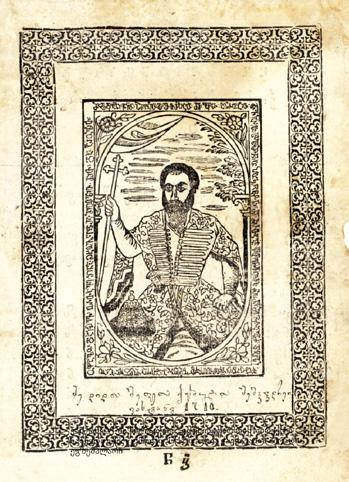

Georgia. However, this font did not adequately reflect the distinct shapes and proportions of the Georgian alphabet. By 1643, in Francesco Maria Maggio’s “Grammar of the Georgian Language” printed in Rome, the typeface appeared in a corrected form.
Jean Chardin reports that the first Georgian printing house in Rome was established in 1627 under the auspices of Nikoloz Cholokashvili (Archimandrite of the Jerusalem Cross Monastery, and later the king’s envoy to Europe). In Rome, he converted to Catholicism, taking the name Nikifore and the surname Irbakhi.
In 1675, Antrim the Iberian, exiled from Georgia, founded a monastery in Bucharest, Romania, where he preached in Romanian. He also mastered the craft of printing and established a press where books were printed in multiple languages, including Georgian, using a typeface he himself designed. In 1695, he wrote to King Vakhtang VI, proposing to establish a Georgian printing press in Tiflis – which received royal approval. Molds and typefaces for the Georgian alphabet were cast, and in 1706, Mihai Ishtvanovici, delivered them to Vakhtang. With his assistance, the first Georgian press was established in Tiflis. King Leon, Vakhtang VI’s father – who held the judicial authority of Iran and was a wealthy landowner – was so pleased by this development that he sent 30,000 maneti from Persia to equip the press. Thus, in 1708, the first Georgian printing house was founded, producing typefaces in Khutsuri (Asomtavruli and Nuskhuri) and Mkhedruli – ushering Georgian books into a new era of design. Vakhtang’s press produced fonts whose graphic quality far surpassed those of the later restored press established under Erekle II (1737–1785). By the early 19th century, Russian presses produced low-quality Georgian fonts imitating manuscript Khutsuri and
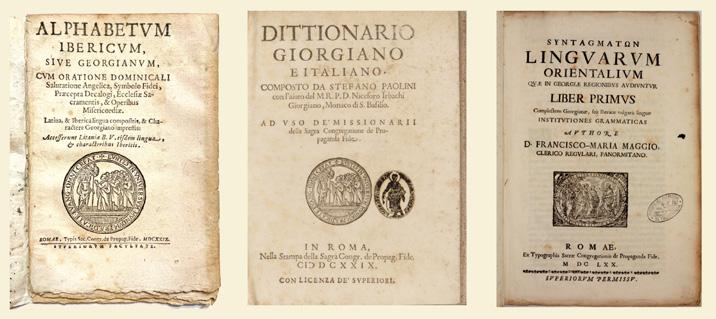
romelic iyo iranis msajulT msajuli da amasTanave, didi qonebis patronic, ise gauxarda es ambavi, rom mefe vaxtangs stambis mosawyobad sparseTidan 30 000 maneTi gamougzavna. ase daarsda 1708 wels saqarTveloSi pirveli qarTuli stamba, sadac gakeTda sastambo Sriftebi, rogorc xucuri (asomTavruli da nusxa), ise mxedruli, Sesabamisad qarTulma wignma sruliad axali saxe miiRo. vaxtangis stambis Sriftebi, grafikuli SesrulebiT romis Sriftebze bevrad maRla idga, rasac ver vityviT erekle meoris mier aRdgenili stambis Sriftebze (1737-1785).
me-19 saukunis dasawyisSi ruseTis stambebSi Cndeba

Mkhedruli. However, the situation improved in the 1840s, following an initiative by the St. Petersburg Academy of Sciences. With support from figures such as Teimuraz Bagrationi, Dimitri Chubinashvili, and Marie Brosset, the Academy’s press created six Mkhedruli and two Khutsuri typefaces, later termed “academic.”
In the latter half of the 19th century, the center of Georgian book production moved from Russia back to Tiflis. New presses opened and the printing of Georgian books flourished. Among the leading figures of this era was the self-taught engraver Grigol Tatishvili, whose masterpiece was the 1888 edition of The Knight in the Panther’s Skin, designed by Giorgi Kartvelishvili. Tatishvili produced outstanding decorative initial letters, headpieces, and page ornaments. This period also featured the distinguished writer and public figure Mikheil Kipiani (1833–1891). Rather than inventing entirely new fonts, Kipiani adapted traditional letterforms to suit mechanical typesetting, creating drafts based on the academic fonts. In 1864, Stefane Melikishvili, publisher of the newspaper Droni (“Time”), sent these drafts to Vienna, where a new bright and semibold Nuskhuri typeface suitable for manual composition was produced. In 1866, this design saw its first use in Mkhedruli. Since Kipiani’s font was cast in Vienna, it was called the “Viennese.” In the classification of 19th- century Georgian typefounding, it was known as the “ordinary font.”
On a related note, Zakaria Chichinadze records in his book Nikoloz Gogoberidze and the Georgian Press 1627–1913 (Tbilisi, Sorapani Press, Madatov Island) that in 1863, Ilia Chavchavadze began publishing the journal Sakartvelos Moambe (Georgia’s Messenger) in Tbilisi. Its launch transparently revealed the shortcomings of Georgian printing: poor lettering, ill-formed characters, and a host of other issues surrounding book publishing at the time. That same year, discussions began on opening a Georgian press. Soon a group of distinguished Georgians – including Nikoloz Gogoberidze, Dimitri Bakradze, Vakhtang Tulashvili, and Stefane Melikishvili – assembled
xelnaweri xucurisa da mxedrulis mibaZviT Seqmnili dabali xarisxis Sriftebi. mdgomareoba Seicvala 40-ian wlebSi, mas Semdeg rac am saqmiT peterburgis samecniero akademia dainteresda. Teimuraz bagrationis, dimitri CubinaSvilis, mari brosesa da sxvaTa daxmarebiT akademiis stambam Seqmna eqvsi mxedruli Sriftisa da ori xucuris saxe, romelTac Semdeg „akademiuri~ daerqva. me-19 saukunis meore naxevarSi qarTuli wignis gamocemis centri ruseTidan isev TbilisSi gadmodis. ixsneba stambebi da wignis beWdva farTo xasiaTs iRebs. am periodis moRvaweTa Soris iyo pirveli TviTnaswavli graviori, grigol tatiSvili, romlis Semoqmedebis mwvervals warmoadgens 1888 wels giorgi qarTveliSvilis mier gamocemuli „vefxistyaosnis~ gaformeba. man Seqmna araCveulebrivi, maRalxarisxovani sazedao asoebi, Tavsamkaulebi, arSiebi da sxv. am periods ekuTvnis cnobili mwerali da sazogado moRvawe mixeil yifiani (1833-1891). man Tavisi Sriftebi axali grafikuli gamosaxulebiT ki ar Seqmna, aramed daeyrdno arsebuli Sriftebis moxazulobebsa da manqanur warmoebasTan Seguebis princips da Sriftebis naxazebi akademiuri Sriftebis safuZvelze gaakeTa. 1864 wels gazeT „droebis“ gamomcemelma stefane meliqiSvilma es naxazebi gagzavna q. venaSi, sadac daamzades axali qarTuli Srifti, naTeli da naxevradmuqi nusxuri moxazulobis, xeliT wyobisaTvis. 1866 wels pirvelad Sevida xmarebaSi am Sriftis mxedrulis mTavruli. radgan yifianis Srifti q. venaSi Camoisxa, mas „venuri~ uwodes. me19 saukunis qarTul saSrifto meurneobis klasifikaciaSi es Srifti Setanilia „Cveulebrivi garnituris~ saxeliT. am sakiTxTan dakavSirebiT aqve minda moviyvano sxva, aseve yuradsaRebi versia, romelic zaqaria WiWinaZis mier aris aRwerili wignSi „nikoloz besarionis Ze RoRoberiZe da qarTuli stamba 1627-1913 w.~ (Tbilisi. stamba „sorapani“ madaTovis kunZuli) _ „1863 wels tfilisSi ilia WavWavaZem Jur. „saqarTvelos moambis~ gamocema daiwyo. am Jurnalis gamocemam cxadad gamoaCina qarTuli stambis siRatake, asoebis uvargisoba da bevric sxva aseTni, rac ki maSin qarTuli wignis gamocemis saqmes exvia gars, amitom imave wels daiwyes qarTuli stambis gaxsnis saWiroebazed saubari. maleve Seikribnen nikoloz RoRoberiZe, dimitri baqraZe, vaxtang TulaSvili, stefane meliqiSvili da zogic sxva warCinebuli qarTvelni, amaT saubari gamarTes qarTuli stambis saWiroebazed, vinaidan im dros tfilisSi erTi stambac ar iyo, rom iq qarTuli wigni, Jurnali, gazeTi gamoecaT. stambis uqonlobas zed erToda qarTuli asoebis siRatakec, amitom nikoloz RoRoberiZem daiwyo mecadineoba da Sroma axalis, moxdenili asoebis daxatva gamogonebazed da igi amasac male miswvda. ramdenime xnis ganmavlobaSi man daxata is qarTuli asoebi, romelic im drois Sesmenil qarTvelebma ganixiles, gaarCies da dainaxes ukeTes sakiTxavad kacis TvalisaTvis. amis Semdeg
to address the need for a press in Tbilisi, as none existed that could produce Georgian books, journals, or newspapers. Gogoberidze devoted himself to designing and refining new, aesthetically pleasing Georgian letterforms. Over time, he created the letters that Georgians admired and selected as markedly superior. He then pursued the creation of molds for these new Georgian letters.
Since Georgian letterforms from St. Petersburg and Moscow were already familiar in Georgia, Gogoberidze traveled through Europe himself. After many trials and much effort, new molds and typefaces were cast in Vienna – hence, they are called “Viennese types” in Georgian usage. Eventually, a full set of new Georgian typefaces of uniform dimensions – and in various sizes, which were rare and expensive in Georgia at that time – was prepared and laid out.
With printing technology thus equipped, permission was obtained in 1864 to open a fine Georgian press in Tiflis. Stefane Melikishvili traveled to Vienna for the acquisition of new type. Although this was the fourth press in Georgia, it was the first to be properly armed with equipment and Georgian types. The entire effort in equipping the press belongs to Gogoberidze, who had focused on typefounding workshops while in St. Petersburg. The press carried Melikishvili’s name because his associates were all state officials whose positions made it difficult to obtain permission for such an enterprise. Their aim was Georgia’s press, not personal fame. The Melikishvili-led press served and honored the Georgian nation. In a commendable turn of events, after 1890 it became the property of the Georgian Book


nikoloz RoRoberiZe mieca mis mecadineobas, rom am axali qarTuli asoebis yalibebi Camoesxmevinebina, raki es gakeTdeboda, mis Semdeg yalibebis saSualebiT axali saxis qarTuli asoebic Camoisxmeboda... radganac qarTvelebSi peterburgis da moskovis qarTuli asoebis saxe da moyvaniloba ukve iyo cnobili, nikoloz RoRoberiZem es qarTuli axali anbani evropaSi gagzavna, amisaTvis TviTac imgzavra da bolos bevris cdiT da SromiT venaSi Camosxmul iqna axali yalibebi da asoebi, amitomac dRes CvenSi am asoebs venis asoebs uwodeben. ramdenime xnis ganmavlobaSi momzadda da moewyo mTeli kompleqti qarTulis axalis asoebisa, erTnair zomebs mohyva sxvadasxva zomisac, rac maSin qarTvelebSi erTob iSviaTi iyo da Zviri. raki sastambo saqme ase moawyes da moamzades, Semdeg stambis gaxsnis saqmes Seudgnen. nebarTvac aiRes mTavrobisagan da 1864 wels tfilisSi gaxsnes qarTuli kargi stamba. am stambis gaxsnis da axali asoebis Camosxmis gamo venaSi imgzavra stefane meliqiSvilmac. es stamba iyo meoTxe stamba, magram sastambo iaraRebiT da qarTulis mowyobiT
Publishers’ Association.
After the Sovietization of Georgia private publishing houses and printing presses were abolished and replaced by a unified State Publishing House and the Supreme Council of People’s Enlightenment, under which the Polygraph Trust was formed, entrusted with developing the publishing industry. It became essential to organize the typographic workshop, maintain complete font families, and ensure their orderly development. At the time, print shops lacking full font sets with numerals, punctuation, and diacritics resorted predominantly to using “Viennese” or “Academic” typefaces as base fonts…
In 1933, the Georgian Typeface Reform Committee was created to regulate publishing and printing. This marked a new phase in the evolution of Georgian typography. Georgian modernists formulated new concepts concerning the language and its alphabet, concluding that the round forms of Mkhedruli letters required modernization to align with the industrial era. As a result, printed books, posters, and graphics of the period featured angular Mkhedruli letters.
Rather than developing new type families, committee members pursued a radical reform – replacing the Georgian alphabet structure with Latin-model letterforms. The idea was that the Georgian script should appeal not only to Georgians, but also be recognized for its beauty by Europeans. A notable example was Niko Nikoladze’s typeface, which failed to gain acceptance and was dismissed after only a few sample pages were printed. Two other experimental typefaces appeared – “Kirilaa Lortkiphanidze’s” and “Parisian” (1903) –but due to their ornamental design they were used only in display or headline settings, and were discontinued after about a decade.
These committee-driven, schematic, and unnatural fonts were scrapped as soon as they were published – similarly, the committee’s rectangularly designed display font was also abandoned.
Following WWII, in 1947 the Georgian Typeface Committee and its

pirveli gaxldaT. stambis mowyobis Tadarigis yovelive Sroma nikoloz RoRoberiZes ekuTvnis, romelsac sastambo saxelosno saqmeebisTvis peterburgSi yofnis drosve miuqcevia yuradReba... stamba st. meliqiSvilis saxeliT imitom iqna daarsebuli, radganac danarCeni amxanagebi sul saxelmwifo samsaxurSi iyvnen da maTis mTavrobisagan nebarTvis aReba SeuZlebeli iyo. mainc amas igini arc edavebodnen da arc saWiroebdnen. maTi saxeli da natvra qarTuli stamba iyo da ara firma. am st. meliqiSvilis da amxanagobis stambam, qarTvel ers didi samsaxuris gaweva dauwyo, didi amagis gadaxda da am ukanasknel drosac misi arsebobis bedi sanaqebod gadawyda, 1890 wlis Semdeg igi gaxda sakuTreba „qarTul wignT gamomcemel amxanagobis“. saqarTveloSi komunisturi reJimis damyarebis Semdeg kerZo gamomcemlobebi da stambebi gauqmda da maT nacvlad Seiqmna erTiani saxelmwifo gamomcemloba da saxalxo murneobis umaRlesi sabWo, romelTanac Camoyalibda „poligraftresti“, romlsac daekisra sagamomcemlo saqmis ganviTareba. aucilebeli iyo saSrifto meurneobis mowesrigeba, garnituraTa sisrule da maTi kanonzomieri ganviTareba. im droisaTvis stambebSi ar arsebobda ama Tu im Sriftis mTliani kompleqti Tavisi cifrebiT, punqtuaciiT, diakritikebiT da TiTqmis yovelTvis ZiriTad Sriftad „venuri~ an „akademiuri“ gamoiyeneboda... Semdeg, 1933 wels, Seiqmna „qarTuli Sriftis reformis komiteti“, sagamomcemlo da sastambo saqmis mosawesrigeblad. iwyeba axali etapi qarTuli tipografiis ganviTarebaSi. qarTveli modernistebi ayalibeben axal koncefciebs qarTul enasa da anbanTan mimarTebiT.. yalibdeba Sexeduleba, rom mxedrulis mrgvali moxazulobis asoebi saWiroebs modernizebas, kerZod unda Seusabamon industriul epoqas. ase Cndeba im periodis wignebze, plakatebsa da naxatebSi kuTxovani mxedruli asoebi... imis nacvlad, rom komitetis wevrebi Sedgomodnen axali garniturebis gamomuSavebas, maT moindomes qarTuli anbanis gardaqmna laTinuri damwerlobis yaidaze. Cndeba tendencia axali moxazulobis aso-niSnebis keTebis, im motiviT, rom qarTuli anbani marto qarTvelebisTvis ki ar iyos mosawoni, aramed evropelebmac aRiaron misi silamaze... qarTuli anbanis laTinur asoebTan daaxloebis, erTgvari „gaevropulebis“ magaliTia niko nikolaZis Srifti, romelic ar iqna mowonebuli da arc xmarebaSi Sesula, mxolod ramdenime furceli daibeWda nimuSad... am periodis sateqste Sriftebs Soris, Cndeba kidev ori axali Srifti esenia: „kirile lorTqifaniZisa~ da „parizuli“ (1903). Tumca grafikulad ornamentuli xasiaTis gamo, isini ZiriTadad aqcidenturi xasiaTis teqstebSi gamoiyeneboda da daaxloebiT 10-12 wlis Semdeg amoiRes xmarebidan. komitetis mier mcdari Teoriis mixedviT Seqmnili sqematuri da arabunebrivi Sriftebi gamoqveynebisTanave
gauqmebul iqna. aseTive bedi ewia sworkuTxedis safuZvelze damuSavebul komitetis satitulo Sriftsac.
II msoflio omis dasrulebis Semdeg, 1947 wels Seiqmna „qarTuli Sriftis komiteti~ da masTan erTad „qarTuli Sriftis eqsperimentuli laboratoria“ da Sriftebis mowesrigebis saqmec ganaxlda. am laboratoriis xelmZRvaneli iyo qarTuli Sriftis specialisti da mis ganviTarebisTvis mravali saqmis wamomwyebi beno gordeziani (1894-1975 ww.). misi xelmZRvanelobiT ara mxolod mowesrigda, gaTanamedrovda, gadakeTda da gaumjobesda im droisTvis arsebuli qarTuli Sriftebi, aramed Seiqmna axlebic.
komitetma didi muSaoba Caatara arsebul sastambo Sriftebis saxelwodebebis dasadgenad. moqmedi Sriftebi daiyo sam ZiriTad da erT damatebiT garniturad. esenia: Cveulebrivi garnituri, dedaenis garnituri, mkafio garnituri da damatebiTi garniturebi sxvadasxva moxazulobis. moxerxda arsebuli Sriftebis dajgufeba saxasiaTo niSnebis mixedviT da dainerga garnituraTa sistema. yvela arsebuli Srifti pirobiTad daiyo 3 jgufad: 1. sateqste, 2. sasaTaure-satitulo, 3. aqcidenturebi.

60-ian wlebSi damzadda da daemata kidev sami ZiriTadi garnituri: „universitetis~ (anton dumbaZe 1964), „dumbaZe~ (anton dumbaZe 1964), „kursivi~ (beno gordeziani 1963-1964) da kidev erTi garnituri „oqtomberi~ (anton dumbaZe 1969), romelic gamoiyeneboda ZiriTadad JurnalgazeTebisa da sacnobaro literaturisaTvis.
50-iani wlebidan gviani modernis periodSi grZeldeba mxedruli Sriftis ganviTareba. am periodisaTvis saSrifto meurneobaSi ar iyo sxvadasxva zomis satitulo (sasaTaure) Sriftebis didi arCevani, amis gamo gamomcemlobebi iZulebulni iyvnen mxatvrisaTvis daekveTaT satitulo warwerebi, Sedegad am periodSi gamocemuli wignebi metad mravalferovania axali, saintereso xelnaweri mxatvruli sasaTauro SriftebiT. asparezze Cndebian mxatvrebi, romlebic ZalRones ar iSureben qarTuli Sriftis ganviTarebisaTvis: beno gordeziani, anton dumbaZe, lado quTaTelaZe, lado grigolia, giorgi gordelaZe, Teimuraz yubaneiSvili, daviT dundua, oTar jiSkariani, emir burjanaZe, spartak cincaZe, gogi wereTeli da sxvebi...
iqmneba axali garniturebi: „satitulo axali moxazulobis~ (naTeli) _ beno gordeziani (1960-1961), „satitulo axali moxazulobis~ (naxevarmuqi) _ daviT dundua (1964), „satitulo axali moxazulobis~ (ganieri) _ anton dumbaZe (1964) da sxv. ganviTarebis mocemul safexurze arsebobda saxelmwifo Sriftis laboratoria, romelsac wlebis ganmavlobaSi xelmZRvanelobdnen batoni beno gordeziani da Semdeg batoni anton dumbaZe. Sriftis eqsperimentulma laboratoriam, sadac zrunavdnen, rom Srifti yofiliyo advilsakiTxavi, yvela komponentiT gamarTuli, sadac muSaobdnen mxatvrebi da maTTan erTad procesSi CarTuli iyvnen sxva dargis specialistebi, maT Soris enaTmecnierebi, fsiqologebi, istorikosebi, ofTalmologebi da sxva, Tavisi
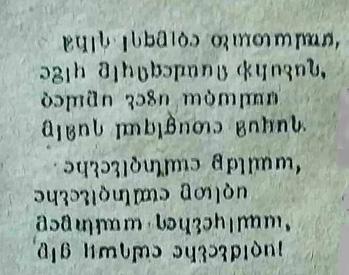

Experimental Typeface Laboratory were established, renewing work on font standardization. The lab’s director, typographic specialist Beno Gordeziani (1894–1975), spearheaded the modernization, redesign, and creation of Georgian typefaces. Under his guidance, existing fonts were updated and entirely new ones produced.
The committee conducted extensive research to catalogue all fonts in use. Existing fonts were classified into three principal and one supplementary families: Text, Mother-Tongue, Clear, and various decorative groups. Fonts were grouped by distinctive characteristics into three conditional categories: 1) body text 2) headline/display and 3) decorative.
In the 1960s, three additional type families were introduced: “University” (by Anton Dumbadze, 1964), “Dumbadze” (1964), “Cursive” (Beno Gordeziani, 1963–1964), and “October” (Anton Dumbadze, 1969), designed mainly for journals, newspapers, and reference books.
During the late Modernist period of the 1950s and after, development continued within Mkhedruli typography. Since print shops lacked large display fonts, publishers commissioned artists to design custom display titles – resulting in a wonderfully diverse array of new, handcrafted headline fonts. Prominent artists emerging during this era included Beno Gordeziani, Anton Dumbadze, Lado Kutateladze, Lado Grigolia, Giorgi Gordeladze, Teimuraz Kubaneishvili, David Dundua, Otar Jishkariiani, Emir Burjanadze, Spartak Tsintsadze, Gogi Tsereteli, and others.
During this period, new display families were introduced: “New Display Light” (Beno Gordeziani, 1960–1961), “New Display Semi-bold” (David Dundua, 1964), “Wide Display” (Anton Dumbadze, 1964), and others.
A State Typeface Laboratory, led by Beno Gordeziani and later Anton Dumbadze, guided these developments for years. This experimental team ensured fonts were legible, harmoniously constructed, and informed by multidisciplinary expertise – including linguists, psychologists, historians, and ophthalmologists. Their efforts
wvlili Seitana qarTuli saSrifto meurneobis ganviTarebis, Sriftebis axali garniturebis Seqmnis, damuSavebisa da warmoebaSi maTi danergvis saqmeSi.
qarTuli enisa da Sriftis istoriaSi internetma axali SesaZleblobebi warmoSva. internetis sawyisisabaziso elementebi saqarTvelos mecnierebaTa akademiis informaciis centrs jer kidev 1980-iani wlebis bolos hqonda: kerZod, es iyo sabWoTa da ucxoeTis sabiblioTeko sistemebSi literaturis Zebnis avtomatizebuli sistema _ guglis martivi analogi.
saqarTvelos presis istoriaSi pirveli statia, romelic mTlianad kompiuterze iyo awyobili, daibeWda 1988 wels gazeT „samSobloSi“.
90-ian wlebSi saxelmwifo Sriftis laboratoria ukve aRar arsebobda da pirveli personaluri kompiuteris gamoCenisas profesionali mxatvrebi, kompiuterTan muSaobis arcodnis gamo Caanacvles programistebma. Sesabamisad, miviReT kompiuterSi Cayrili uamravi saxecvlili, damaxinjebuli Srifti. srulyofili fontis gasakeTeblad sasurvelia
Sriftebis xeliT xatvis sabaziso gamocdileba specifiuri wesebis gaTvaliswinebiT, rac exmareba avtors aso-niSnis da mTlianad Sriftis grafikuli saxis sworad CamoyalibebaSi. aseve gasaTvaliswinebelia dekoratiuli detalebis gamoyenebis dros zomierebis dacvac, gansakuTrebiT sateqste SriftebSi, sadac prioritetia minimalizmi. amitom sWirdeba am process kontroli da specialistebis CarTuloba..
1996 wlis dasawyisSi gamoCnda pirveli, qarTul enaze mecnier reno siraZis mier Sesrulebuli saiti, saxelwodebiT „deda ena“, rasac, imave wels mohyva pirveli qarTuli veb-saiti „Savlego“, romlis avtoria besarion guguSvili. Semdeg iyo saiti „qarTuli vebis tipografia~ (1997), romelic sagangebod mieZRvna qarTul kompiuterul damwerlobas, kodirebas, fontebsa da fontebis gamoyenebas sakuTriv vebSi/internetSi. aRniSnuli veb-saitebi iqmneboda iseT pirobebSi, rodesac unikodis kodirebiT qarTuli teqstis Semcveli veb-gverdis mosamzadebeli (sabeWdi) programa jer kidev ar arsebobda... bolo aTwleulSi mniSvnelovnad gaizarda sazogadoebis Sriftisadmi interesi da dReisaTvis „moZravi asos~ mdgomareoba arc Tu uimedod gamoiyureba. ukve gvaqvs Google-s Sriftebis qarTuli variantebi, Noto Sans Georgian da Noto Serif Georgian, romlebic moicaven qarTuli da laTinuri asoebis srul diapazons. aseve amerikeli dizaineris kristian Svarcis mier daarsebuli Commercial Type-s Sriftis dizainis kompaniaSi SemuSavebuli garnituri „Graphik“-is qarTuli versia, fontebi _ „Eurostile GEO“, „GF Alaverdi“, „Dinamo“, „Fira Go“ (qarTuli registri), „Mersad“-i da sxva Sriftebi, romelTa avtorebi umetesad axalgazrdebi arian, rac am sferos ganviTarebis did imeds iZleva.
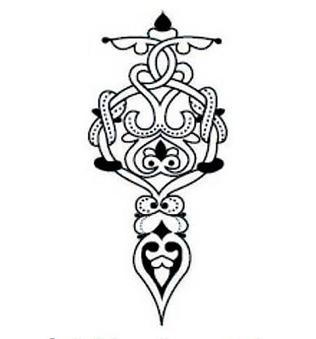
significantly advanced Georgian typography through design research, new font creation, and implementation.
The advent of the Internet brought new opportunities to Georgian type and language. In the late 1980s, with the Academy of Sciences’ Information Center, Georgia had an early automated literature search tool – similar to a primitive Google. In 1988, the first fully computercomposed article in Georgian was published in the newspaper Samshoblo (Homeland).
By the 1990s, the State Typeface Laboratory had dissolved. As personal computers emerged, artists – lacking digital literacy – were supplanted by programmers, resulting in a profusion of distorted and inelegant digital fonts. Proper font creation ideally requires hand-drawn experience, taking into account technical rules that help authors design coherent letterforms. Especially in text typefaces, decorative elements should be restrained – and expert oversight remains essential.
In early 1996, the first Georgian-language scholarly website, “Deda Ena”, was created by Reno Siradze; later that year, the first Georgian web portal “Shavlego” was launched by Besarion Gugushvili. In 1997, “Georgian Web Typography” was introduced, dedicated to web typography, encoding, fonts, and their digital application – though at that time no software existed for preparing Unicode Georgian web pages.
Over the past decade public interest in typography has grown. Today the state of Movable Type is far from bleak. We now have Georgian variants of Google Fonts, including Noto Sans Georgian and Noto Serif Georgian, offering full Georgian–Latin character sets. Additionally, designer Christian Schwarz’s commercial type foundry introduced a Georgian version of Grafik, and new fonts such as Eurostyle GEO, GF Alaverdi, Dinamo, Fira Go (Georgian), Mersad, and others – many designed by young creators – suggest a bright future for Georgia’s typographic landscape.
„iqneb sulac ar xar amis damweri, amitomac sdeb da sdeb _ vera da ver gagibedavs dawyeba…“ heminguei
es striqonebi adre Cems erT miniaturas wavumZRvare epigrafad.
axla igive sityvebs hemingueis meored vesesxebi. marTlac, saidan unda daiwyo, roca droTa mdinarebas Sereuli ambebi, wlebis Semdeg sruliad moulodnelad ikveTebian da wresaviT ikvrebian. da mainc „vbedav~ da viwyeb... profesor nodar tabiZes, galaktionis ZmisSvilsa da mis Rirseul memkvidres, JurnalistTa Taobebis aRmzrdelsa da damkvalianebels, mere ukve maT erTgul megobars, erT werilSi „bediswerasaviT damgzavrebuli adamiani“ vuwode, rasac albaT misi bevri namowafaric gaiziarebda. aseTia didi adamianebis xvedri, midian Cvengan da mainc CvenTan rCebian maTTan dakavSirebuli ambebiTa da mogonebebiT.
amis dasturad, amjerad mravalTagan erT epizods gavixseneb: universitetis damTavrebidan TiTqmis oci wlis Semdeg, erTxel, „dilis gazeTSi“ stumrobisas, batonma nodarma sruliad moulodnelad miTxra: _ xom ar ggonia, damaviwyda, rom Cemi erTi davaleba _ „saxuravi“ ar dagiweria da valad gadevso?..
Cems gaocebas sazRvari ar hqonda... namdvilad ar megona, batoni nodari im istoriis mere, romelsac aqve giambobT, kidev rameTi Tu gamakvirvebda: ...afxazeTidan gamosvlis pirvel dReebSi, roca danugeSebas veZebdi yvelgan da yvelasgan, me da Cemi jgufeli gigla gobeCia baton nodarTan mivediT
“Perhaps you’re not meant to write this at all, and that’s why you keep putting it off – you simply can’t muster the courage to begin.” (Hemingway)
I once used these lines as an epigraph for a miniature piece I wrote. Now, I borrow Hemingway’s words again. Indeed, where does one begin, when stories entwined with the flow of time resurface years later, unexpectedly intersect, and form a circle? And yet, I begin…
In a letter, I once called Professor Nodar Tabidze – a worthy heir to Galaktion’s legacy, mentor and guide to generations of journalists, our dean, and later, a loyal friend – “a man destined to accompany one like fate.” Many of his former students would likely echo that sentiment. Such is the fate of great individuals: they depart from us, and yet remain with us.
To illustrate this, I’ll recall just one of many stories:
Nearly two decades had passed since I graduated from university, when during a visit to Morning Newspaper, Mr. Nodar suddenly asked me: “You don’t think I’ve forgotten that one of your assignments – The Rooftop – remains unwritten, and that you still owe it to me, do you?”
My astonishment knew no bounds… I truly didn’t expect Mr. Nodar could still surprise me, especially after the incident I’m about to recount.
In the early days after I fled Abkhazia, when I was seeking comfort from everyone and everywhere, my classmate Gigla Gobechia and I went to see Mr. Nodar at the university. He tried to console both me and himself: “We will definitely return to Abkhazia. I’ll come to your home myself with the help of that map,” he said, as he began rummaging through a folder. Soon, he found an envelope and pulled out a small yellowed page, torn from a notebook. I recognized it instantly: it was the map drawn nearly ten years earlier at our farewell


universitetSi. batoni nodari mec mamxnevebda TiTqos da sakuTar Tavsac:
_ nato, Cven aucileblad davbrundebiT afxazeTSi. me aucileblad Camoval Sens saxlSi am „rukis“ mixedviT, _ miTxra bolos da Tan saqaRaldeSi raRacas dauwyo Zebna. maleve ipova konverti, saidanac patara gayviTlebuli qaRaldi amoiRo. umal vicani Cemi ubis wignakidan amoxeuli furceli, romelzec TerTmeti wlis winaT, universitetTan gamosamSvidobebel banketze, rukis saxiT movuniSnesaviT baton nodars enguris xididan Cems saxlamde mimavali gza.
mogvianebiT, am ambisadmi miZRvnil CanaxatSi _ „gza Sinisaken“, vwerdi:
„axla is „ruka“ mxolod Cemi saxlisaken ki ara, zogadad, afxazeTisaken mimavali gzis simbolod qceuliyo. maSin vifiqre, Cven mxolod amgvari mexsiereba, erTguleba dagvabrunebs-meTqi Sin“.
raRac amdagvari ambavi xdeboda axlac... batoni nodari wlebis ganmavlobaSi, TiTqos sagangebod gvizogavda aseT uCveulo epizodebs, riTac xSirad rTul da usaxur sinamdviles gviferadebda Cven da albaT, uferadebda sakuTar Tavsac.
banquet near the university, marking the road from the Enguri Bridge to my house.
Later, in a sketch dedicated to this memory – The Road to Home -I wrote:
“That map no longer simply marked the road to my house; it had become a symbol of the road to Abkhazia in general. I thought then, only such memory and loyalty could one day bring us home again.”
Something like that was happening again… It was as if Mr. Nodar had been saving such remarkable episodes for us.
Of course, I remembered the strangely titled assignment from my student days – The Rooftop – which I had begun but never finished. After so many stormy years and days, how could I have imagined he would still remember it? And yet, he spoke of it aloud only now. That moment, I once again tried to reflect on the phenomenon of the rooftop…
In the meantime, Mr. Nodar passed away…
He left, and along with the sorrow, the unfinished assignment –The Rooftop – remained as a debt. As did unanswered questions: why did he choose that title in particular? What was he hoping I would say? Perhaps he had imagined, in his own way, the topic I would invent – The Rooftop – to which life gave an entirely different narrative…
me, ra Tqma unda, gamaxsenda studentobis droindeli, Cem mier Tavidanve ucnaurad aRqmuli davaleba _ „saxuravi“, romlis dawera daviwye kidec, magram miviCnie, rom ar gamomivida da Sevwyvite. amdeni qarcecxliani wlisa da dRis Semdeg ki, rogor warmovidgendi, rom is baton nodars kvlavac exsomeboda, magram xmamaRla ratomRac mxolod axla „gaamxelda“. maSin kidev erTxel Sevecade, „saxuravis“ fenomenze davfiqrebuliyavi...
amasobaSi batoni nodari am wuTisoflidan wavida... wavida da sevdasTan erTad, valad damrCa Seusrulebeli misi davaleba _ „saxuravi“ da pasuxgaucemeli kiTxvebi: ratom SemirCia maincdamainc es saTauri da ris Tqmas eloda Cemgan?
baton nodars Taviseburad warmoedgina albaT Cem mier SeTxzuli Tema _ „saxuravi“, romelsac cxovrebam uCveulo siuJeti mouZebna... saxuravi „mziani dRea, mawvalebs fiqri da zecas vumzer saxuravidan.“
terenti graneli
„saxuravi _ ese ars, raic zeidam daexurvis cxovelsa, saxlsa, WurWelTa da misTanaTa“... _ ganmartavs Tavis sworupovar leqsikonSi sulxan-saba.
„raic zeidam daexurviso“...
Cveni saxlis saxuravi ramdeni welia ukve, ubralod saxls ki ara, siTbosa da siyvarulSi galeul wlebs, Camqral buxarTan Tu gaciebul kedlebTan miyuJul, dauviwyar mogonebebs, jadosnur ambebs „axuravs“ da naRverdaliviT inaxavs, romelsac erTi sulis SebervaRa sWirdeba da umalve abrialdeba.

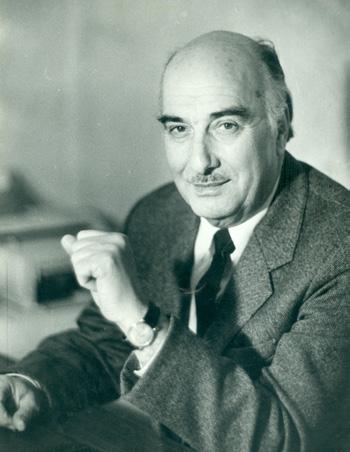
Rooftop
“A sunny day, my mind is troubled,/and I gaze at the sky from the rooftop.”
“‘Rooftop’ – that which covers from above an animal, a house, vessels, and the like…” explains Sulkhan-Saba in his masterful dictionary.
“That which covers from above…”
For a long time now, the rooftop of our house hasn’t merely covered the house itself – it has sheltered years steeped in warmth and love, unforgettable memories huddled beside an extinguished hearth or chilled walls, magical stories preserved like glowing embers needing only a single breath to blaze to life.
Witness to generations, the moss-covered rooftop has withstood sunshine and storms, snow and rain, winds and tempests, frost and scorching heat. But lately, it can bear no more – cracks have appeared here and there…
The house leaks, and so does the long-cold hearth, thirsty for warmth – often haunting my dreams… The rooftop must be repaired! – whispers my own heart, and I know there’s no other choice: I must go.
As if it were arranged, the day before my departure I get a call from
Taobebis momswre, xavsmodebulma saxuravma ramden darsa da avdars, Tovlsa da wvimas, qarsa da qariSxals, yinvasa da mzis mcxunvarebas gauZlo da mets veRar umklavdeba, bolo xanebSi alag-alag bzari epareba... awvims saxls da awvims TviTonac siTbomonatrebul buxars, romlebze dardi xSirad sizmarSic Camyveba xolme... _ saxuravi SesakeTebelia! _ CamZaxis Cemive gulisxmac da vgrZnob, sxva gza ar aris, dauyovnebliv unda gavemgzavro. daTqmuliviT, gamgzavrebis wina dRes darekavs didi xnis unaxavi, erTi Cveni Soreuli naTesavic da Sexvedras damiTqvams, Tanac uciloblad wasvlamde. droTa mdinarebas Sereuli ambebi, wlebis Semdeg, sruliad moulodnelad swored aq ikveTebian da wresaviT ikvrebian... Soridan daiwyo... misTvis, amieridan CemTvisac, dauviwyari im droidan, saidanac TiTqmis eqvsi aTeuli weli iyo gasuli.
_ me Seni cxonebuli mSoblebis vali minda dagibrunoT. maSin im didbunebovanma adamianebma, romelTa msgavsni awi arc daibadebian, didi gansacdelisgan mixsnes. me ki, samwuxarod, sicocxleSi verc vali gadavuxade da verc madloba vuTxari, rac dRemde ar masvenebs. ar minda, es sadardeli im qveynadac gamyves da maTTan Sexvedris iqac meridebodes. me maT eklesiaSi xSirad vunTeb sanTlebs, magram minda Cems saxelze TavianT saxlSic daunToT, _ meubneba da gadakecil konvertTan erTad, qaRaldSi faqizad gadaxveul sanTlebs mawvdis. bavSvobidan, mSoblebisgan bundovnad maxsovda im valis ambavi, magram gamorTmeva viuare, sanTlebs ki waviReb da maT saflavebze davanTeb-meTqi. rom ityvian, qva aagdo da Tavi SeuSvira. _ im saqmes moaxmareT, risi gakeTebac yvelaze metad gauxardebodaTo, _ ise mtkiced Tqva, Seetyo, gadawyvetilebas ar Seicvlida. metad arc SevwinaaRmdegebivar. fiqri maSinve Cveni saxlis xavsmodebuli da dabzaruli saxuravisken gameqca. mis SekeTebaze metad imqveynadac ra gaaxarebdaT Cvens ded-mamas, romelTac sul mgonia, rom TavianTi ezo-kari arasodes miutovebiaT da sul iq fusfuseben. uceb im azrmac gamielva, es daviwyebuli vali saerTodac, maT xom ar gamoagzavnes saxlis saxuravis SesakeTeblad-meTqi! zustadac rom saxlis saxuravis SesakeTeblad... batoni nodari, an Cemi mSoblebi da me ras wamovidgendiT, rom droTa mdinarebas Sereuli ambebi, wlebis Semdeg, sruliad moulodnelad, ase gadaikveTebodnen, wresaviT Seikvrebodnen da gaamTlianebdnen erTmaneTisgan sruliad gansxvavebuli mniSvnelobis iseT sityvebs, rogorebicaa _ „vali“ da „saxuravi“!
am wris SuagulSi ki aRmovCndebodi me mistikuri warmosaxviT: „mziani dRea, mawvalebs fiqri da zecas vumzer saxuravidan“!
da ra axlos, sul raRac erTi xelis gawvdenaze, iqneboda iqidan zecac!

a distant relative I haven’t seen in years. She insists on meeting –before I leave, without fail.
And it’s right there, in the current of time-bound stories, that long-scattered events from decades ago suddenly intersect again, circle around, and reconnect. She began from afar… from a time now unforgettable to both her and me, nearly six decades past.
“I want to repay the debt I owe to your late parents,” she said. “Back then, those noble people – whom the world will likely never see again – saved me from great misfortune. But sadly, I never got the chance to repay them in their lifetime, nor to thank them, and that still torments me. I don’t want to carry this sorrow to the next world and feel shame in facing them there. I light candles for them often at church, but I’d like you to light one in my name as well,” she said, handing me delicately wrapped candles along with a folded envelope. I vaguely remembered the story of this debt from childhood – my parents had mentioned it – but I refused to accept the money. I told her I’d take the candles and light them at their graves.
“Use it for what they would have been happiest to see done,” she said, so firmly it was clear she wouldn’t change her mind.
I didn’t insist further. My thoughts flew immediately to the mosscovered, cracked rooftop of our house. What could have brought my parents more joy – even in the afterlife – than its repair? I’ve always felt that they never truly left our home, that they’re still there, bustling about. The thought even struck me – what if it was they who sent this forgotten debt, precisely for the rooftop?
Yes, for the rooftop indeed…
Could my parents, or Mr. Nodar, or I myself ever have imagined that stories woven into the current of time would one day unexpectedly converge – forming a circle – and unify words so vastly different in meaning as debt and rooftop?
And at the center of that circle stood I, in a mystical reverie:
“And I gaze at the sky from the rooftop…”
How close – within arm’s reach – Sky must have seemed from there!


